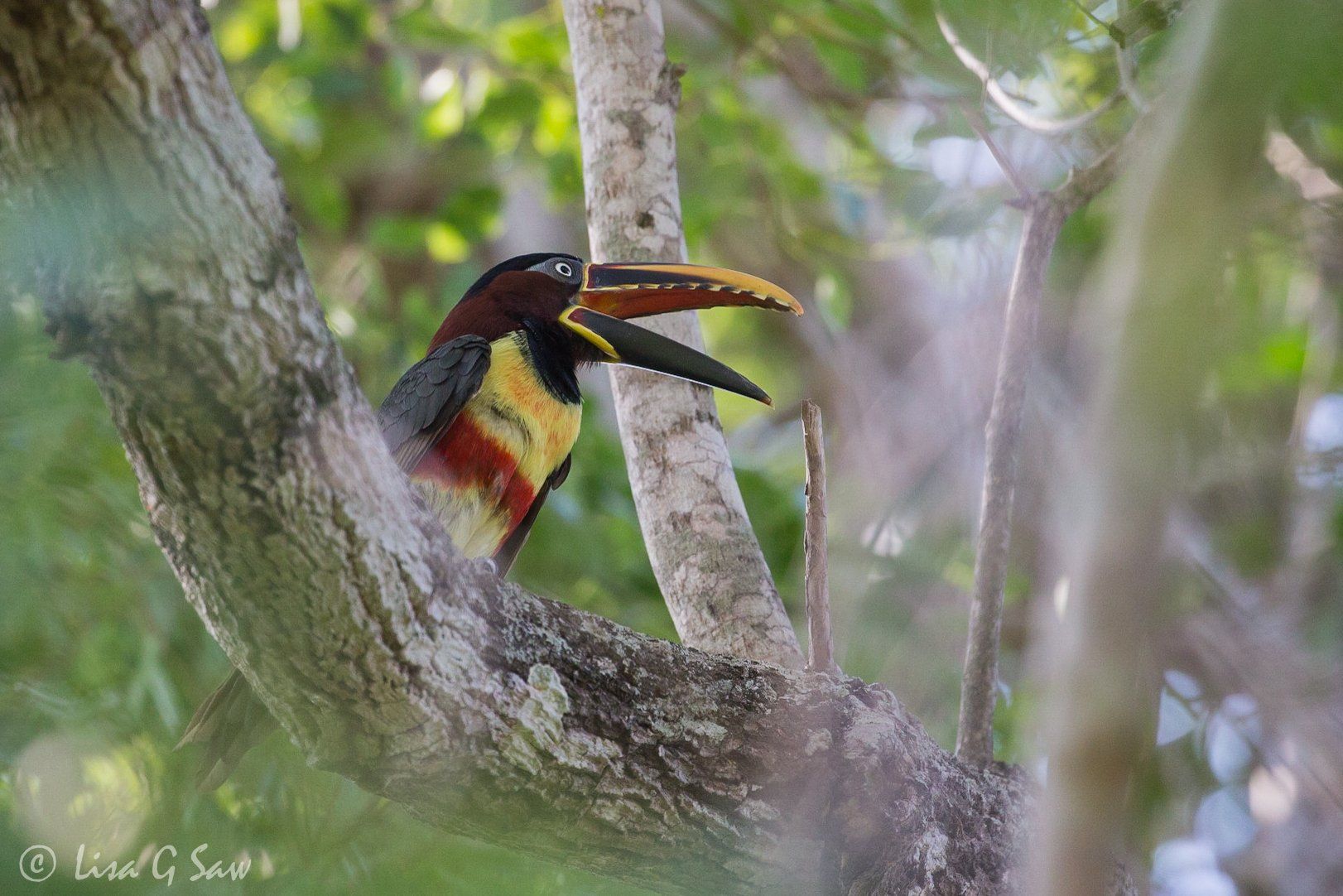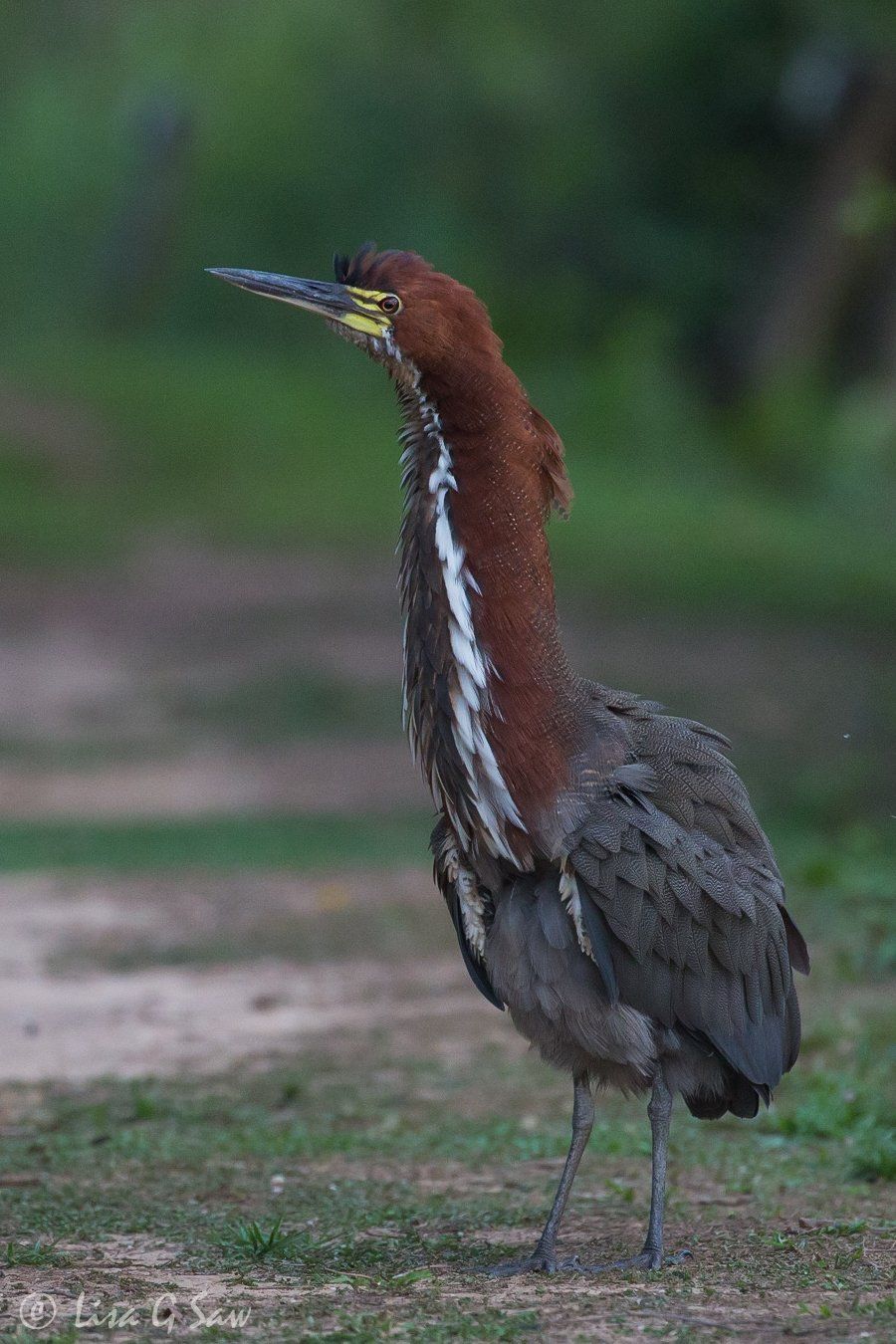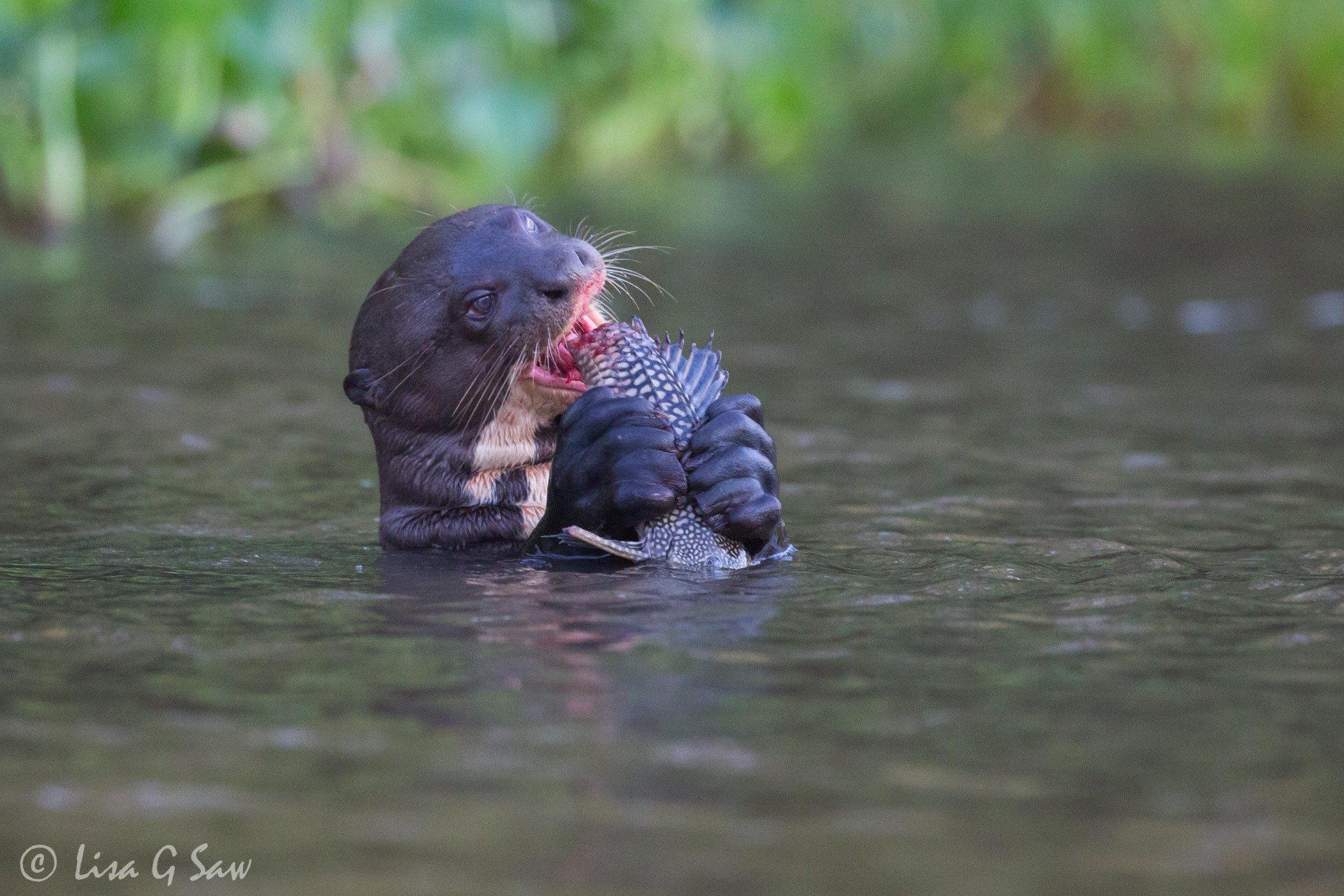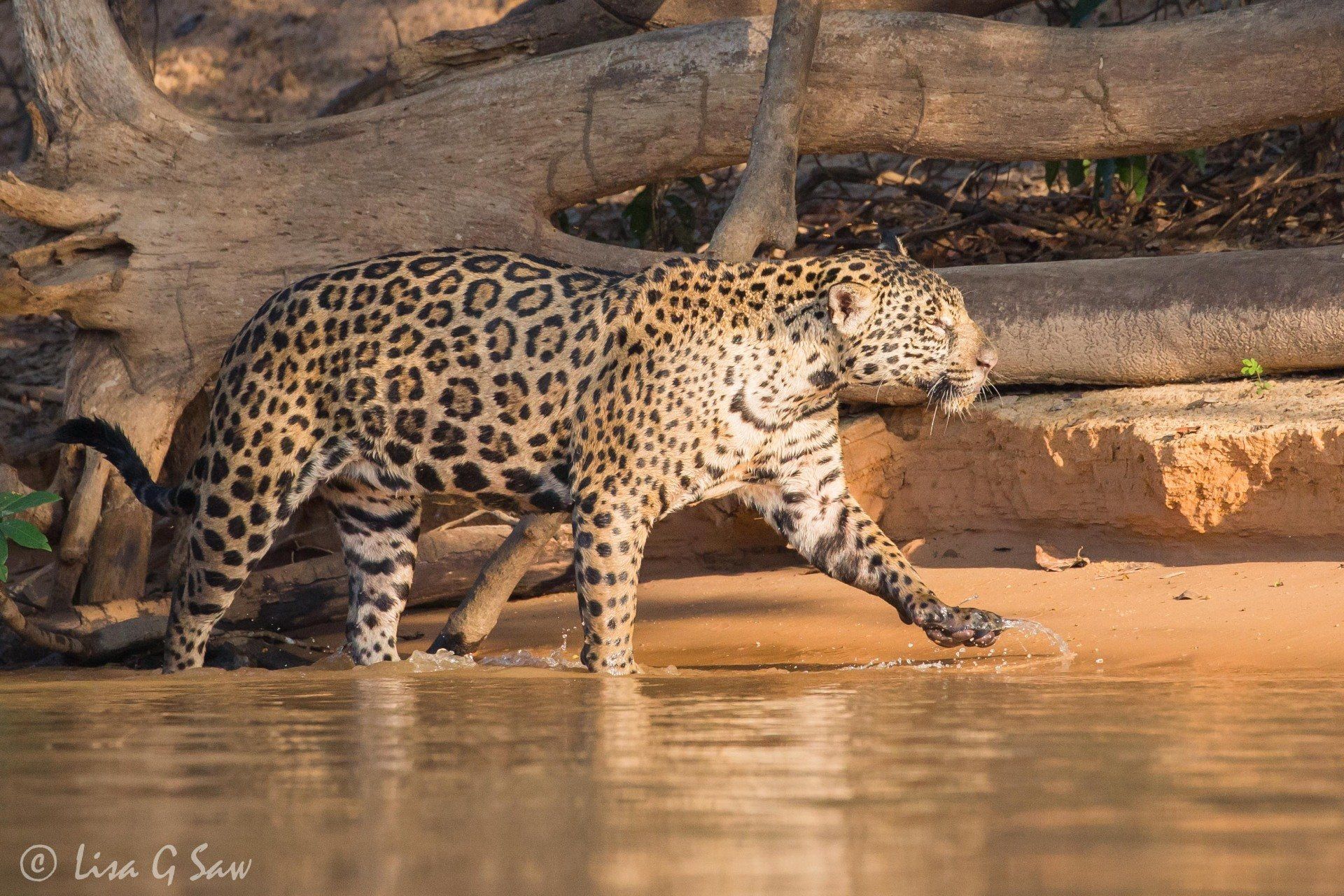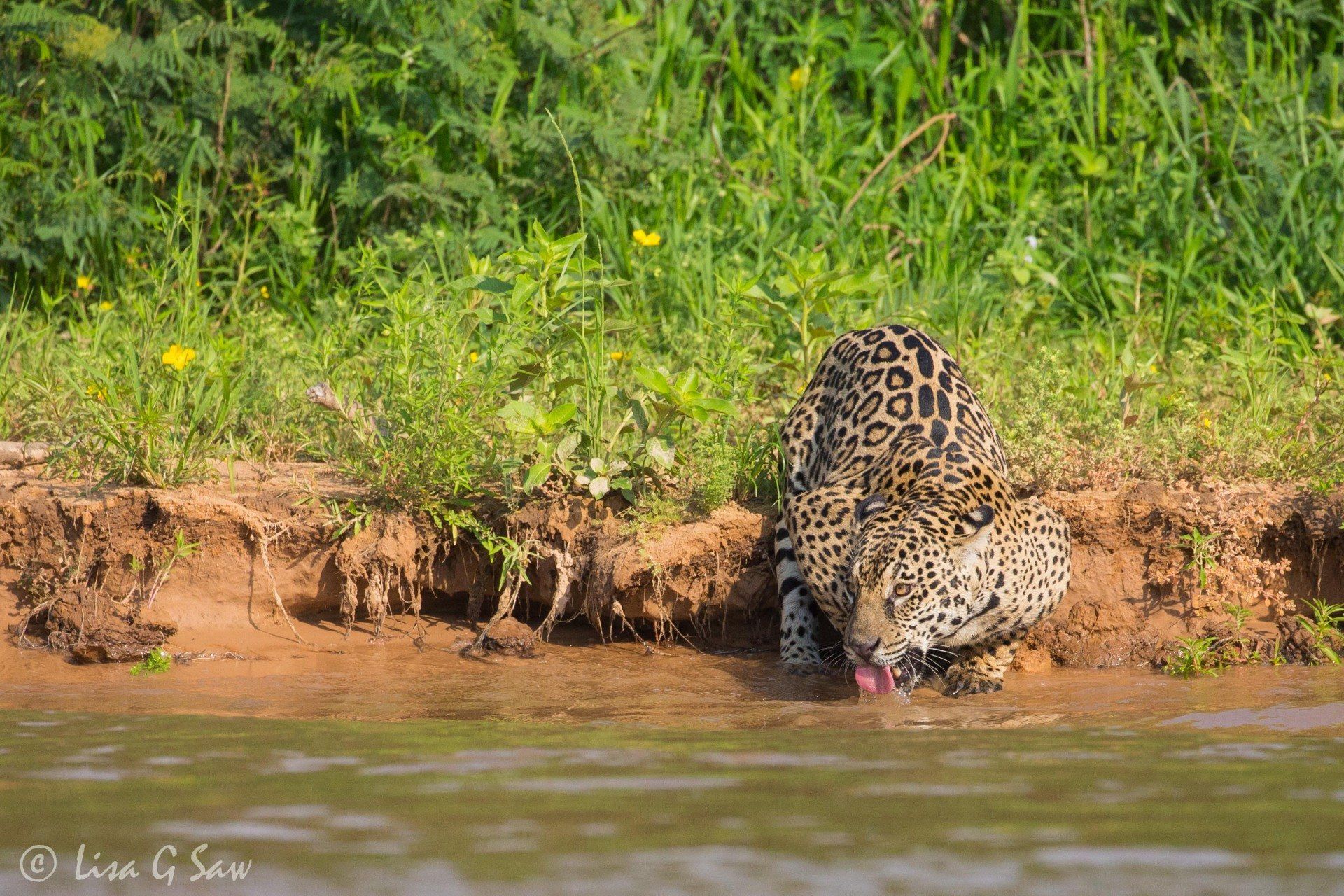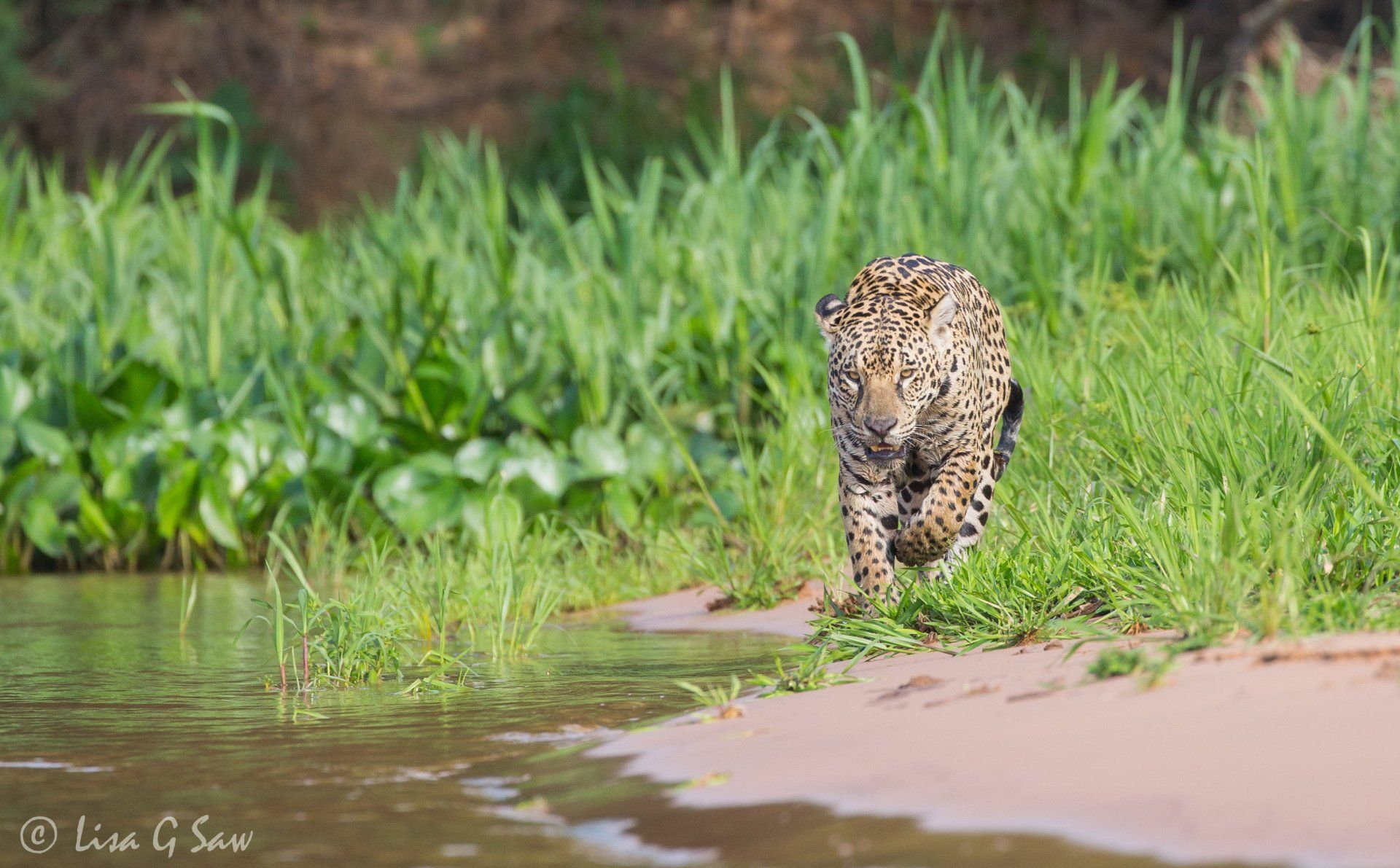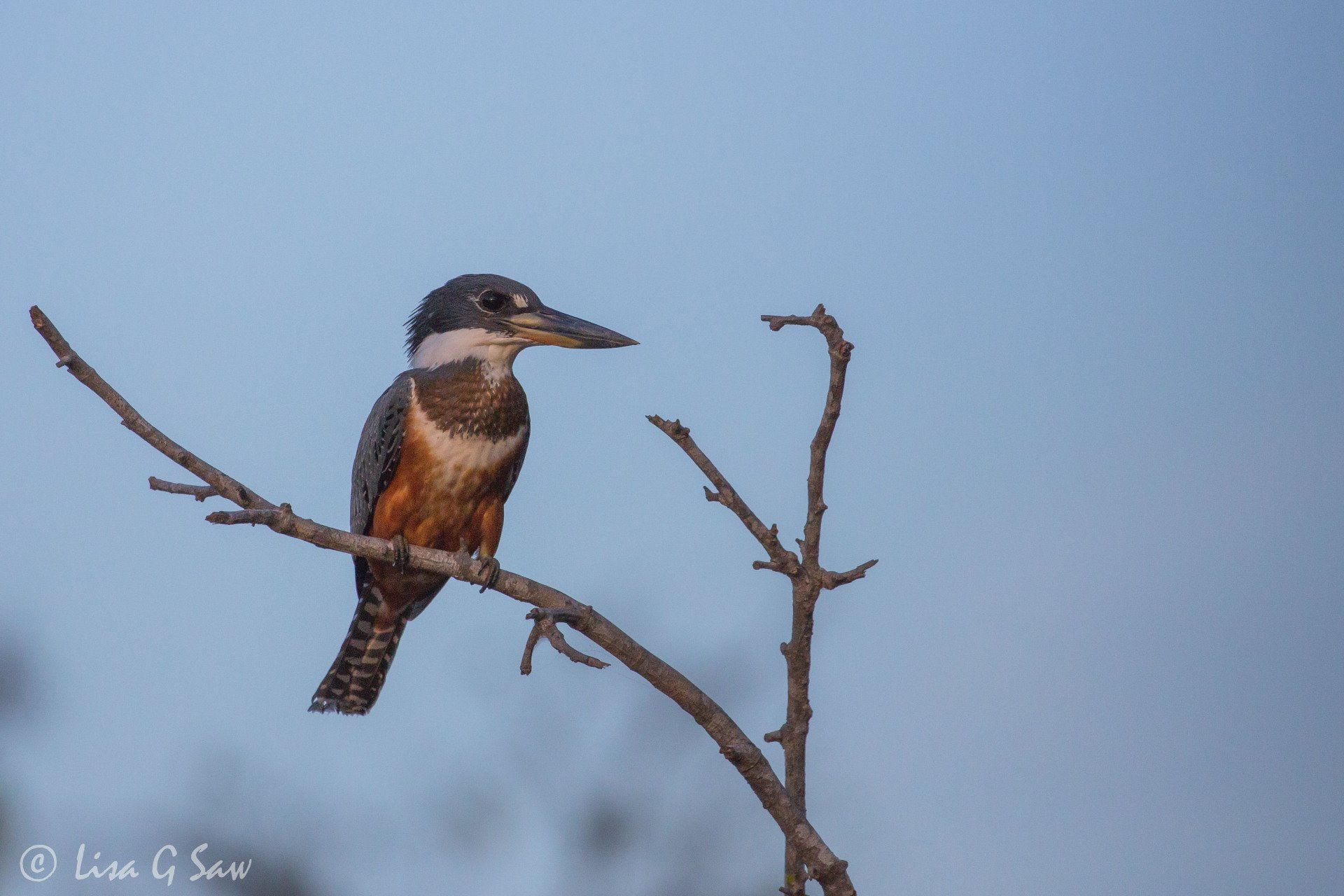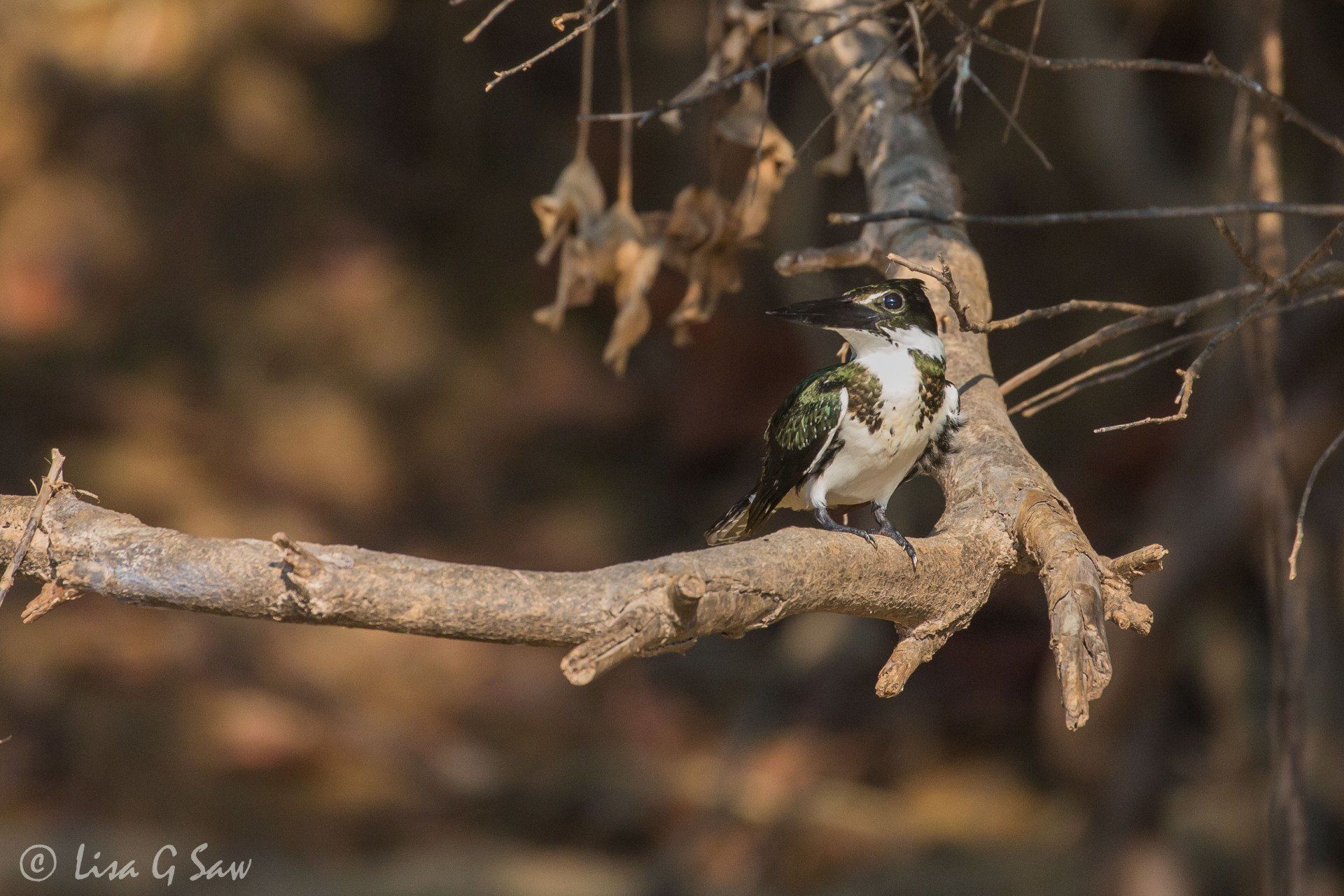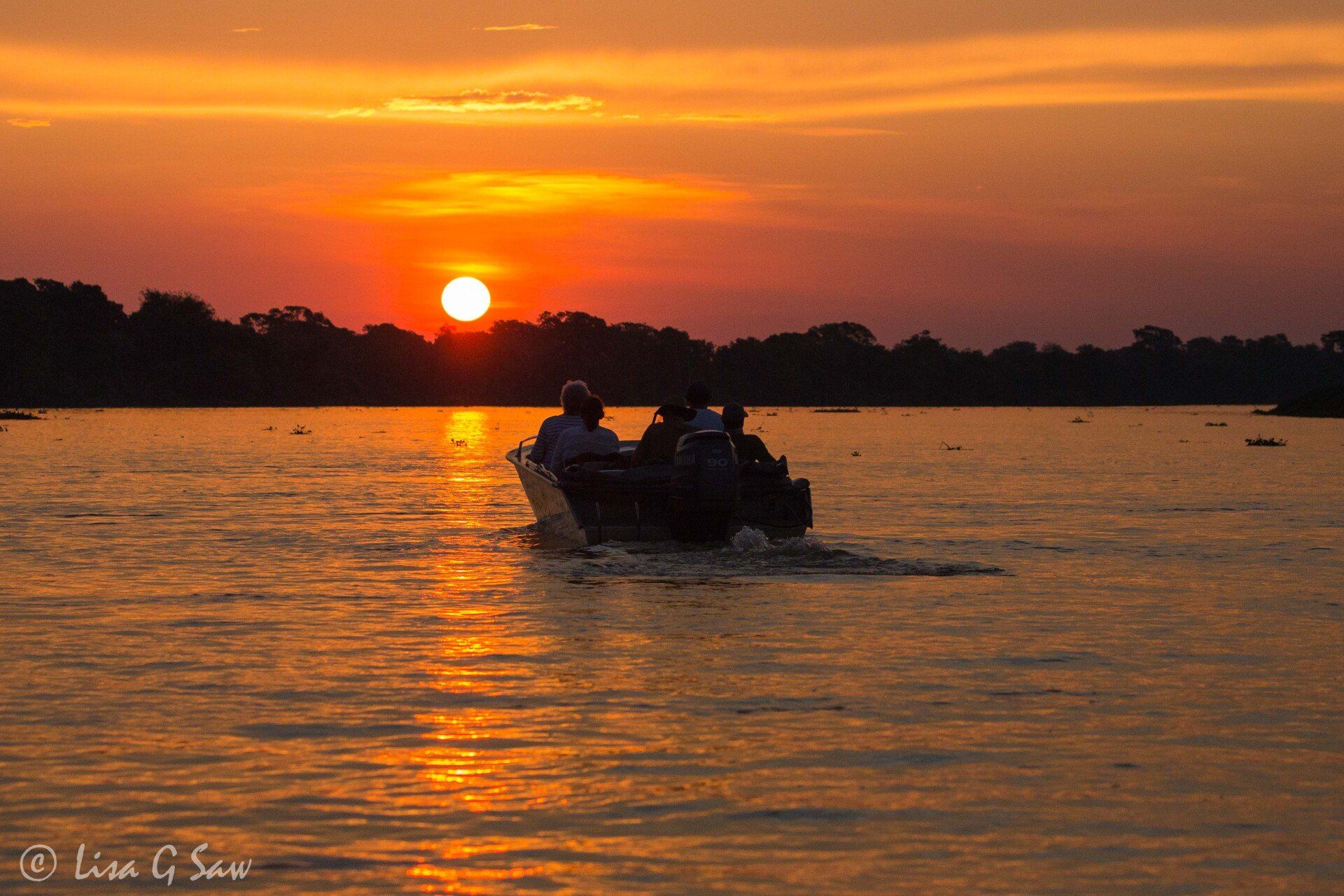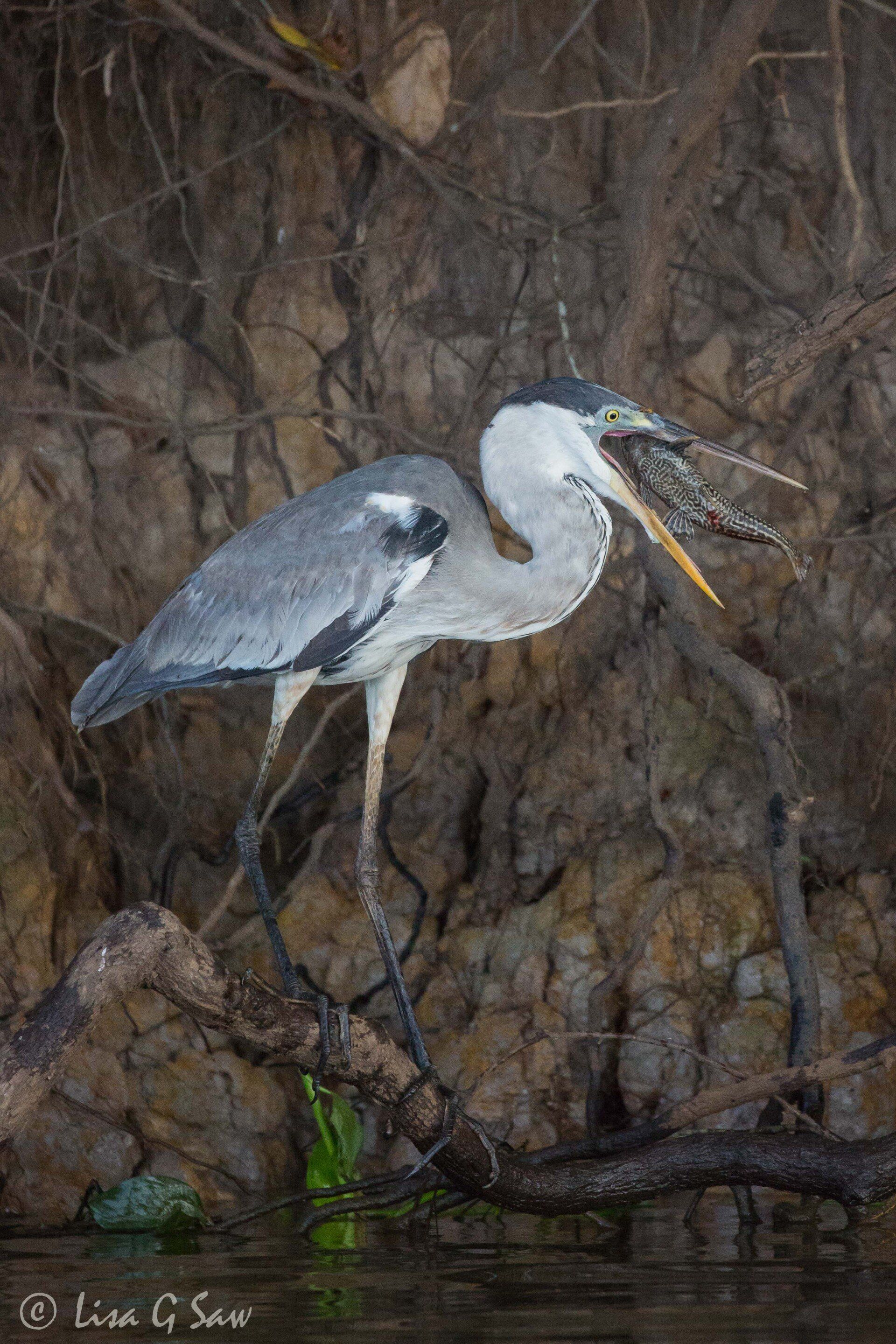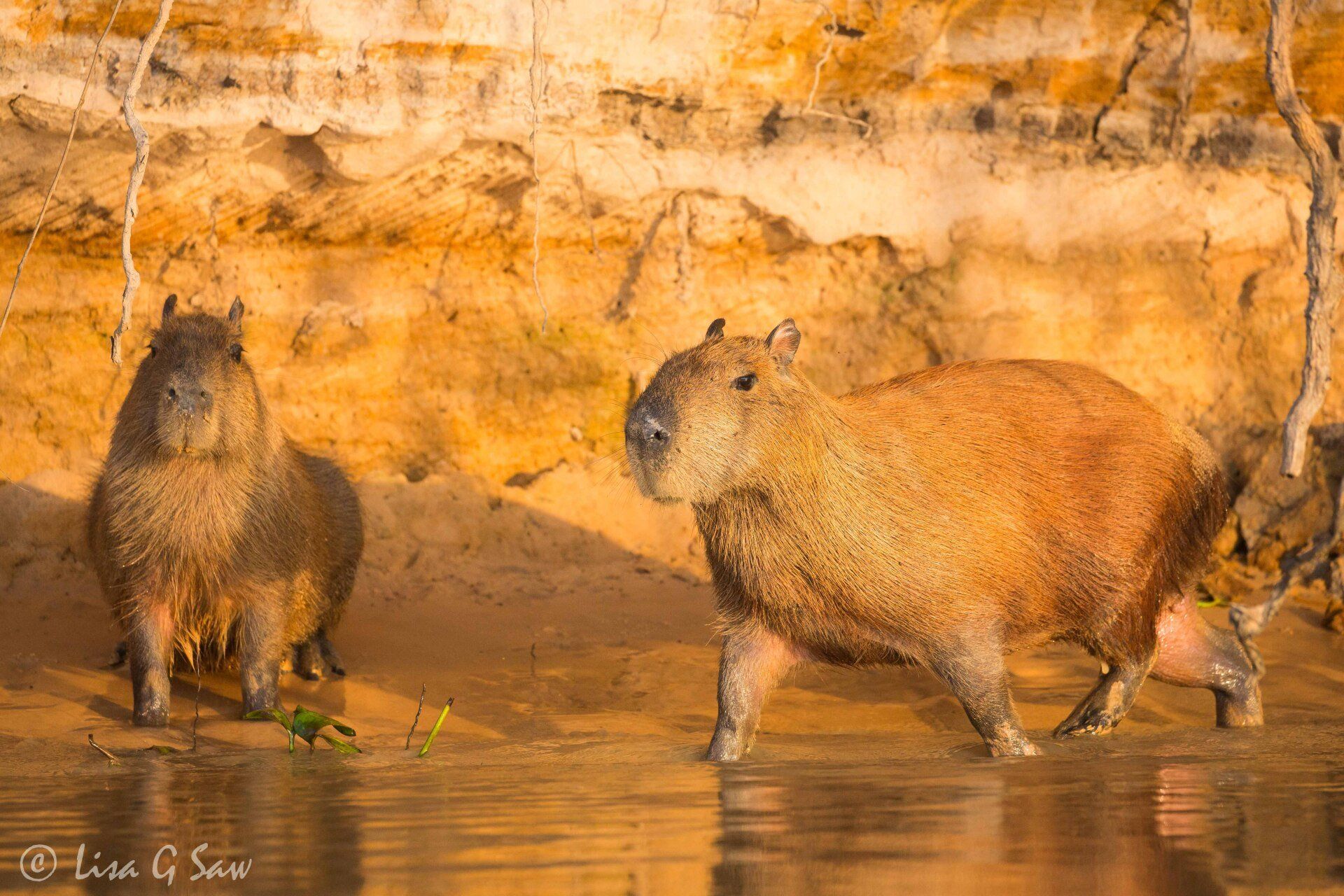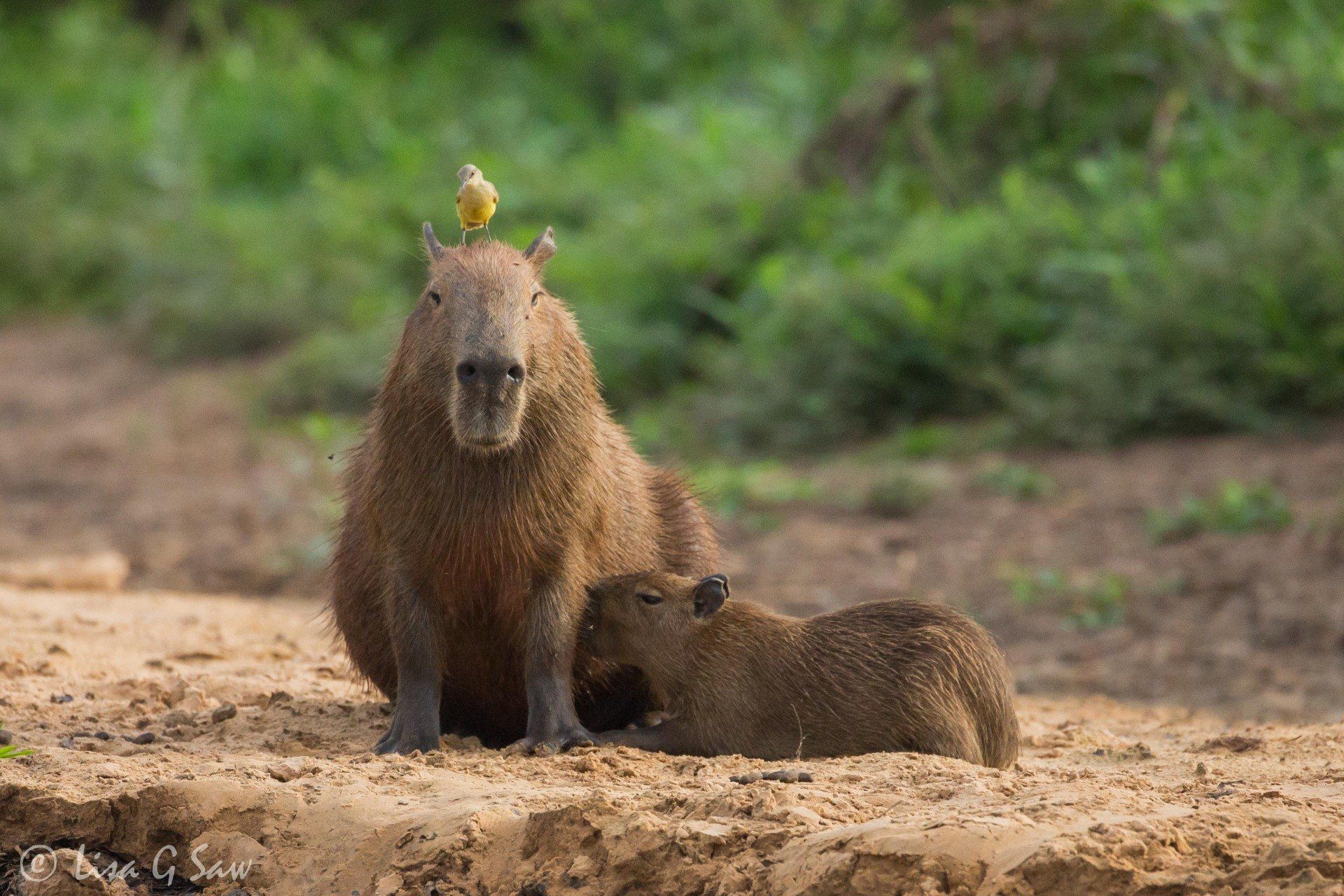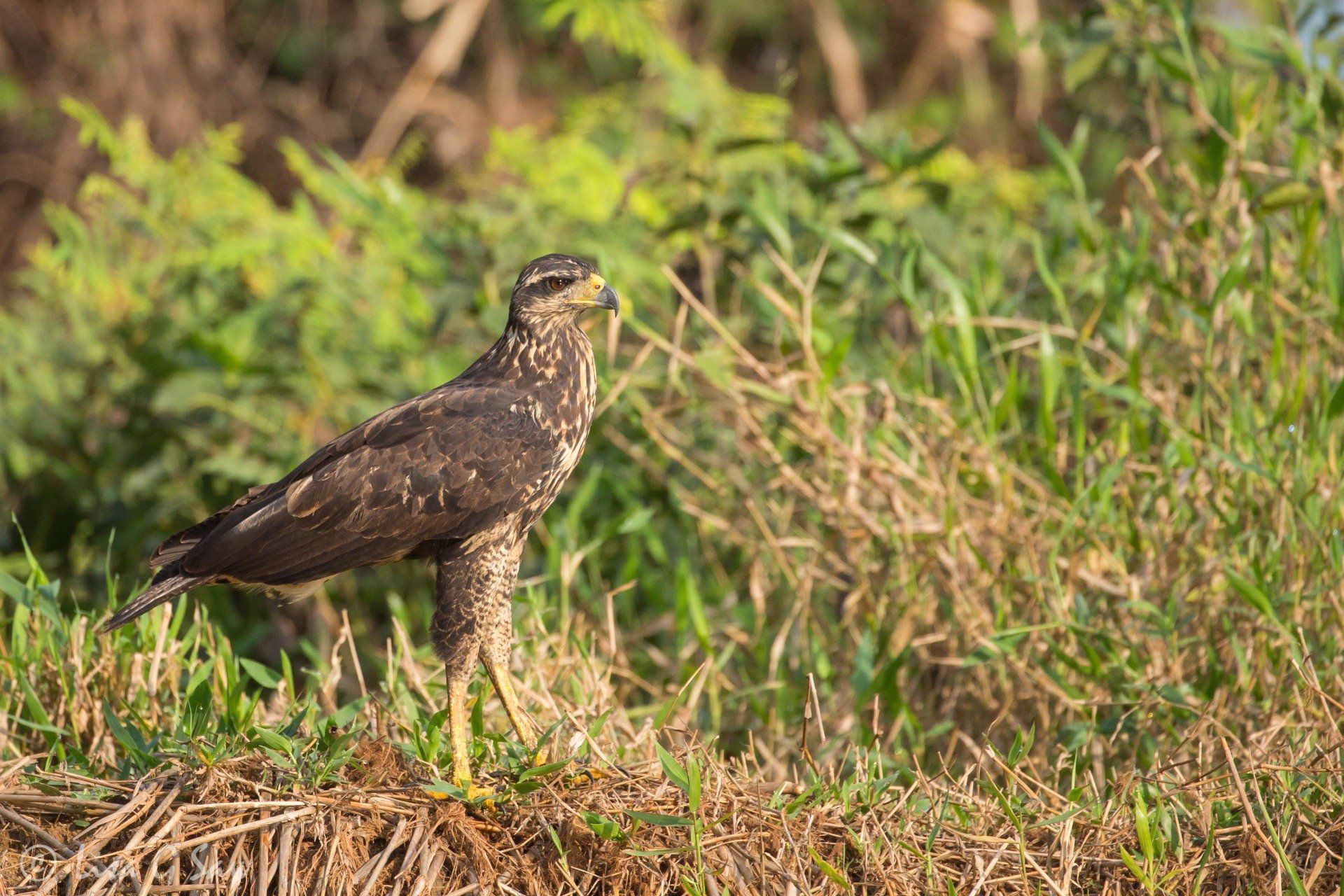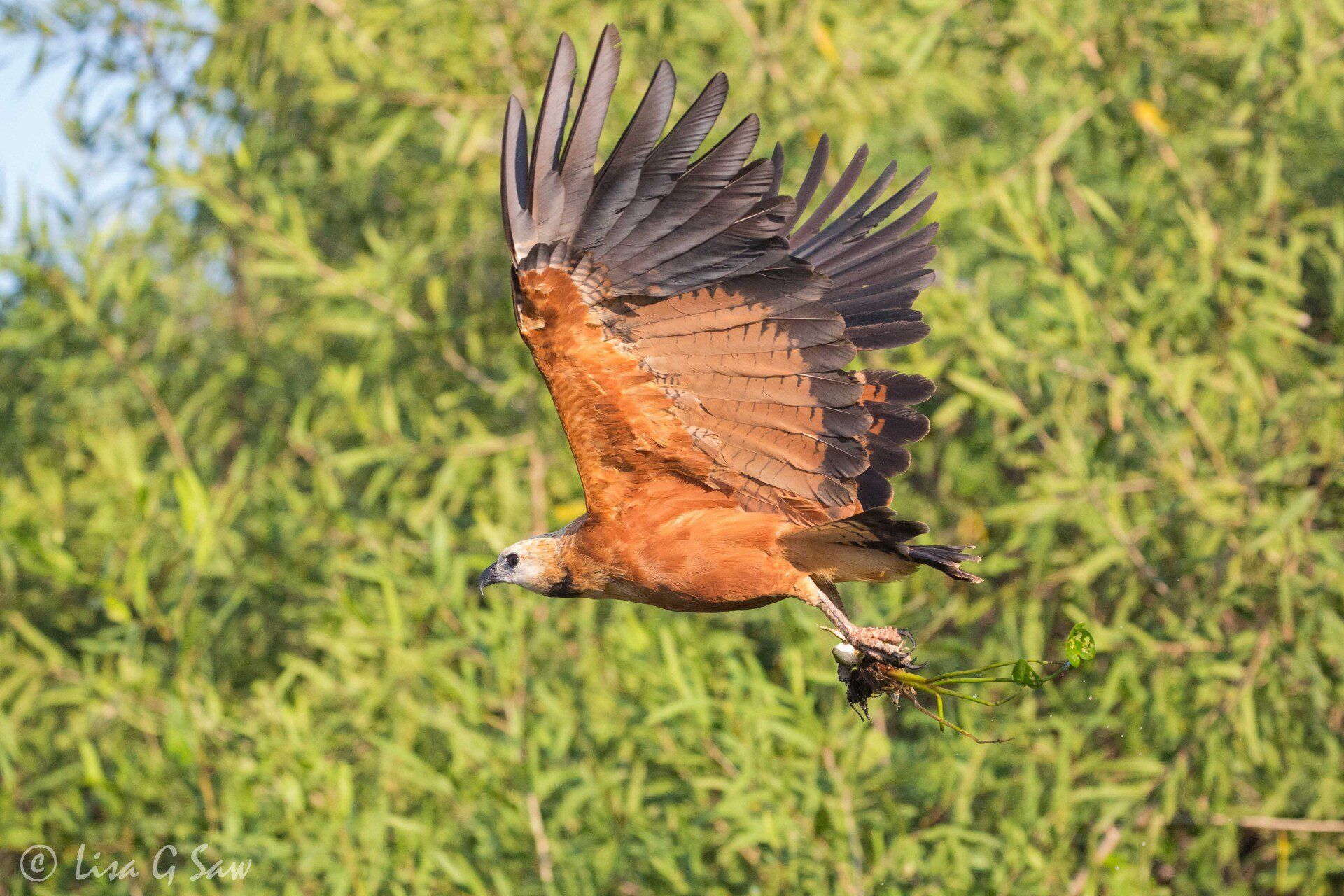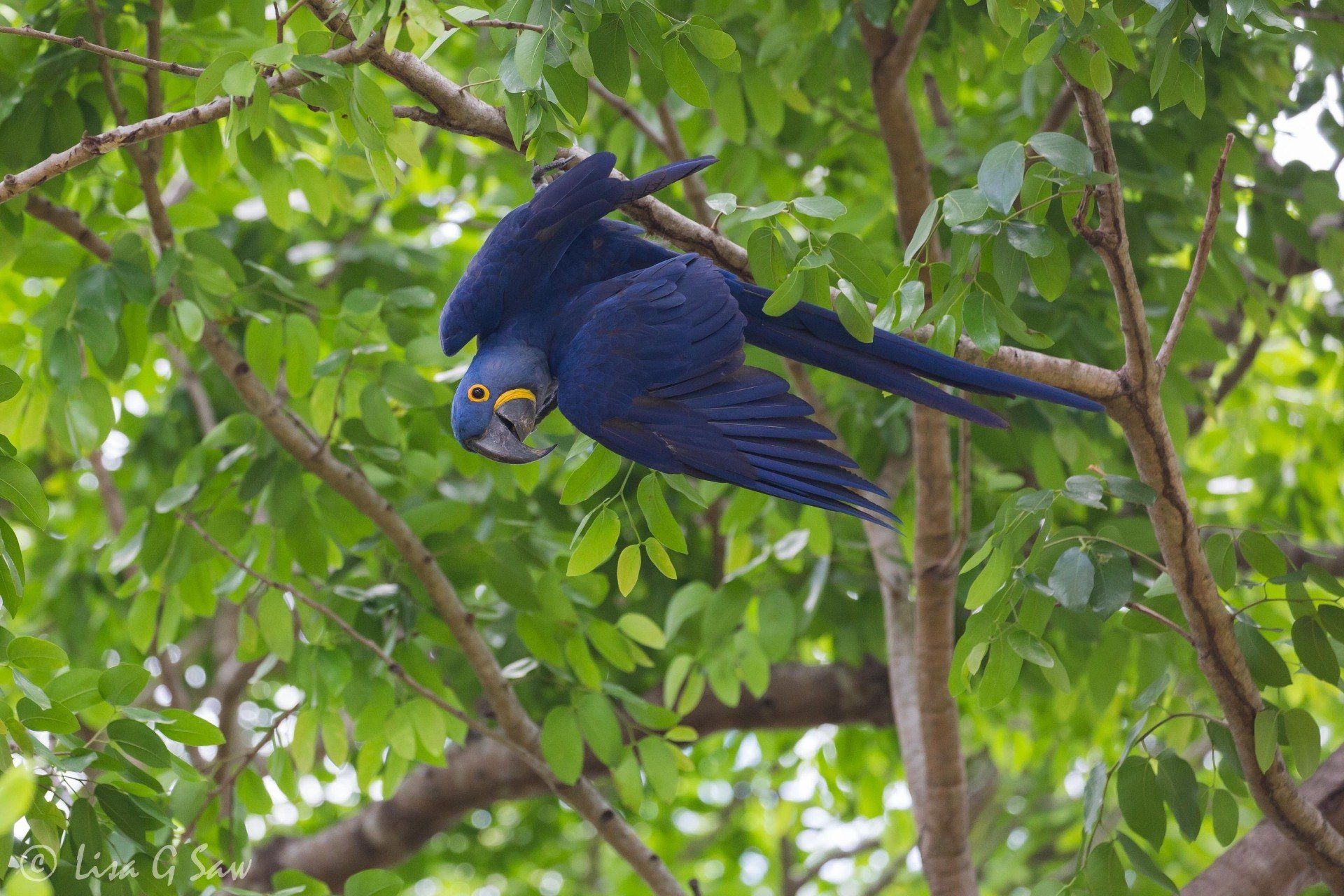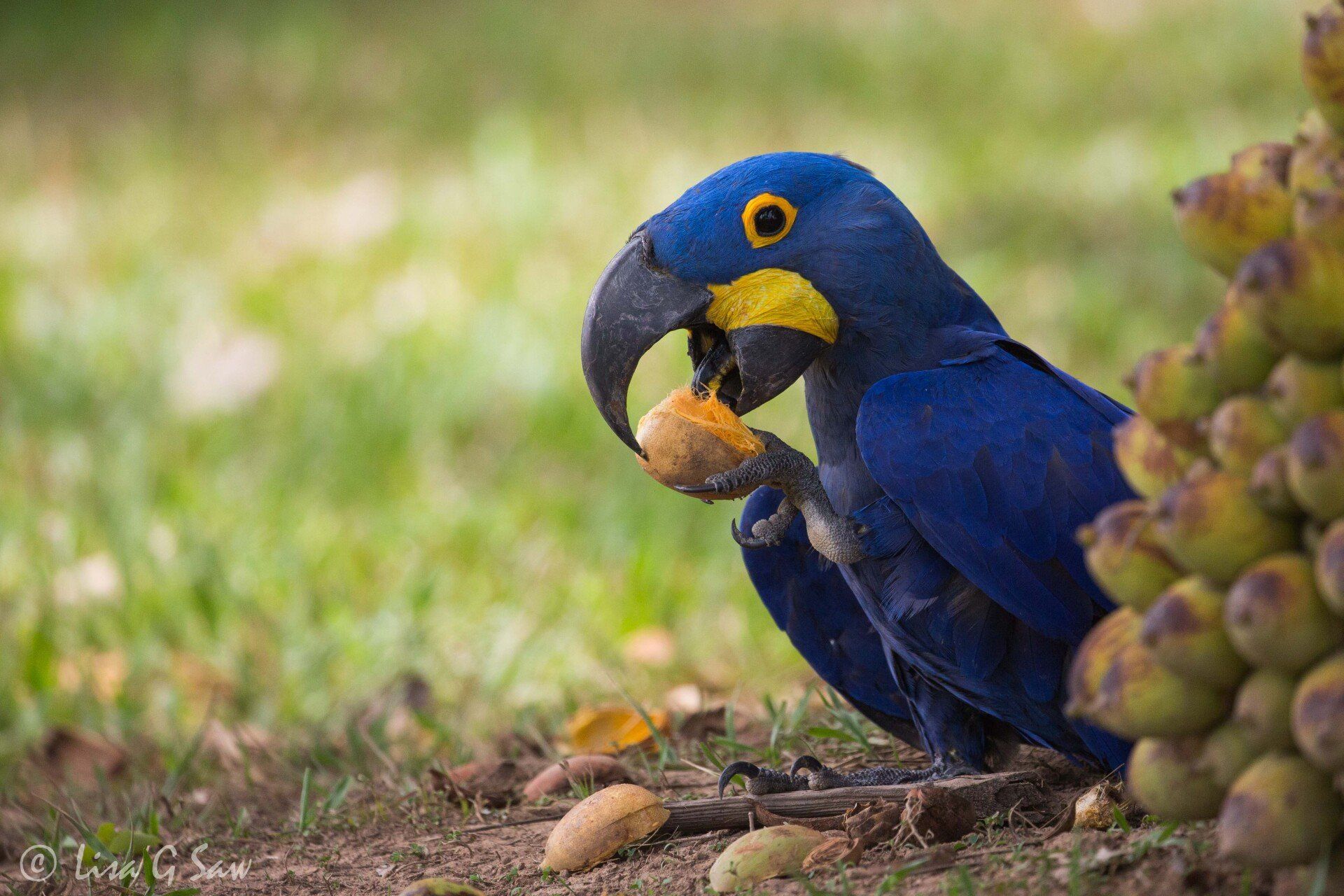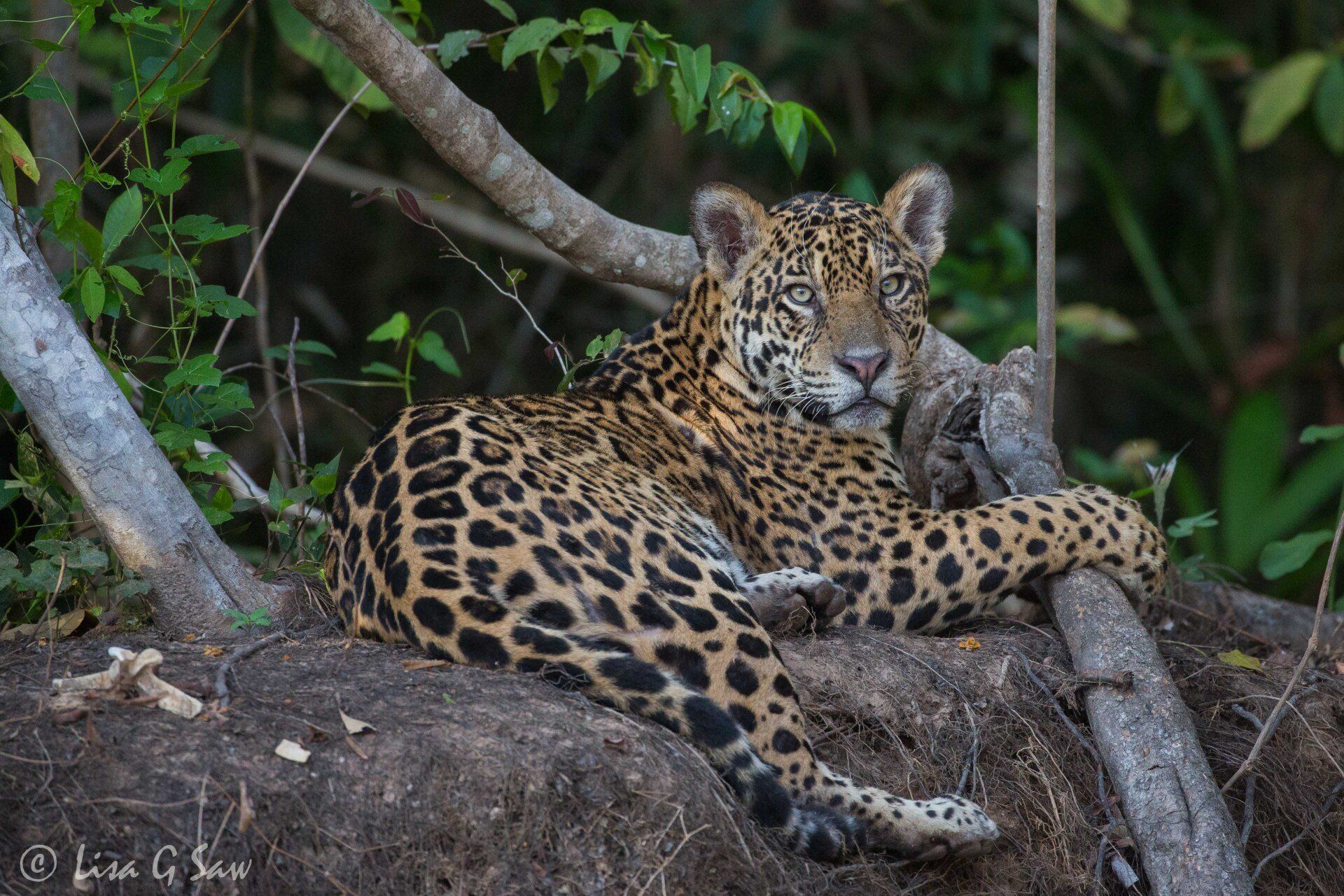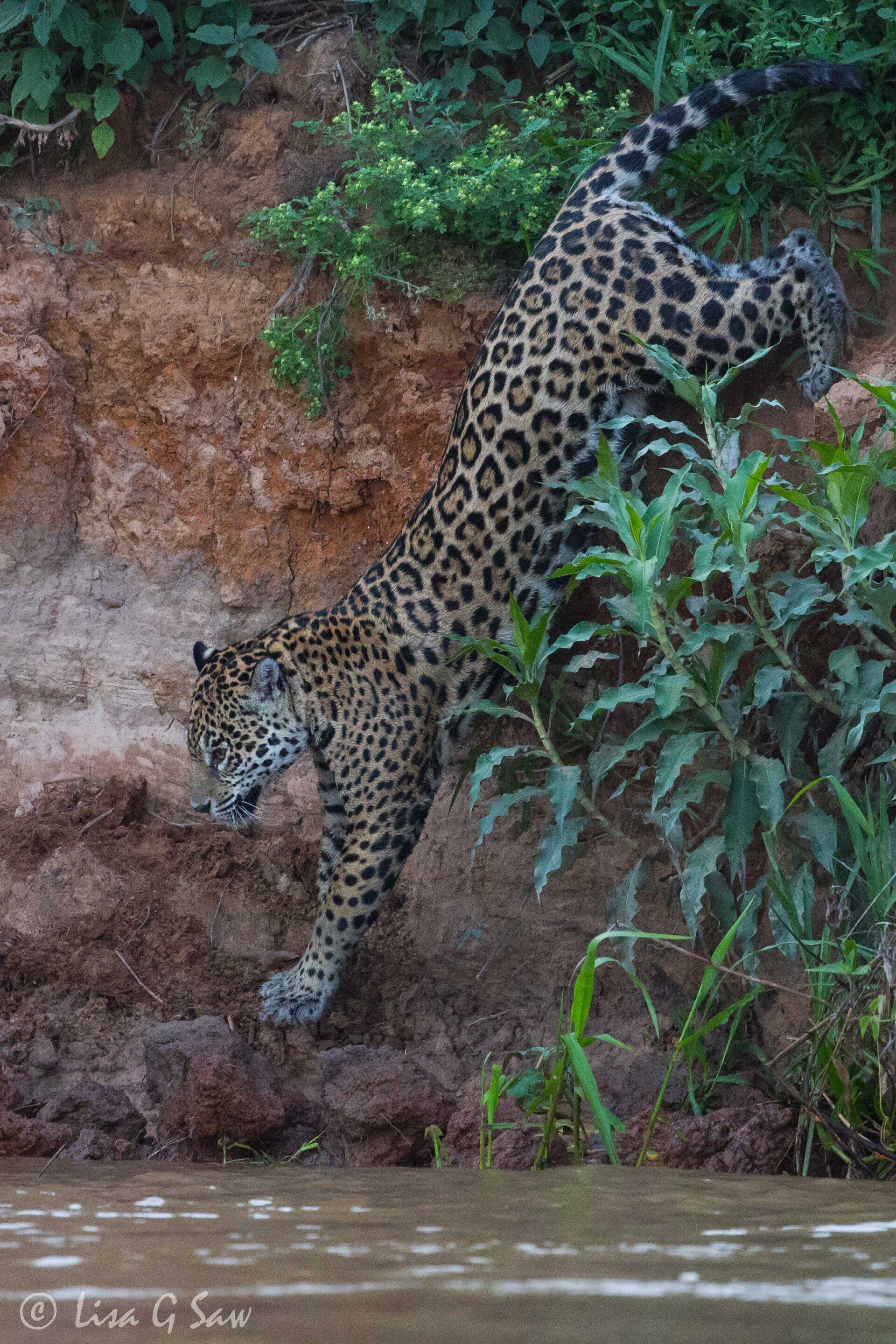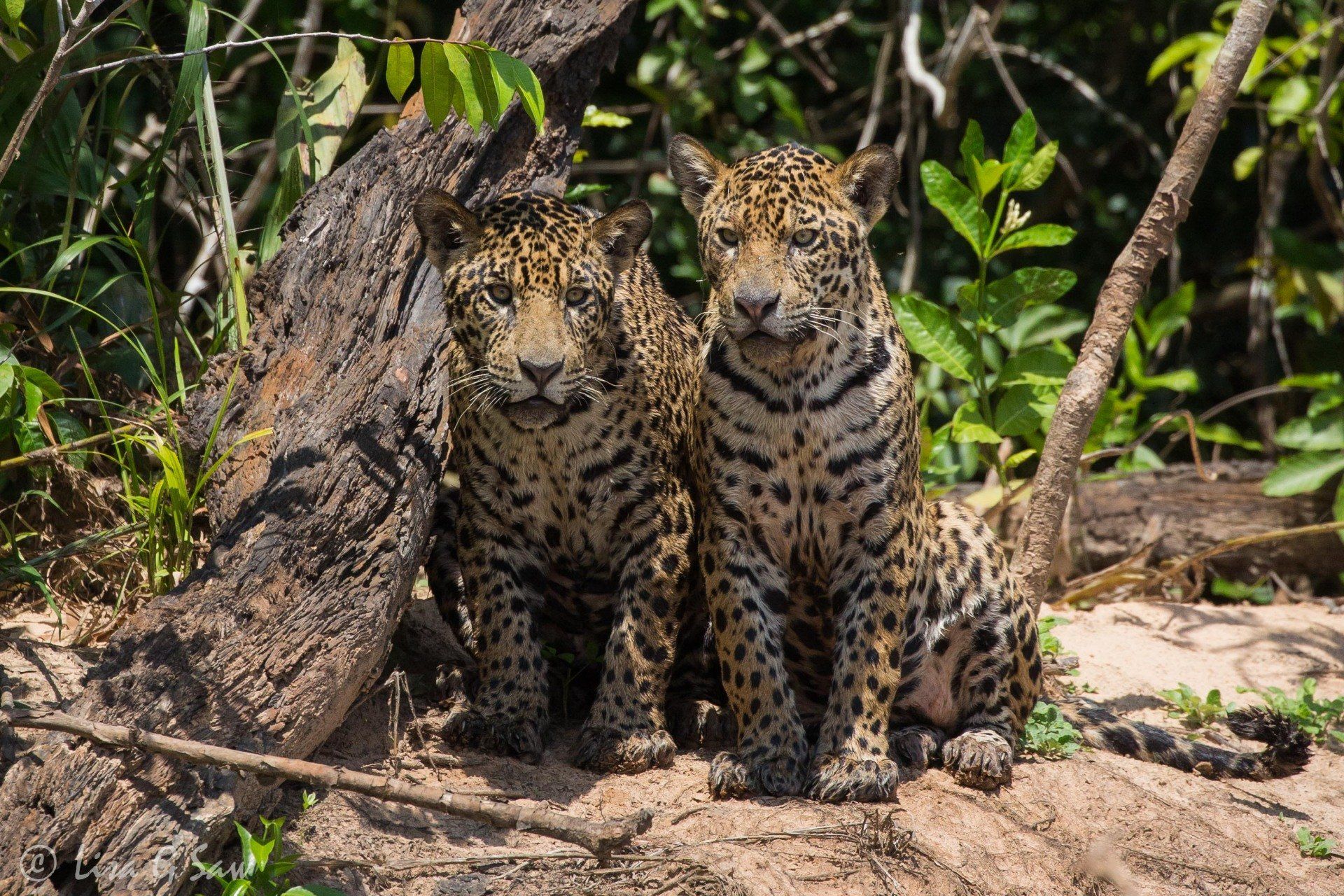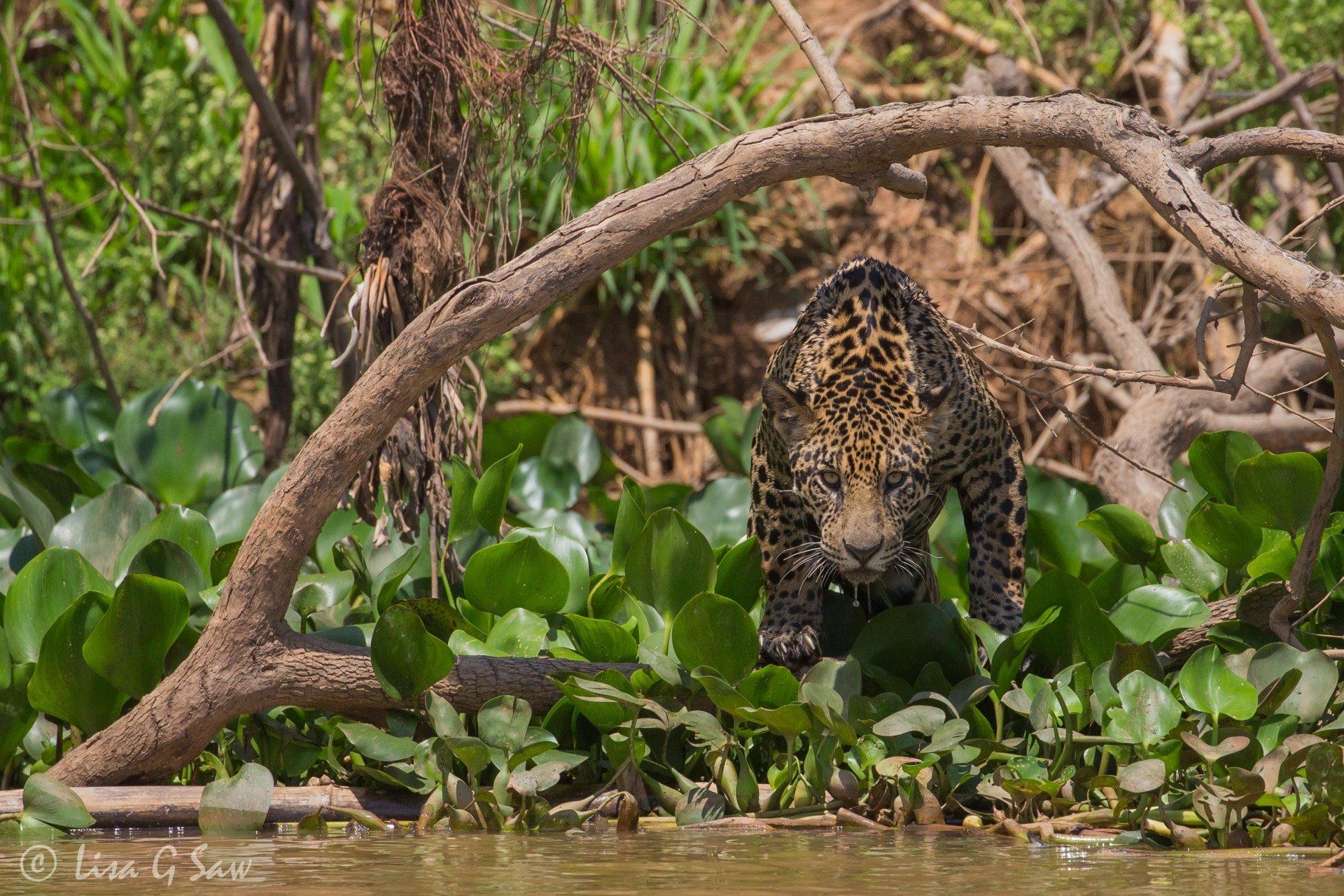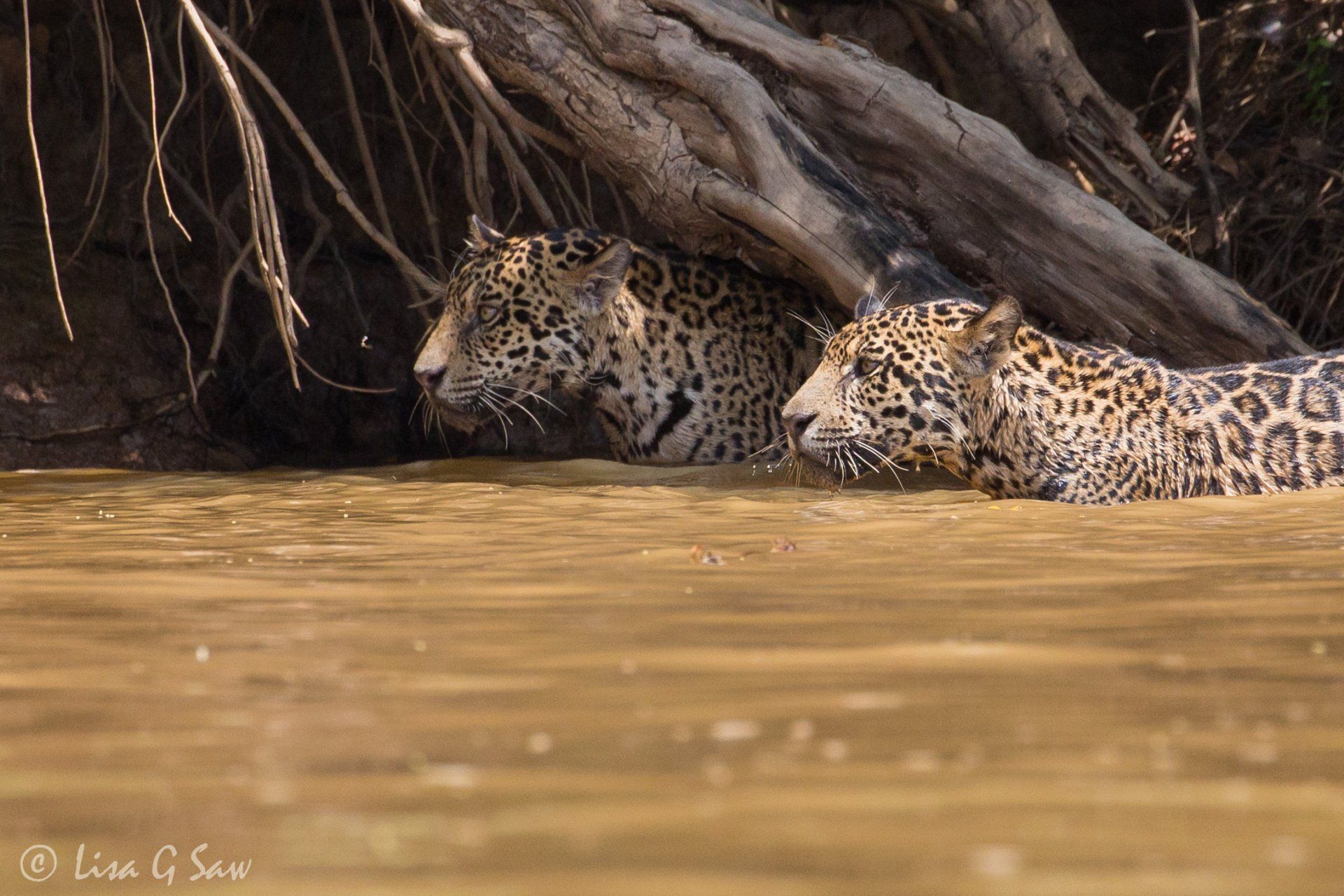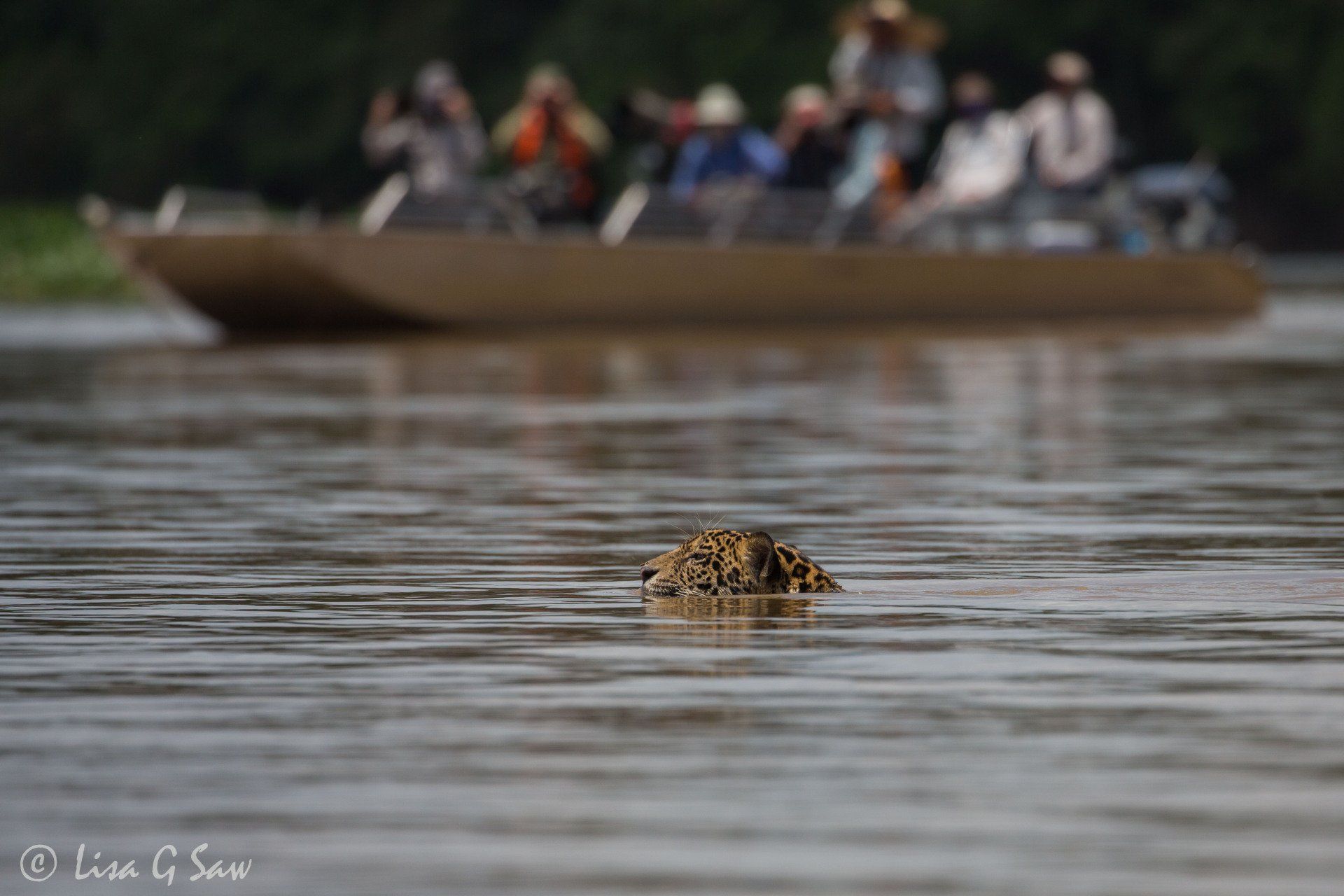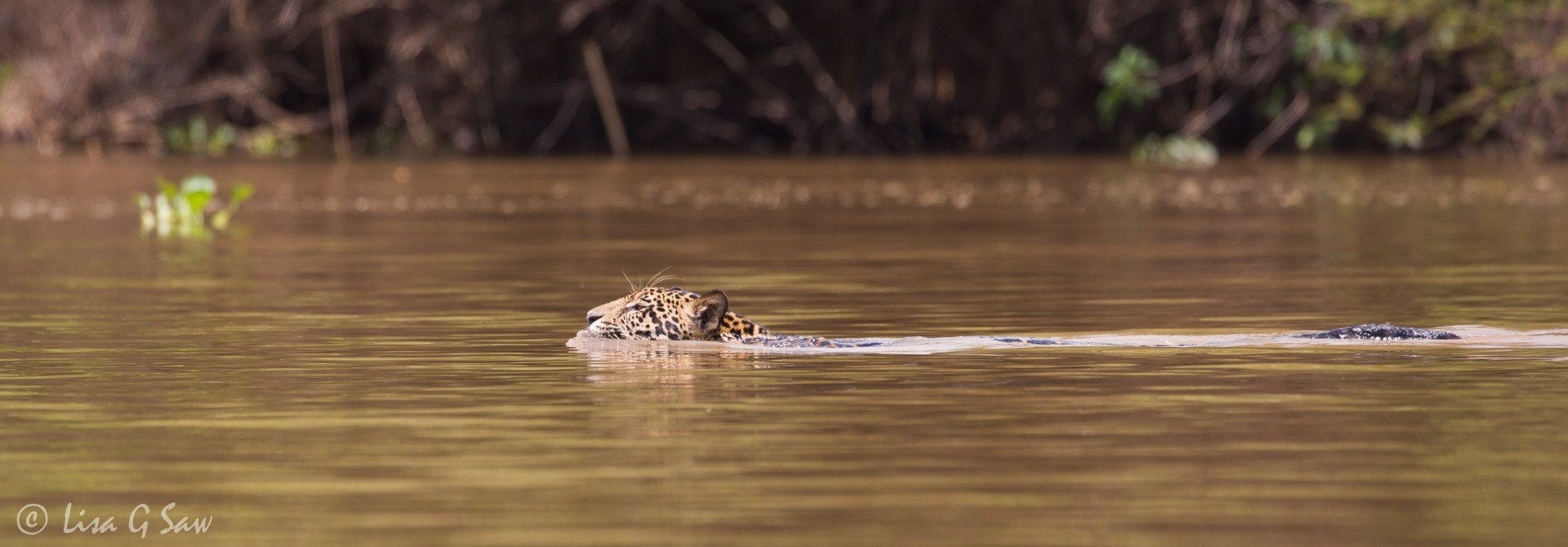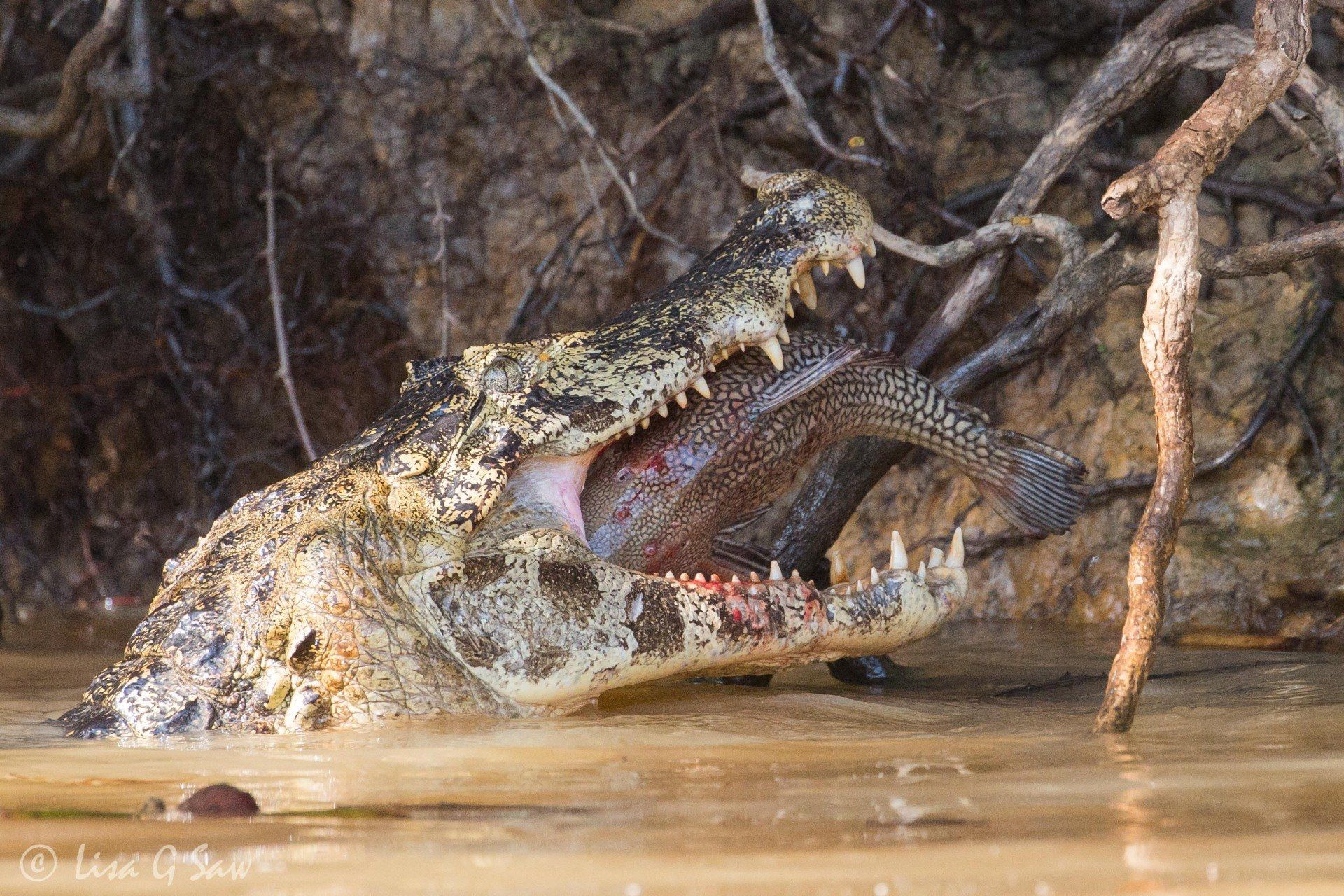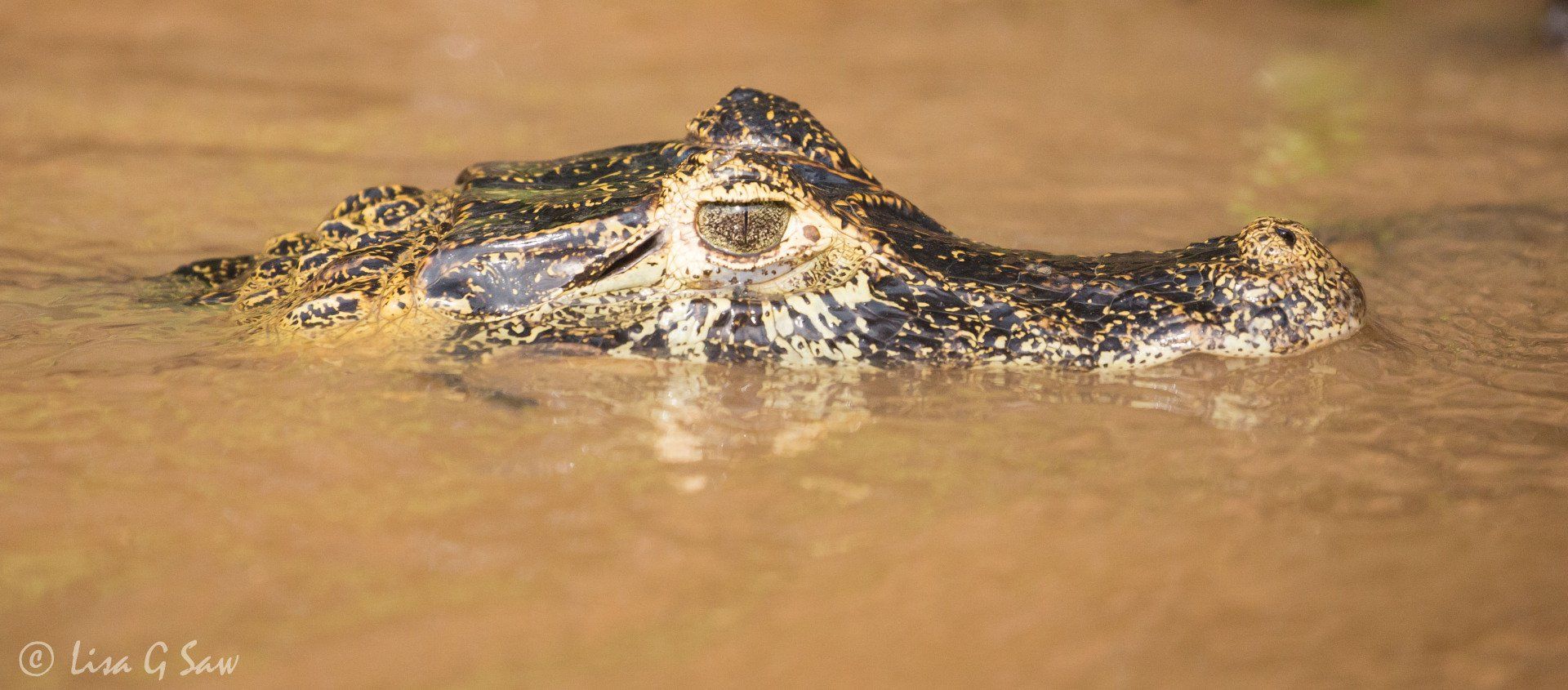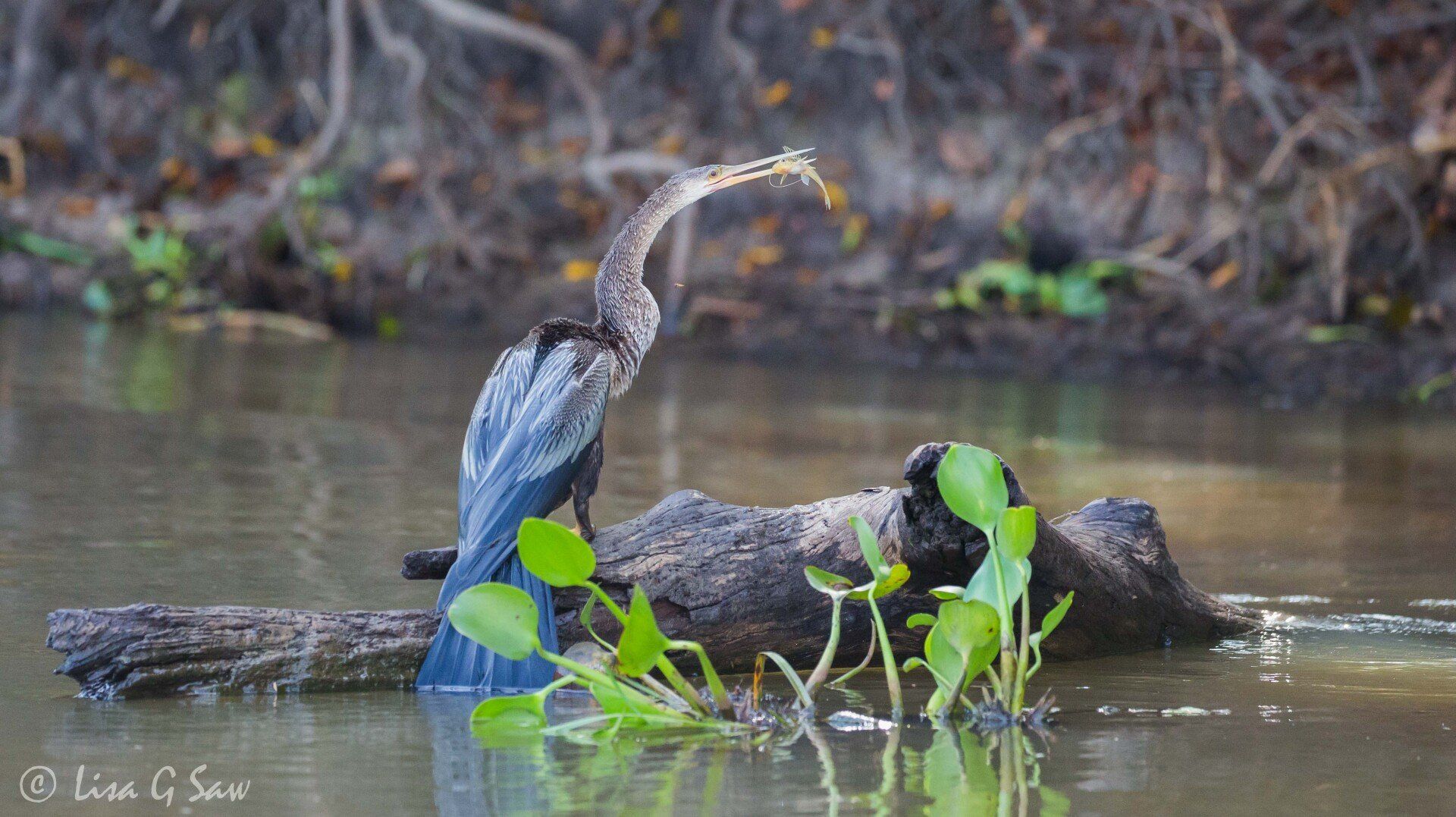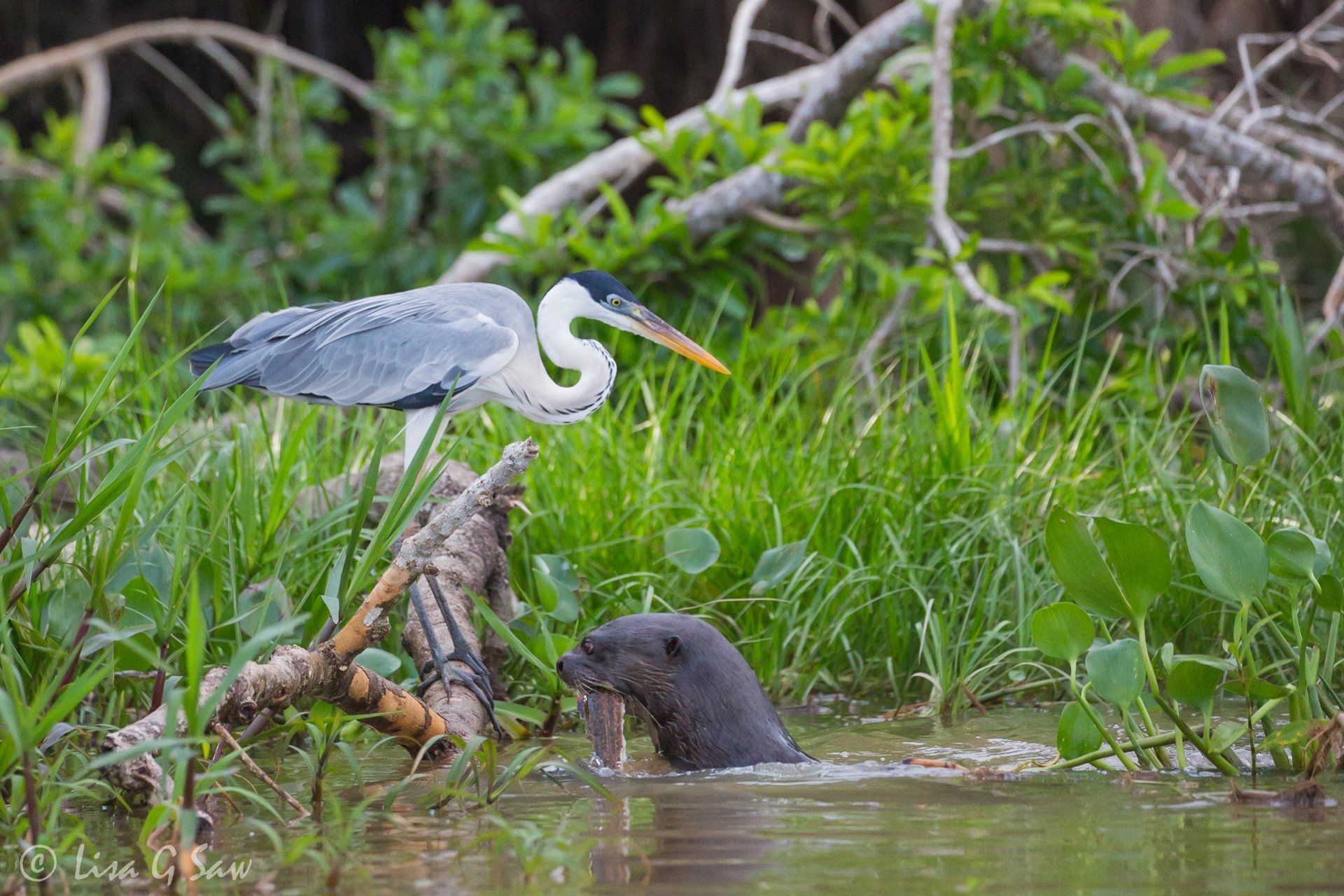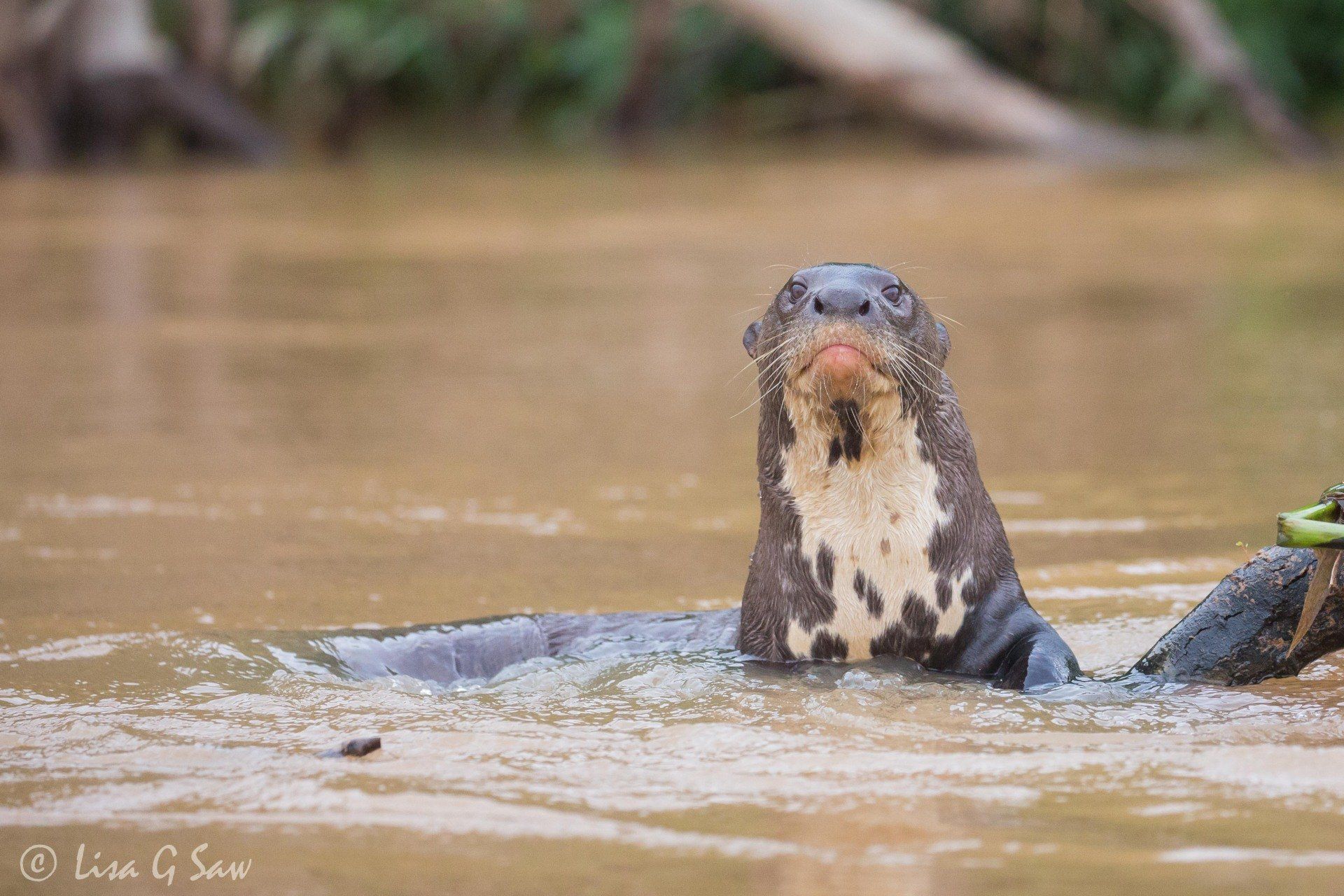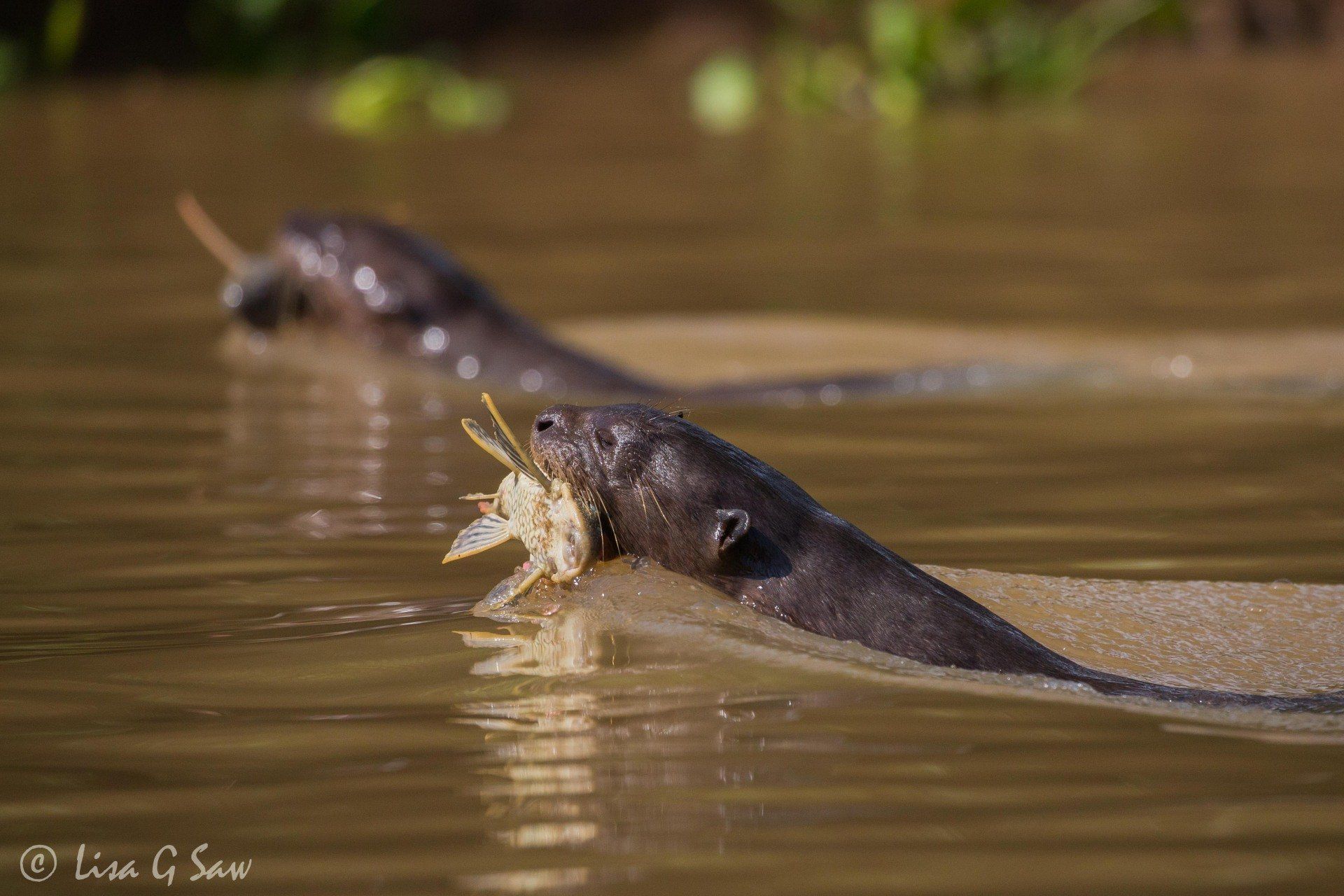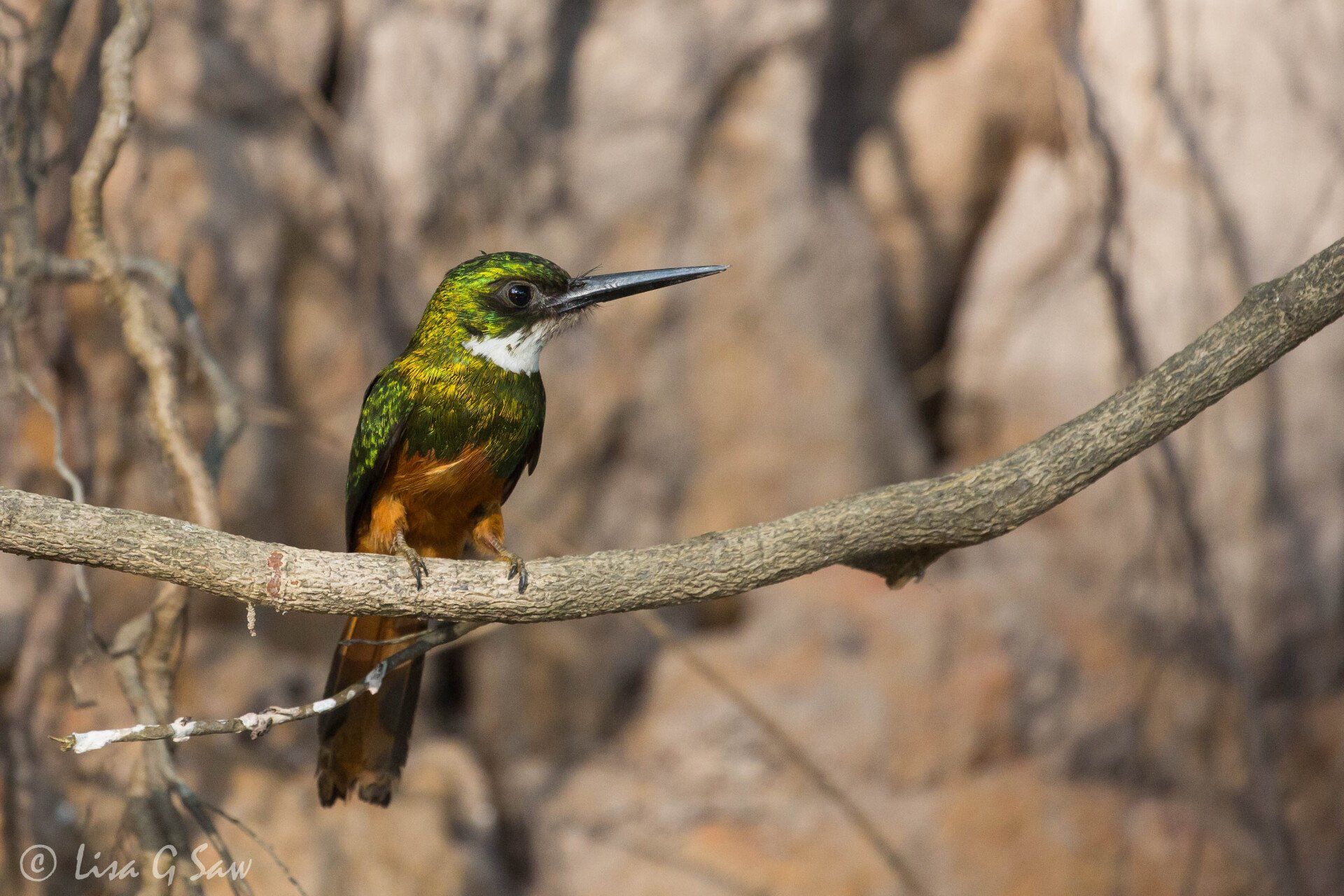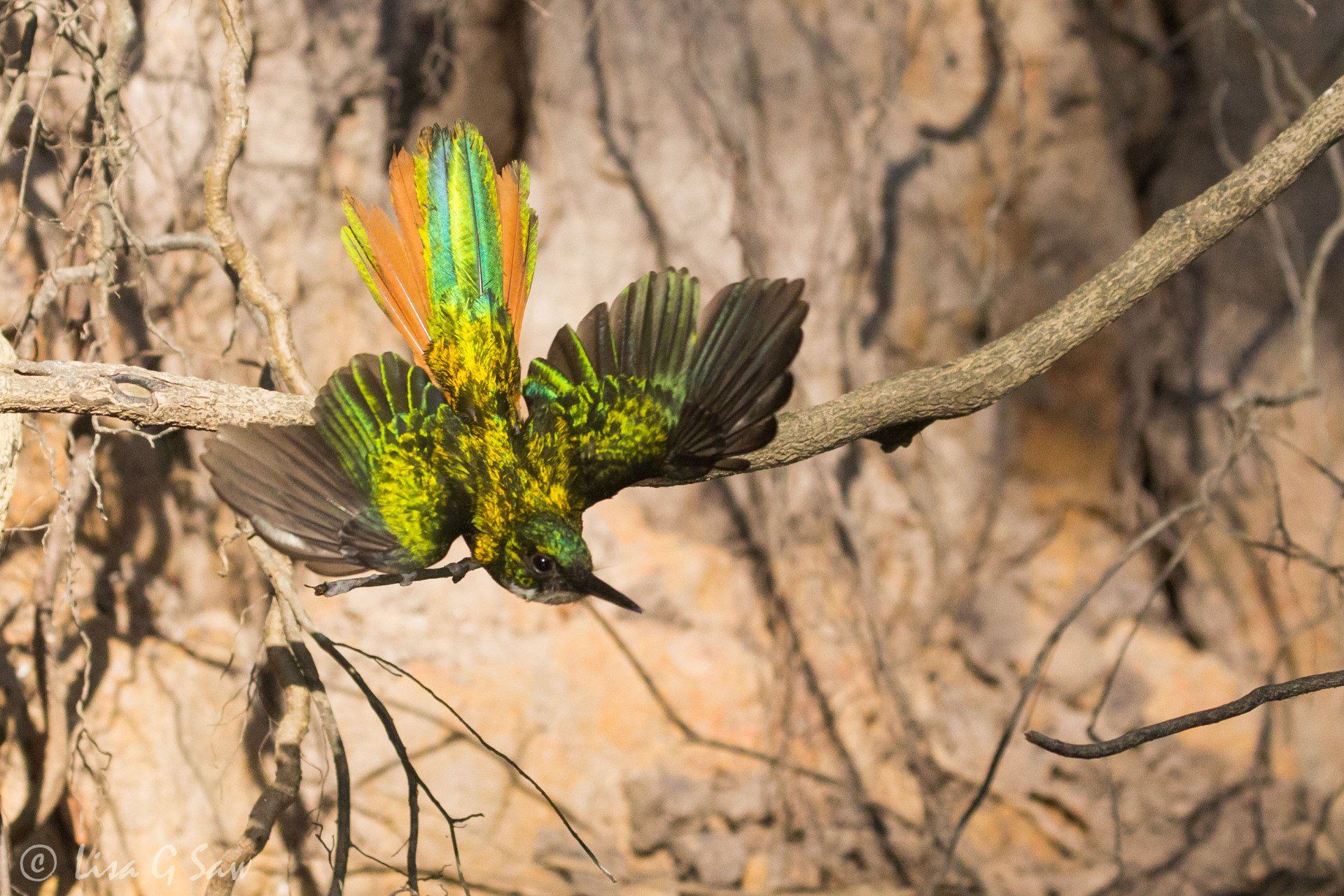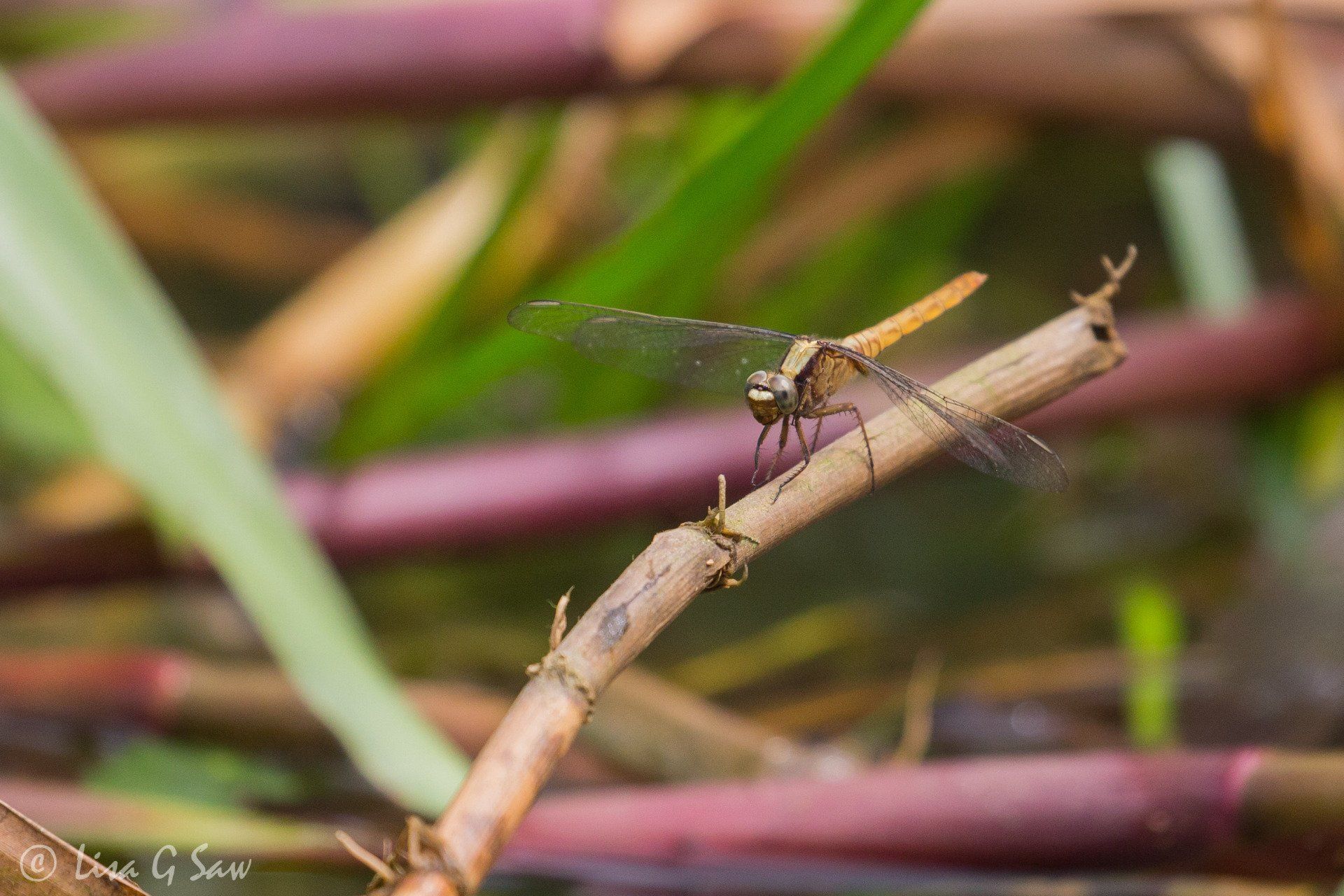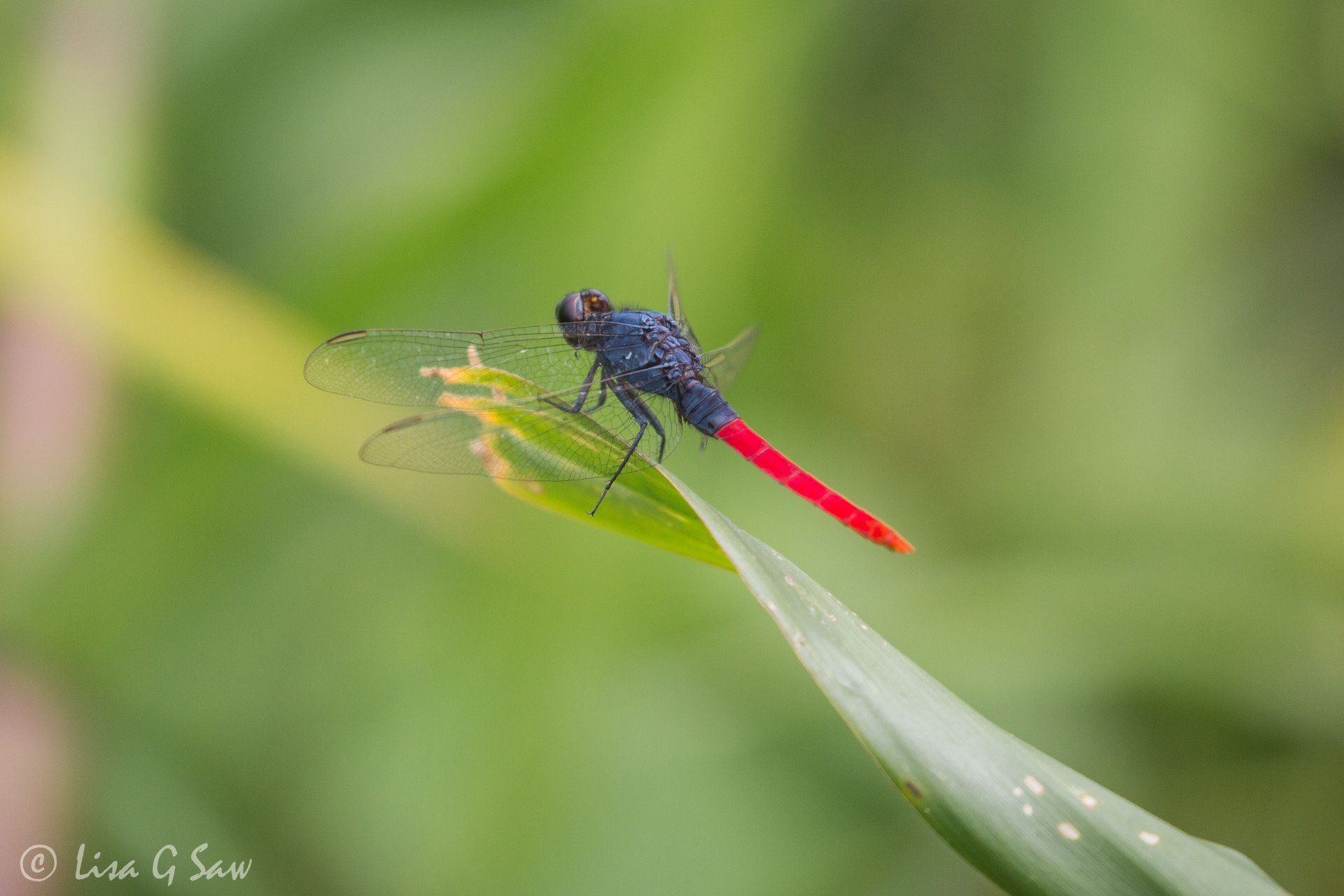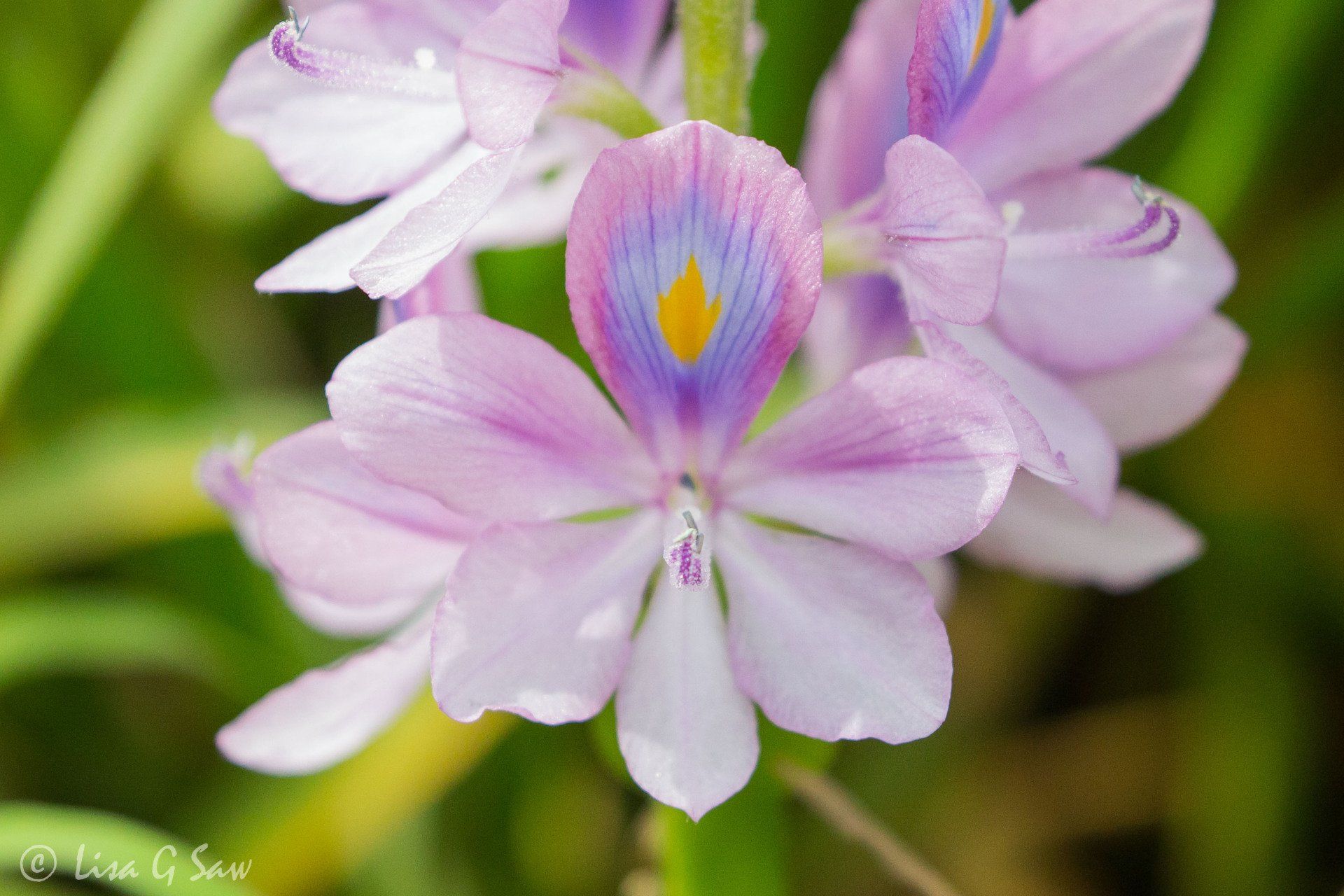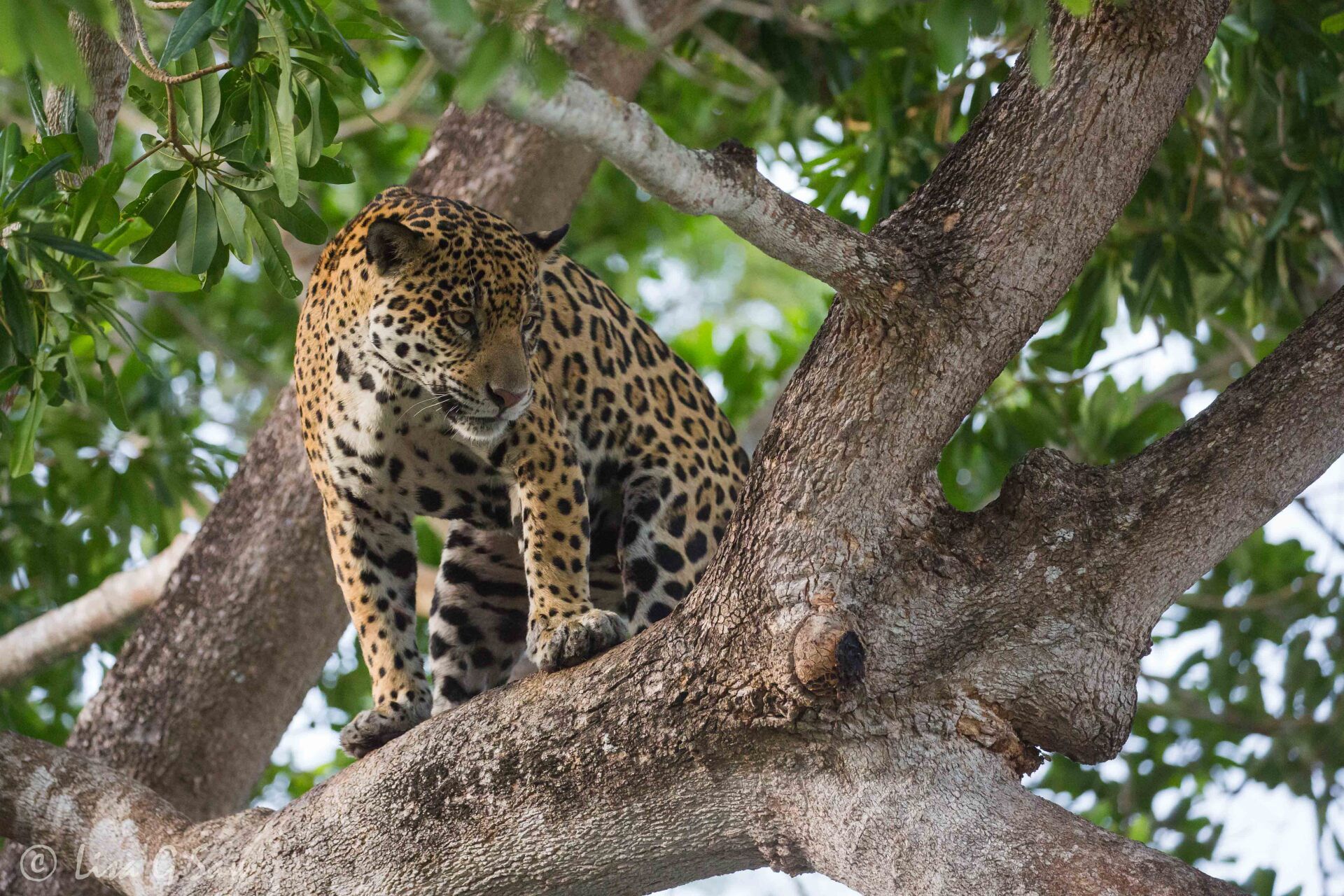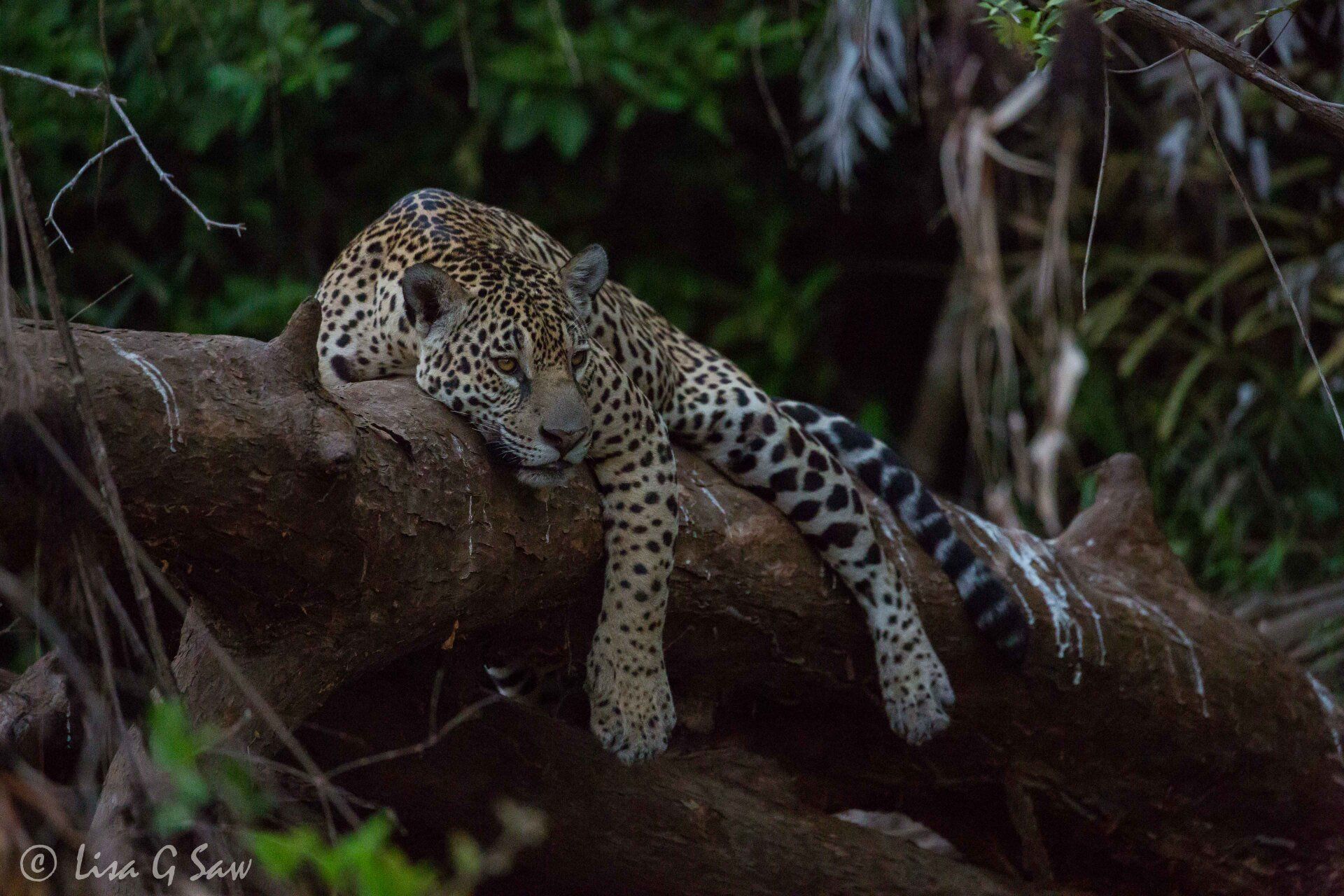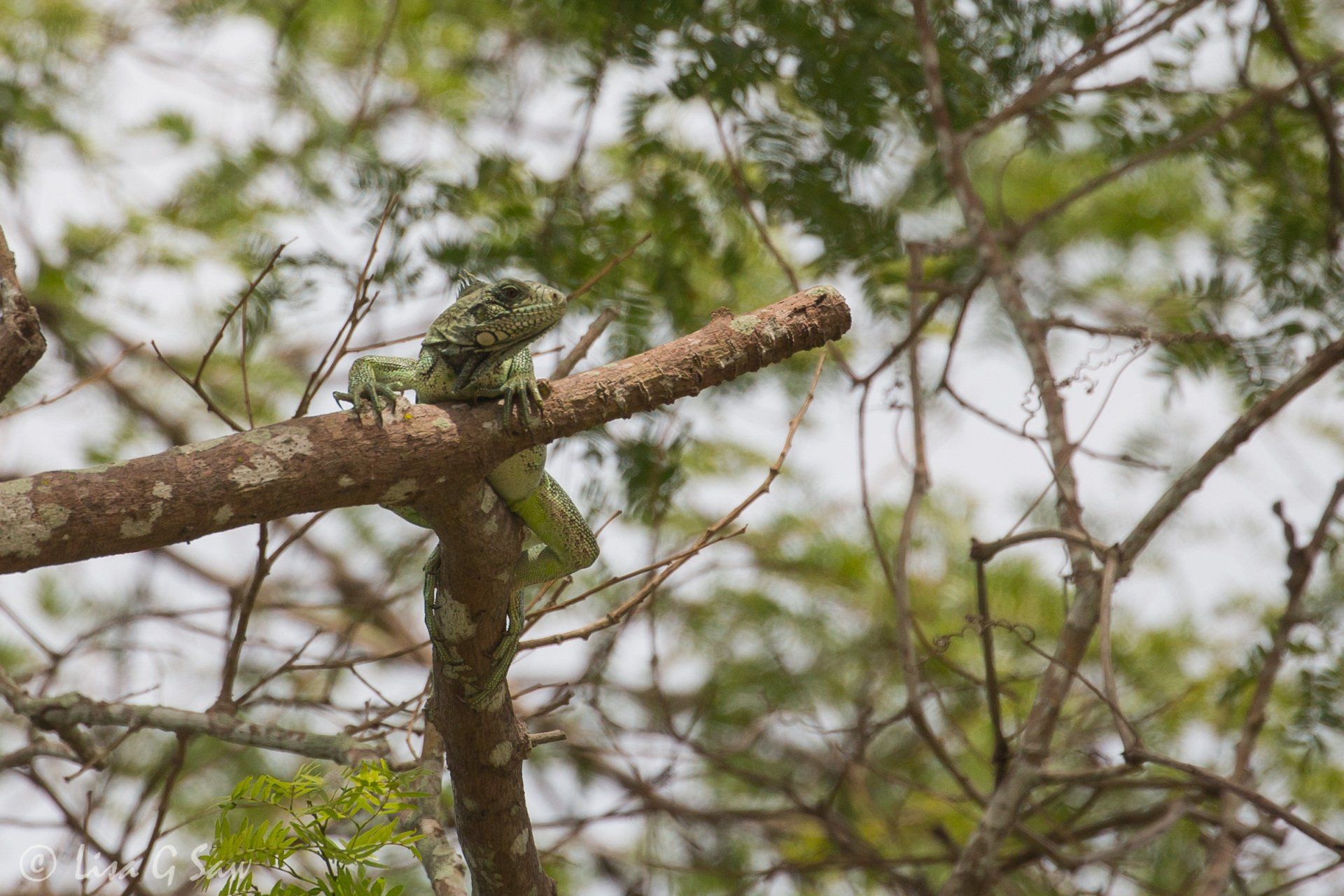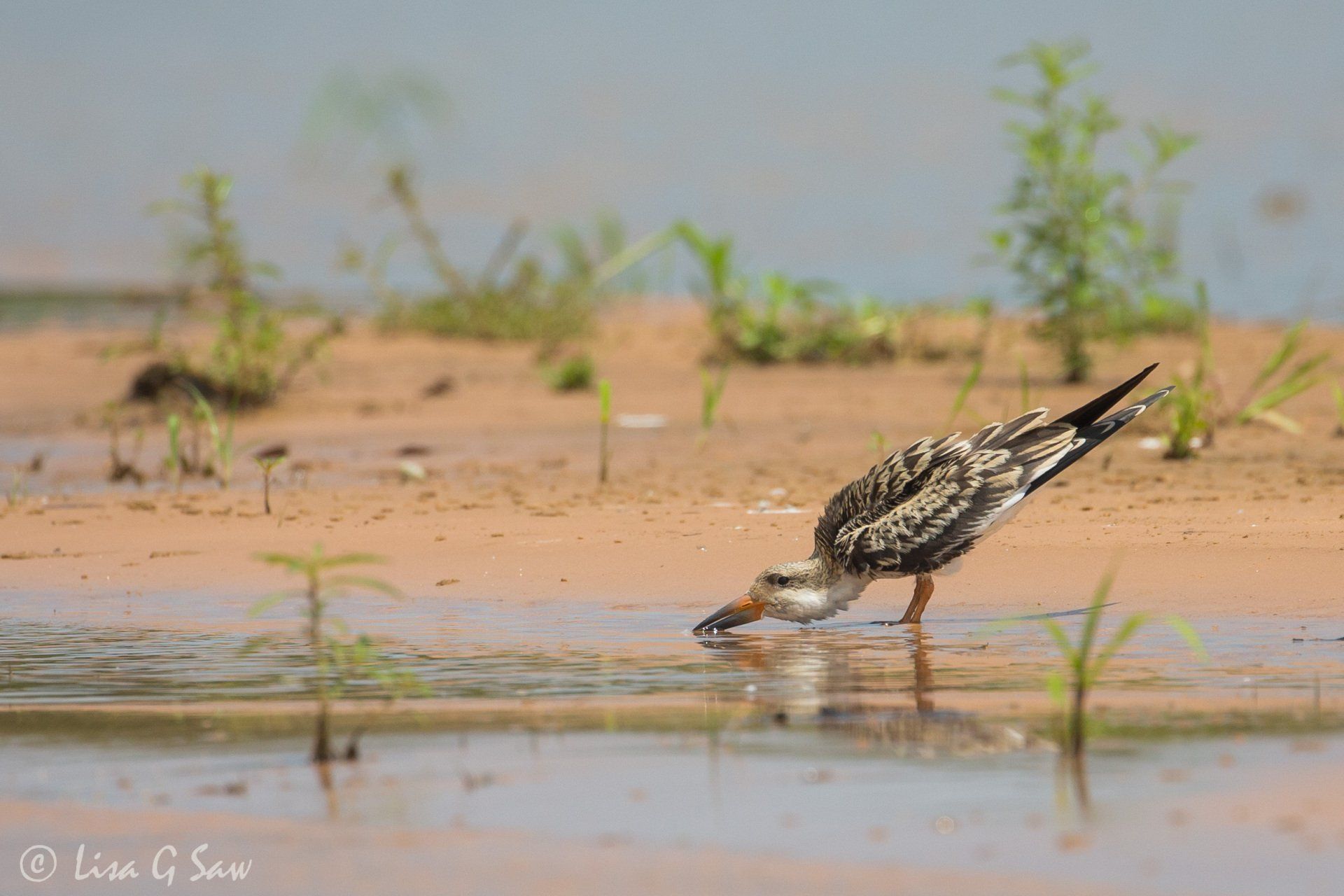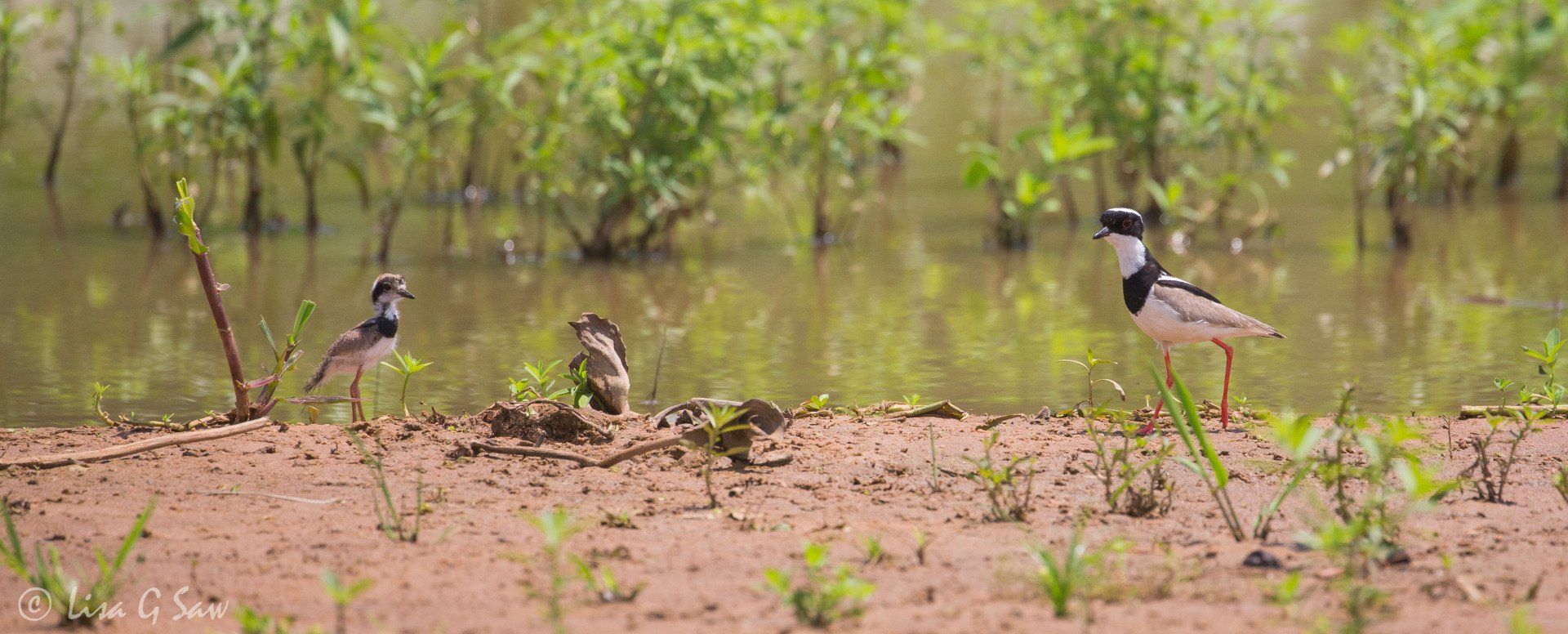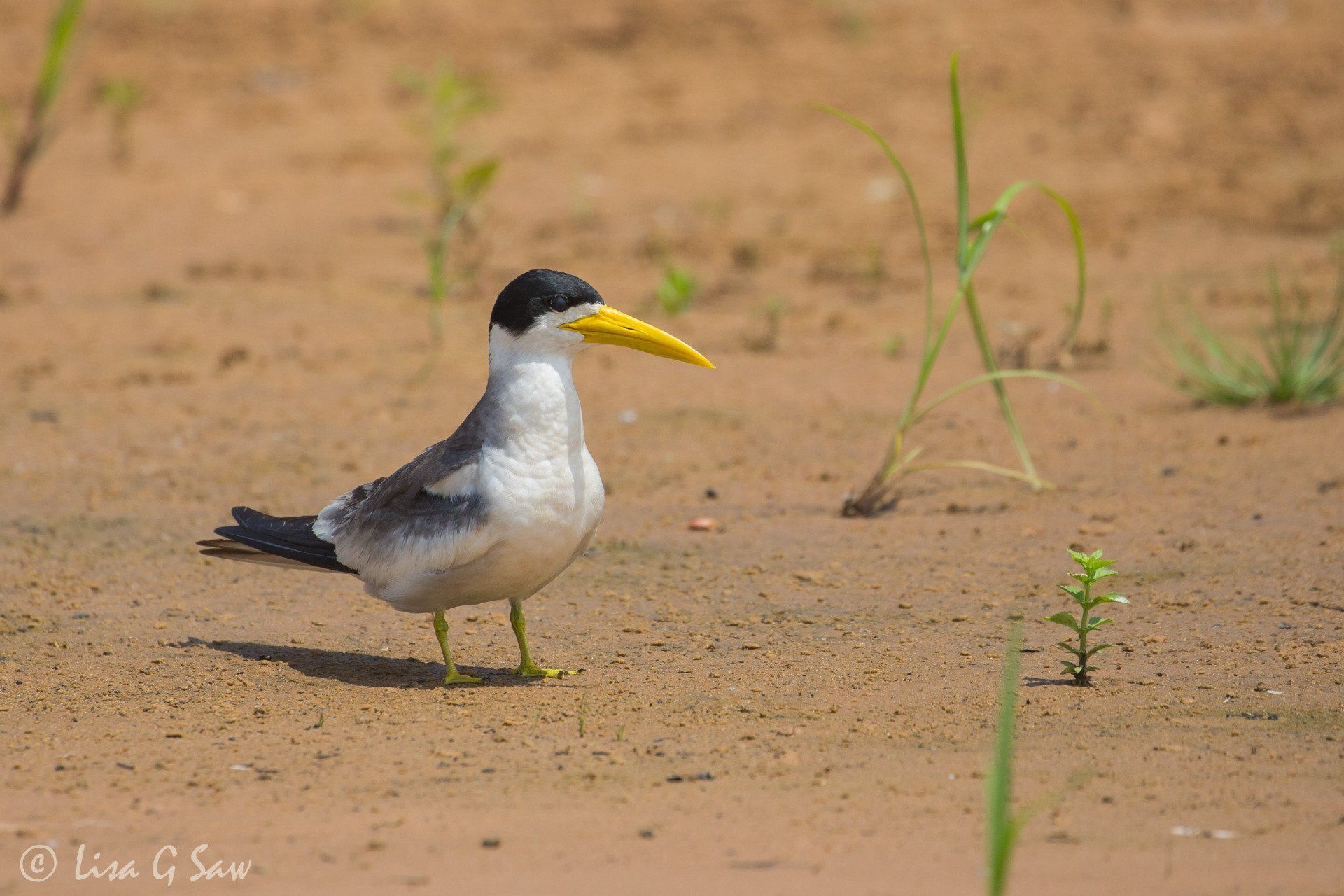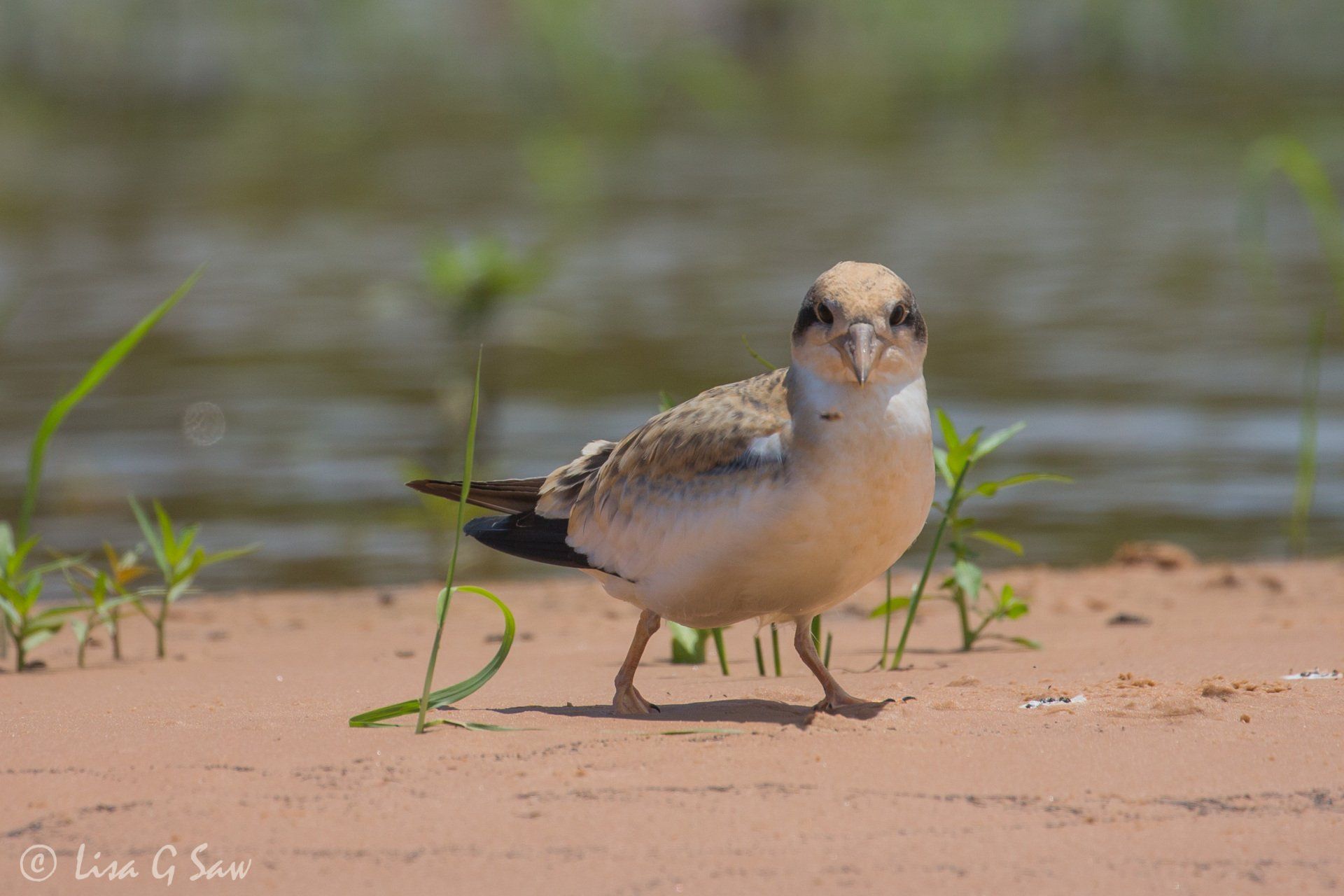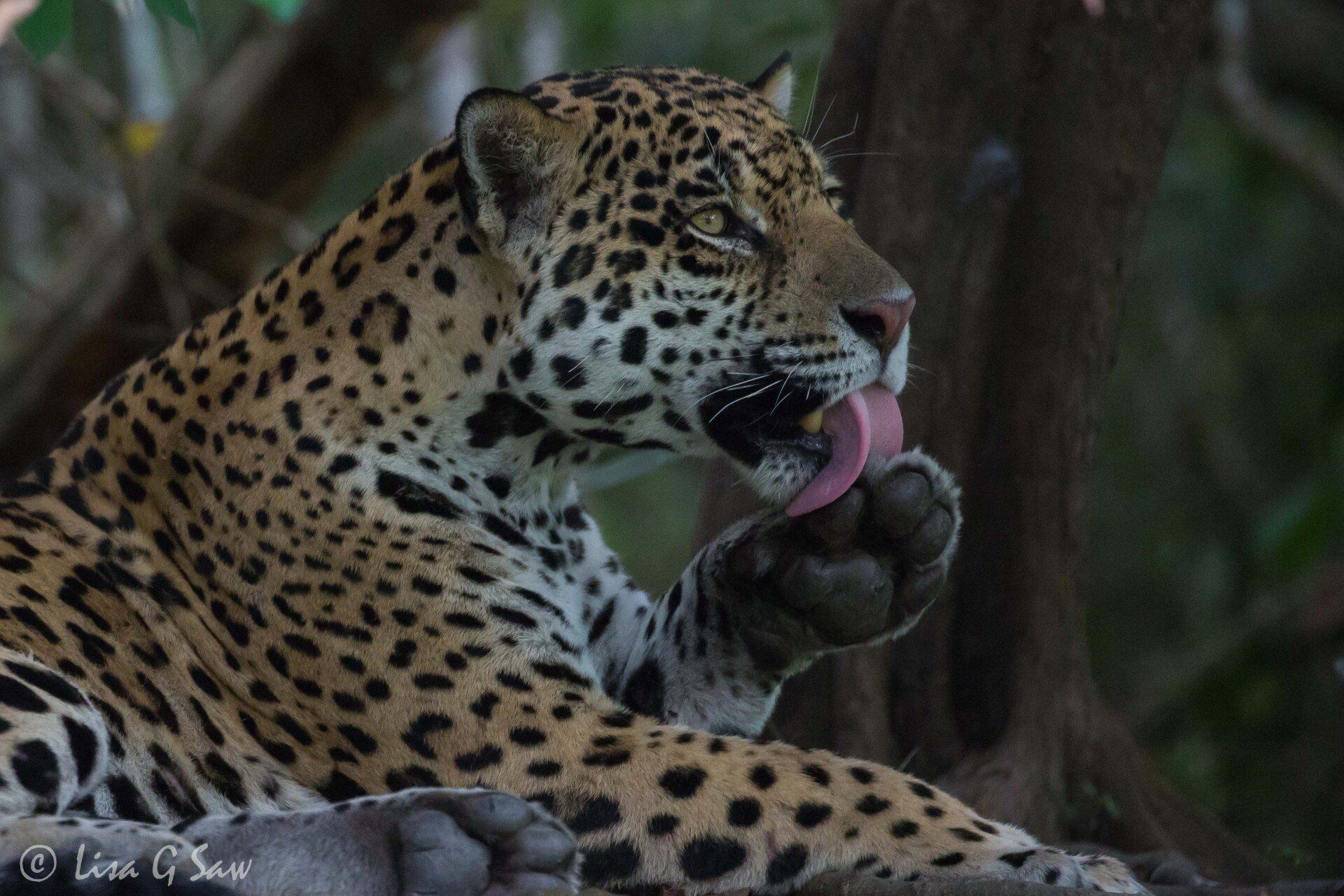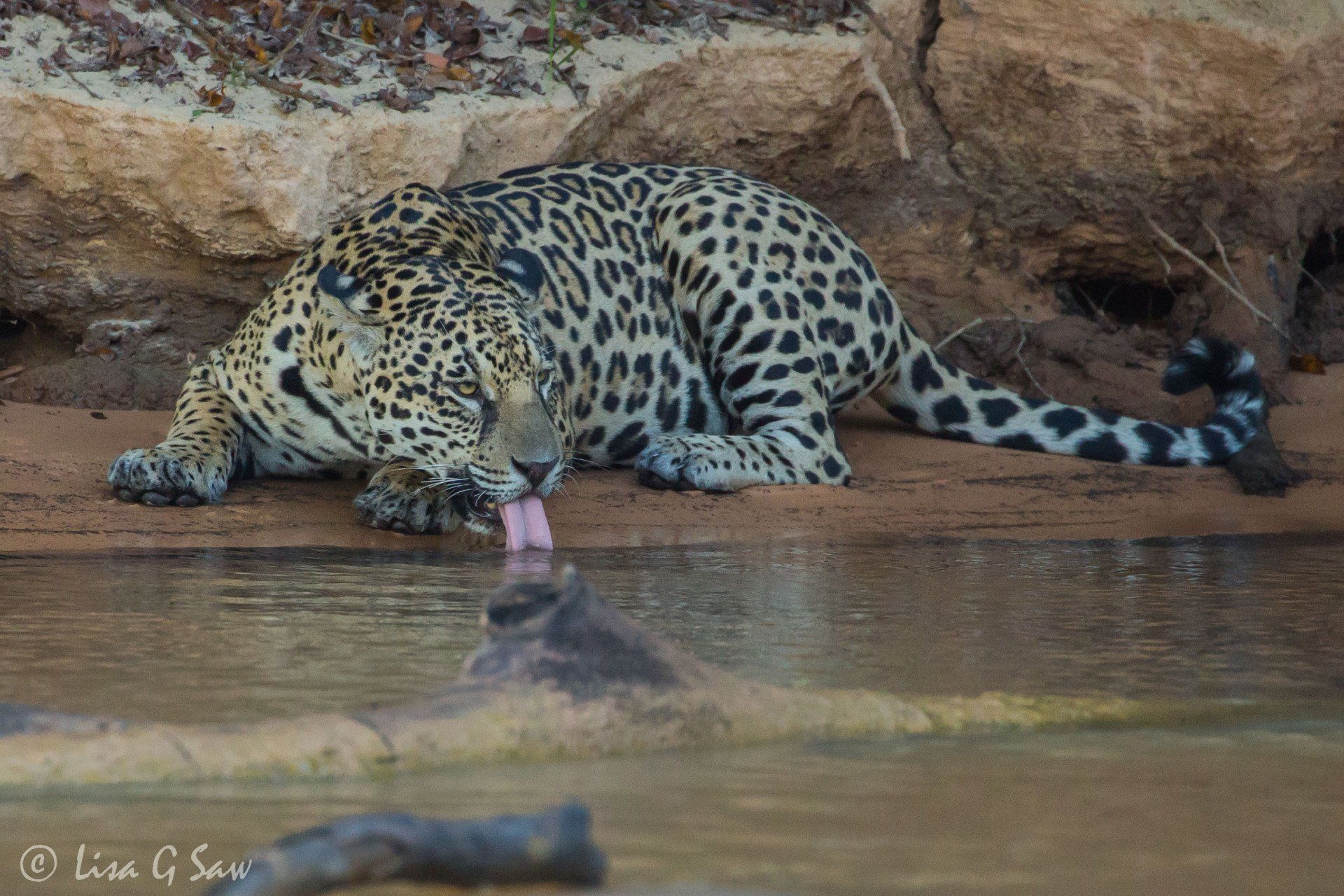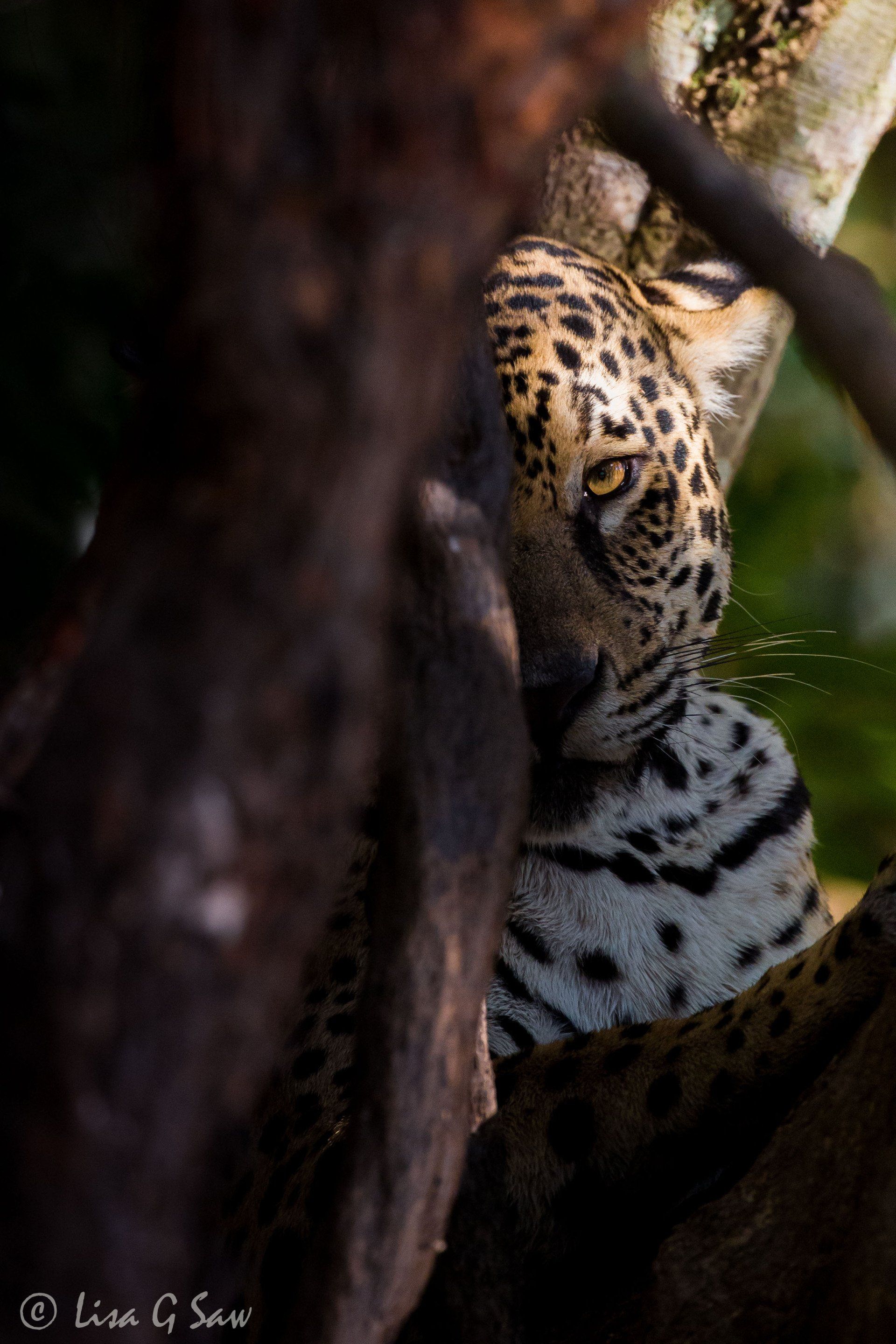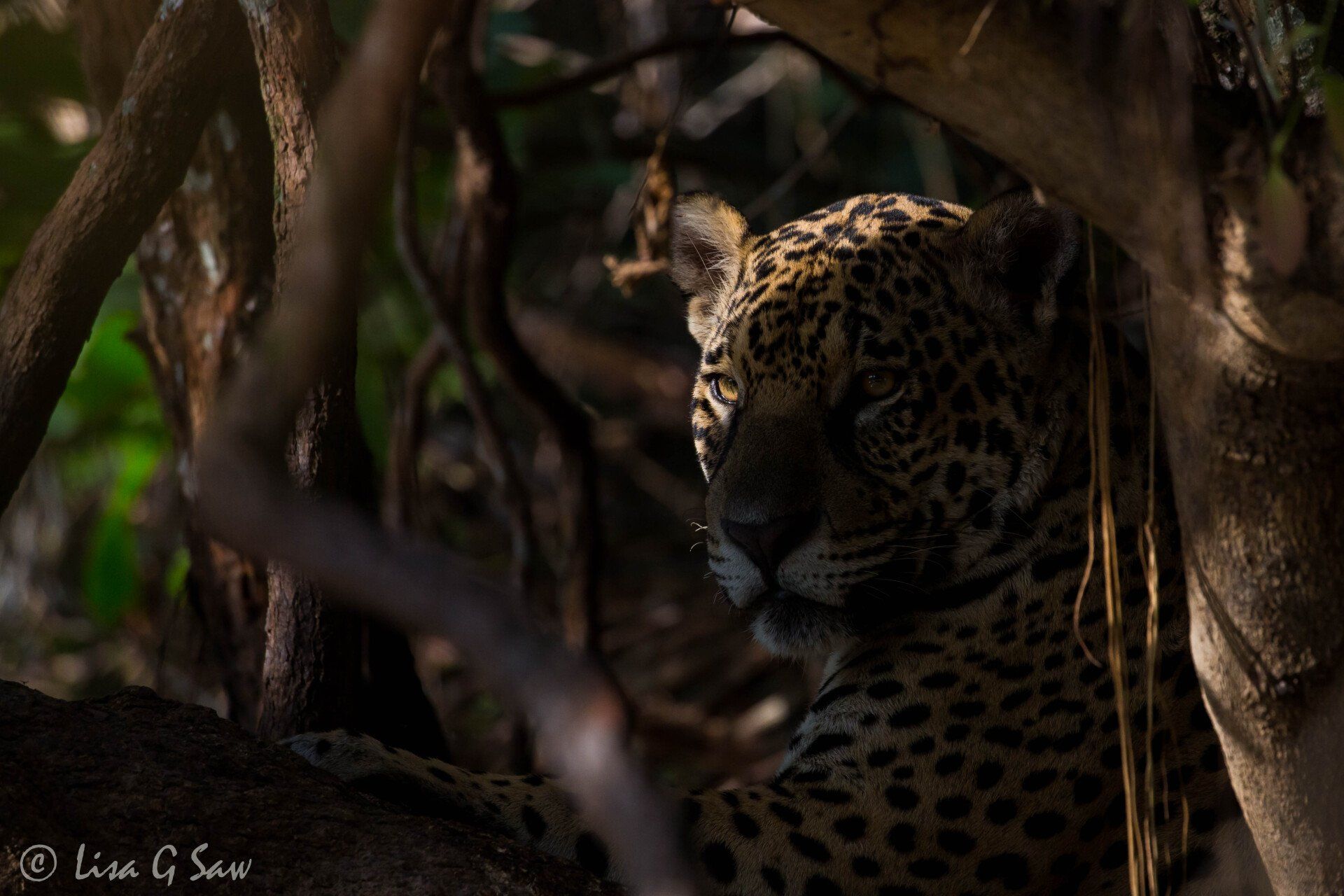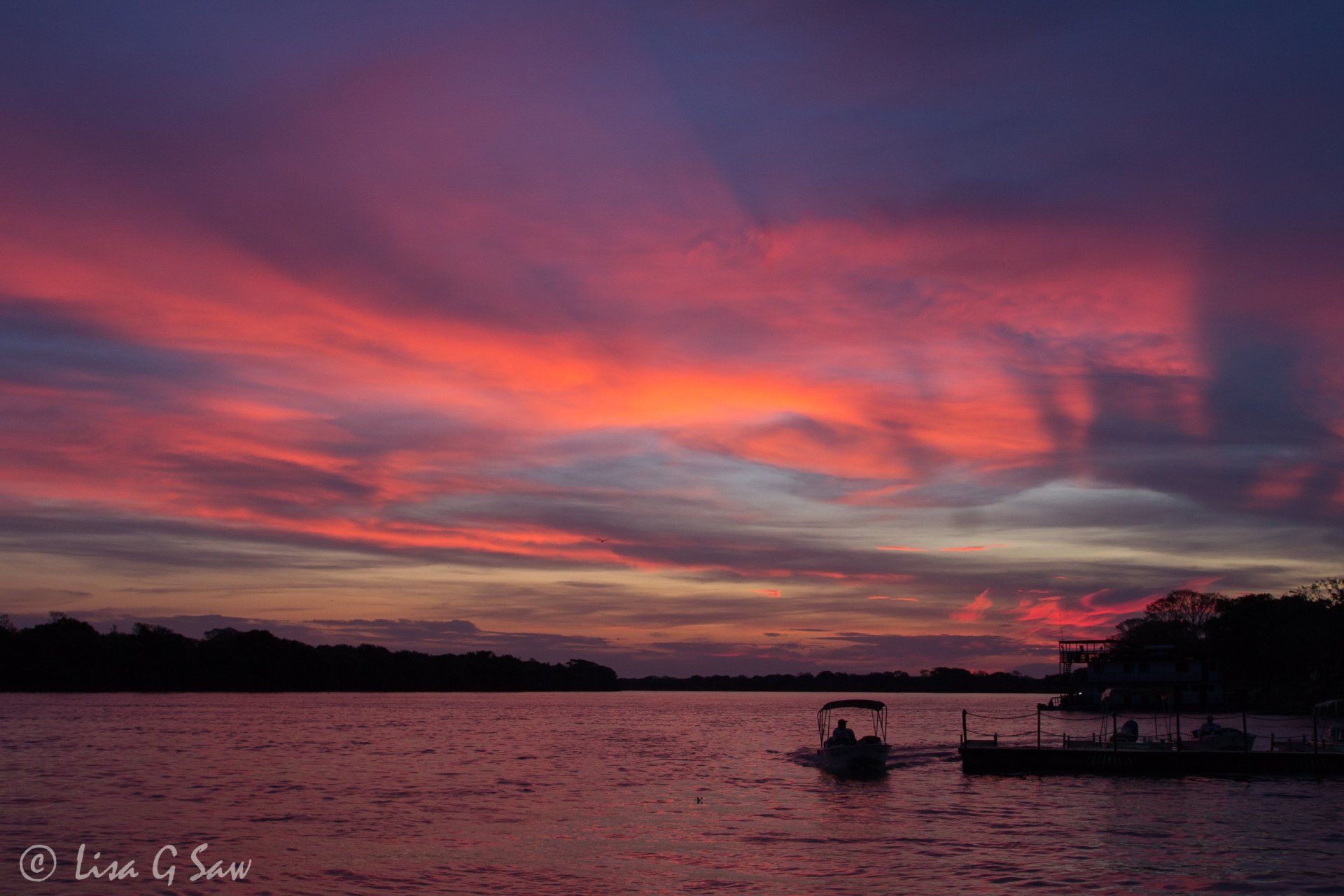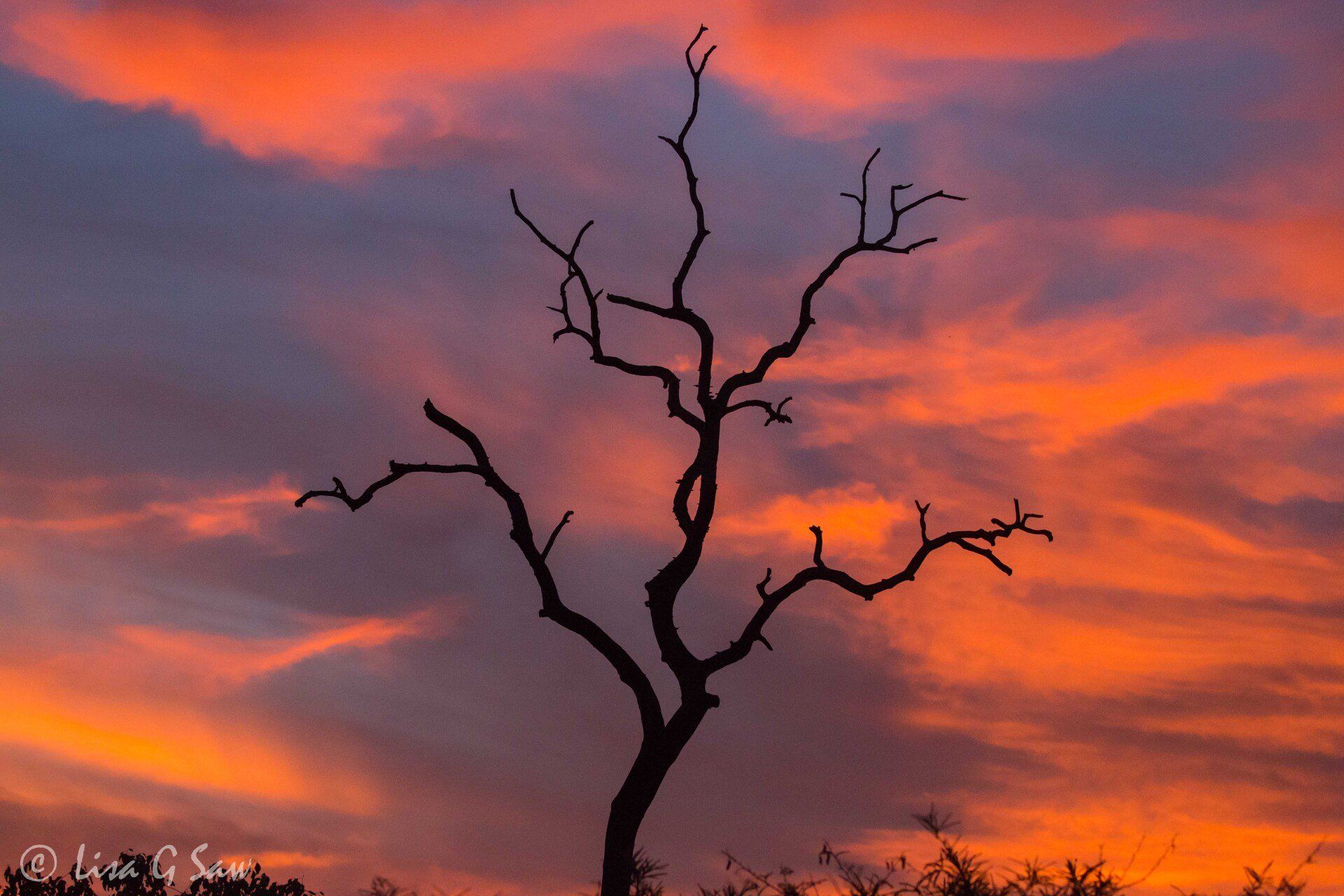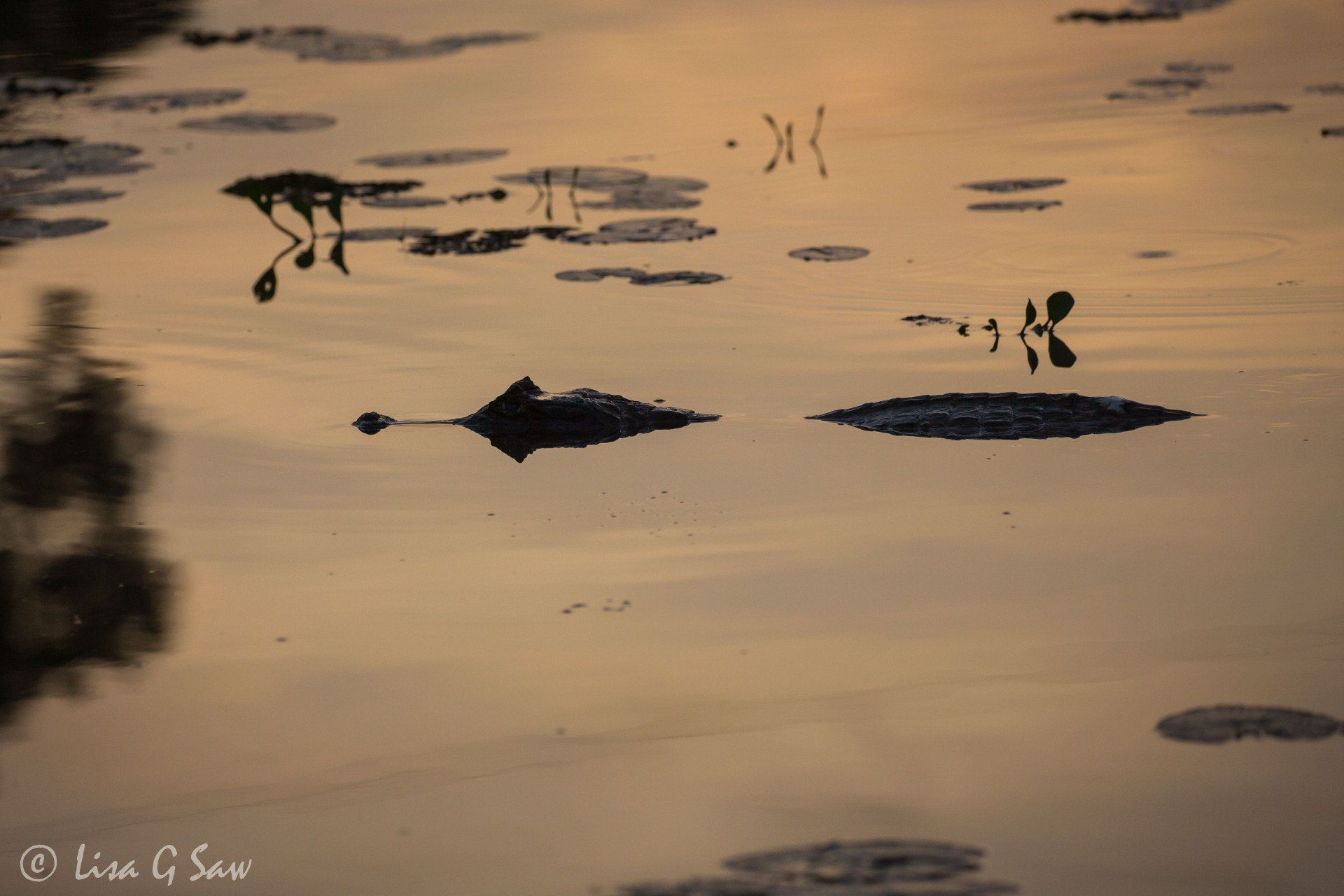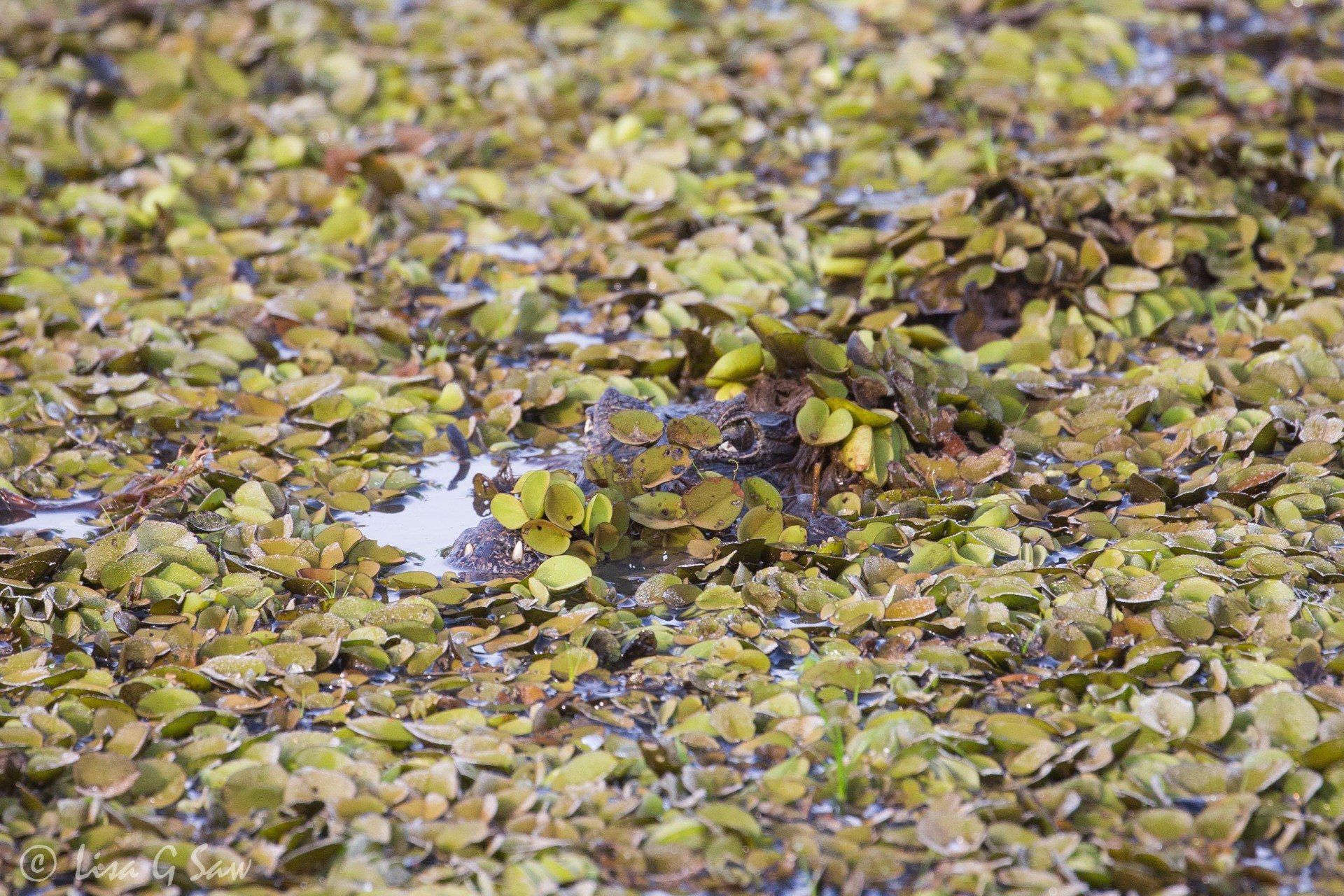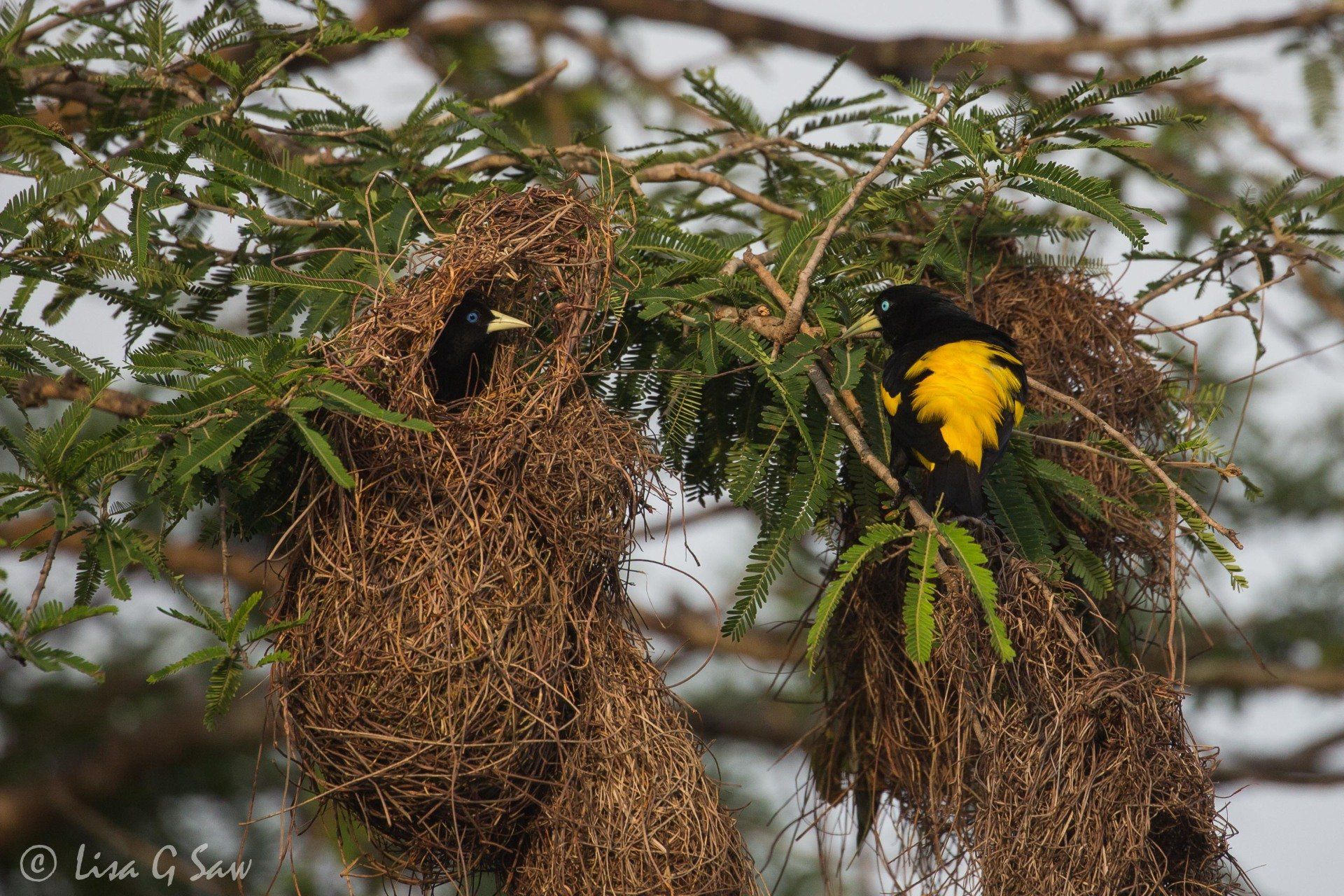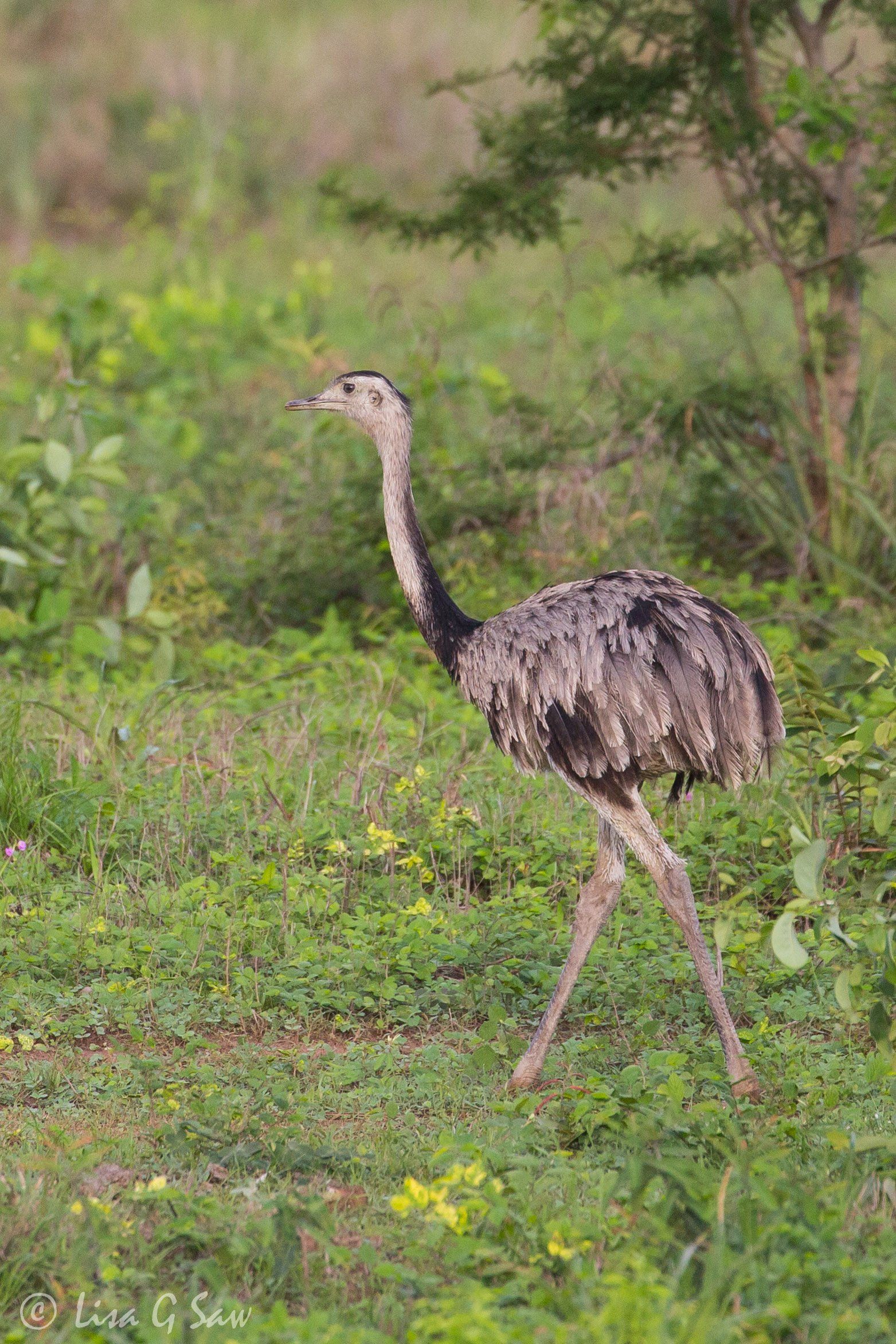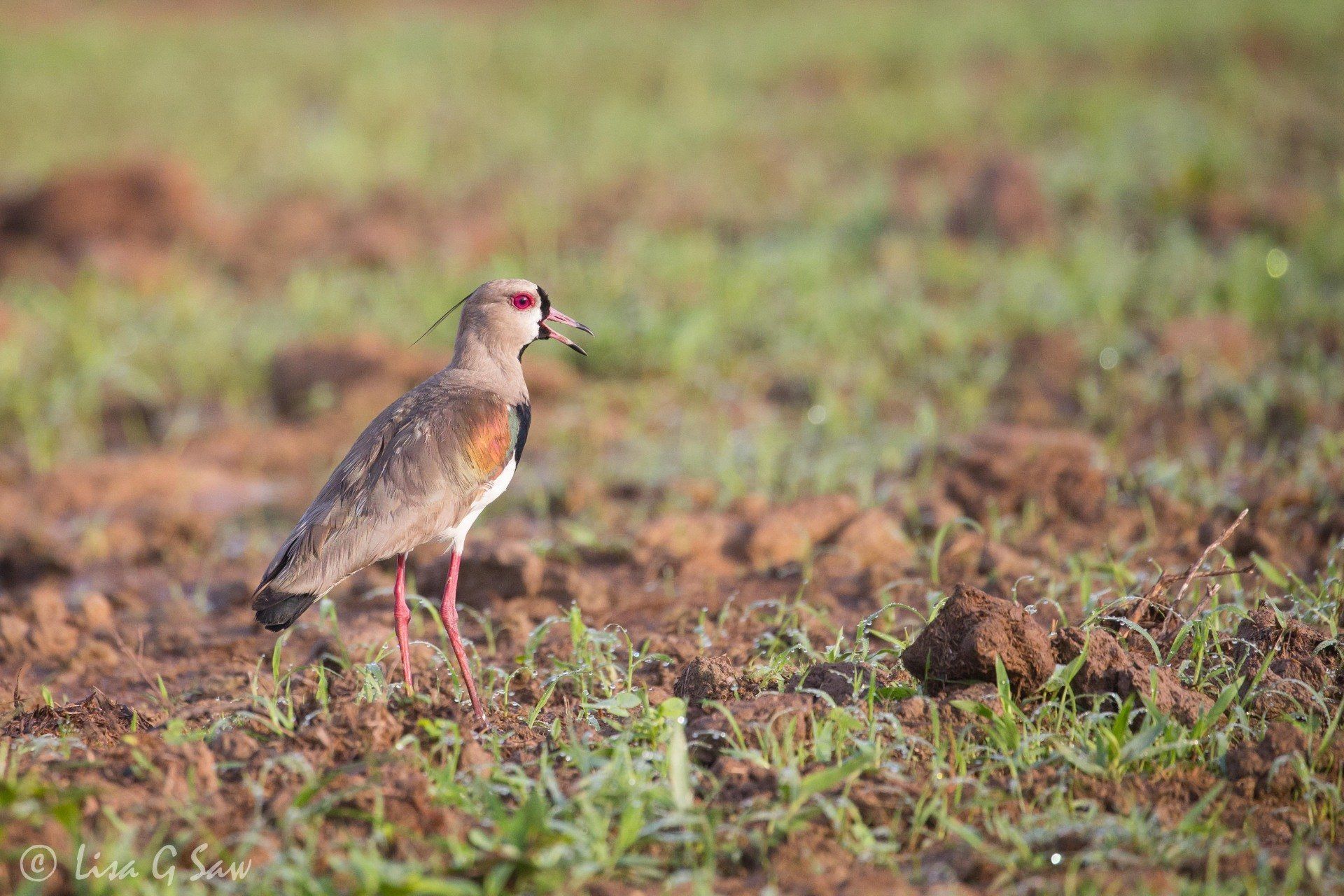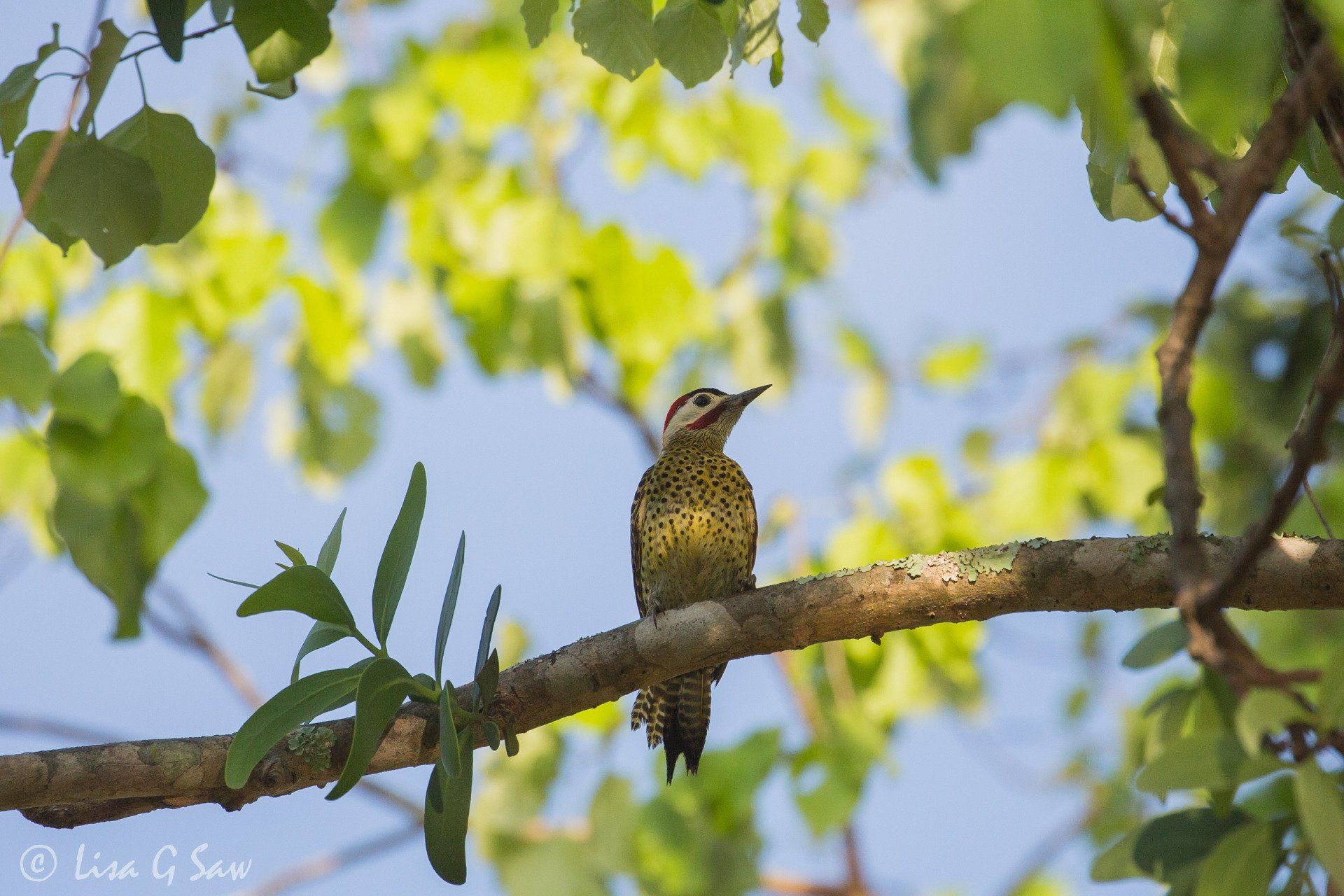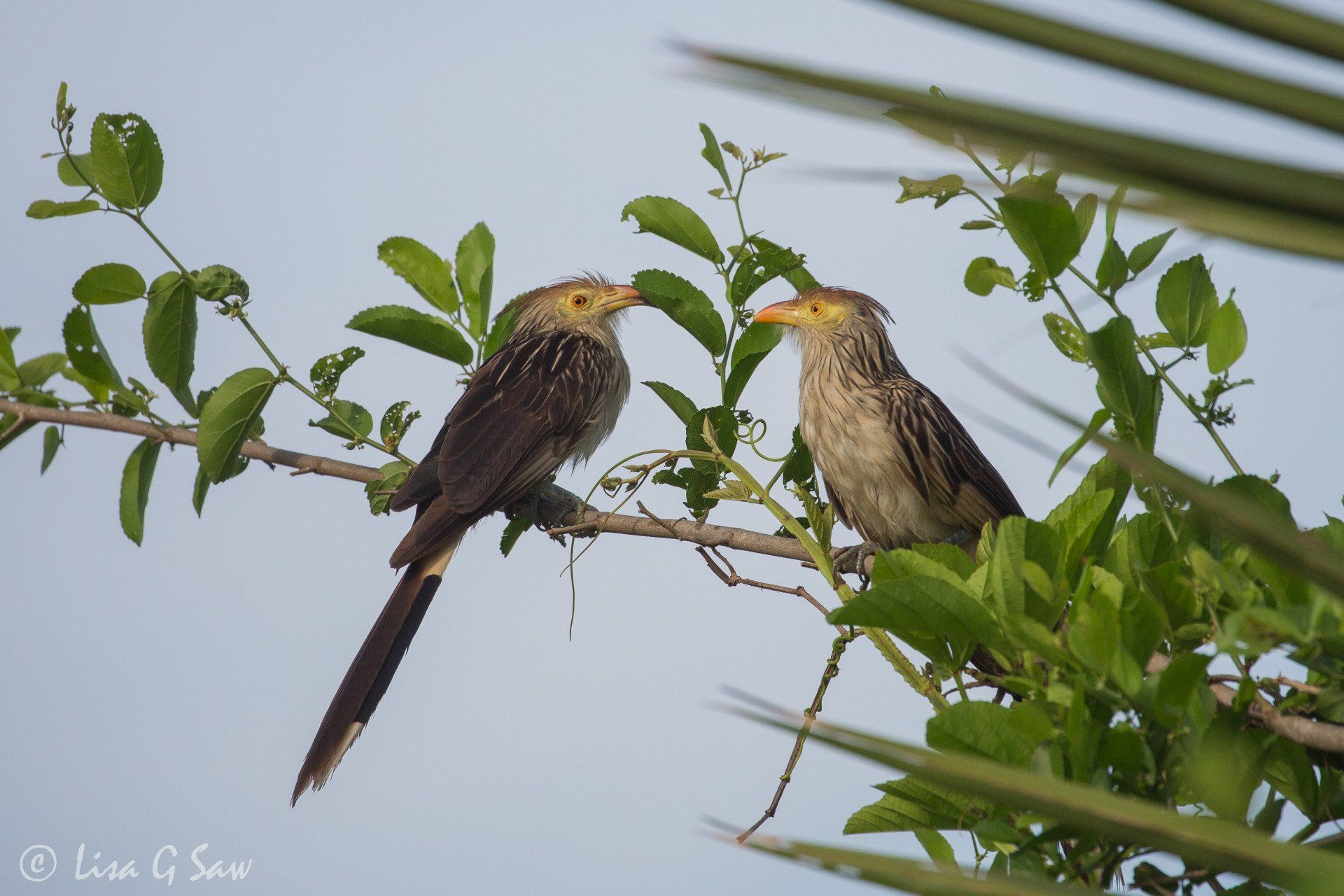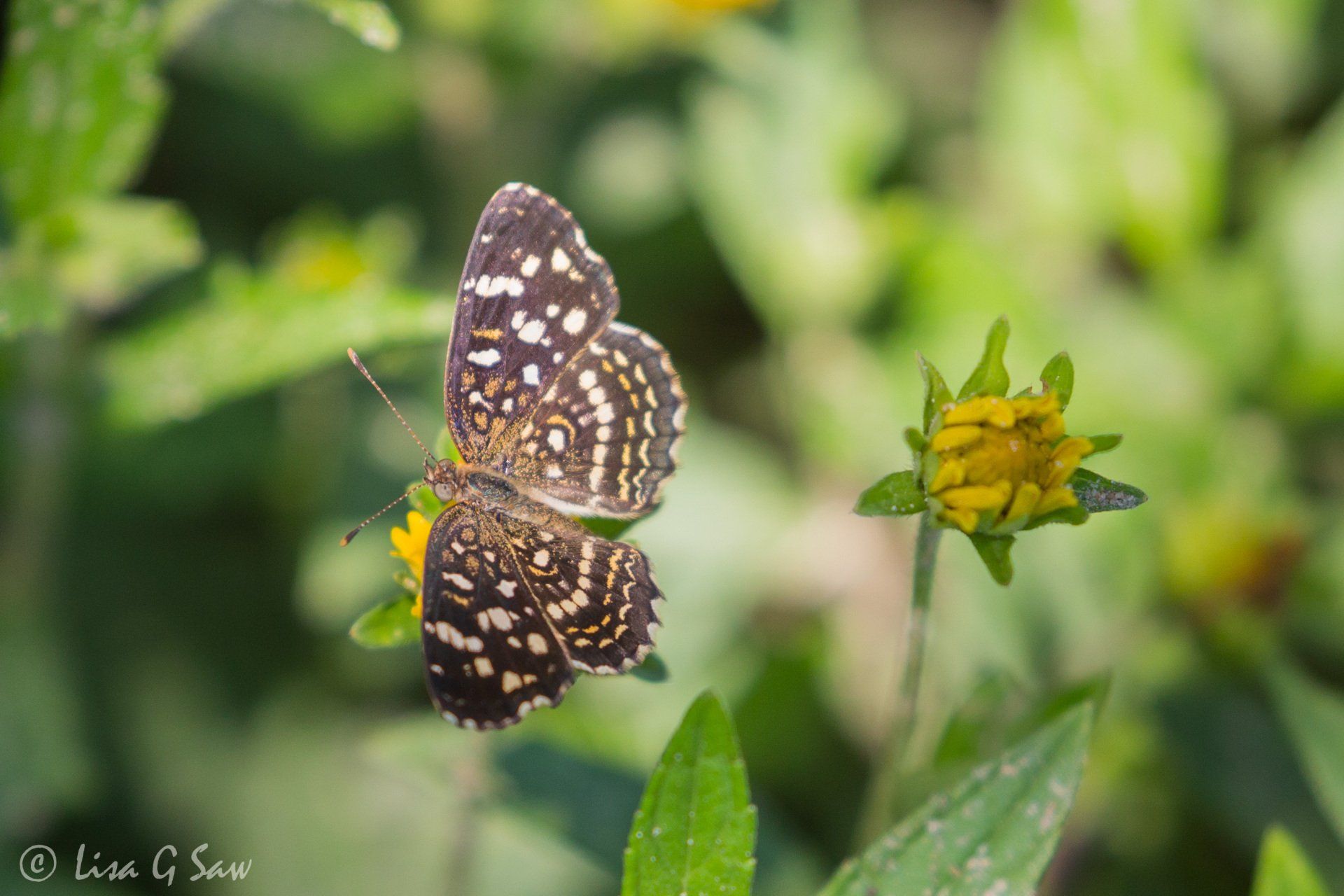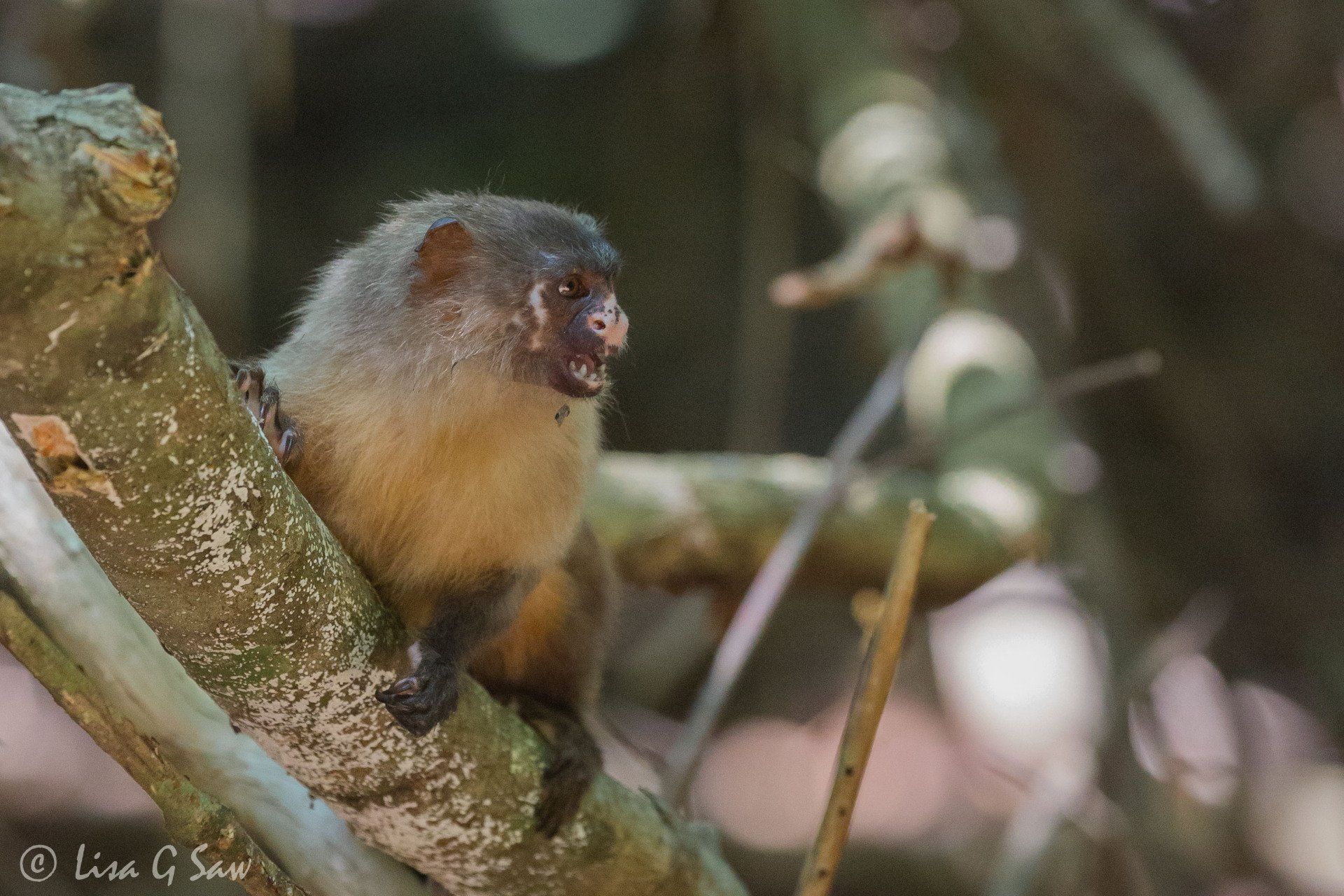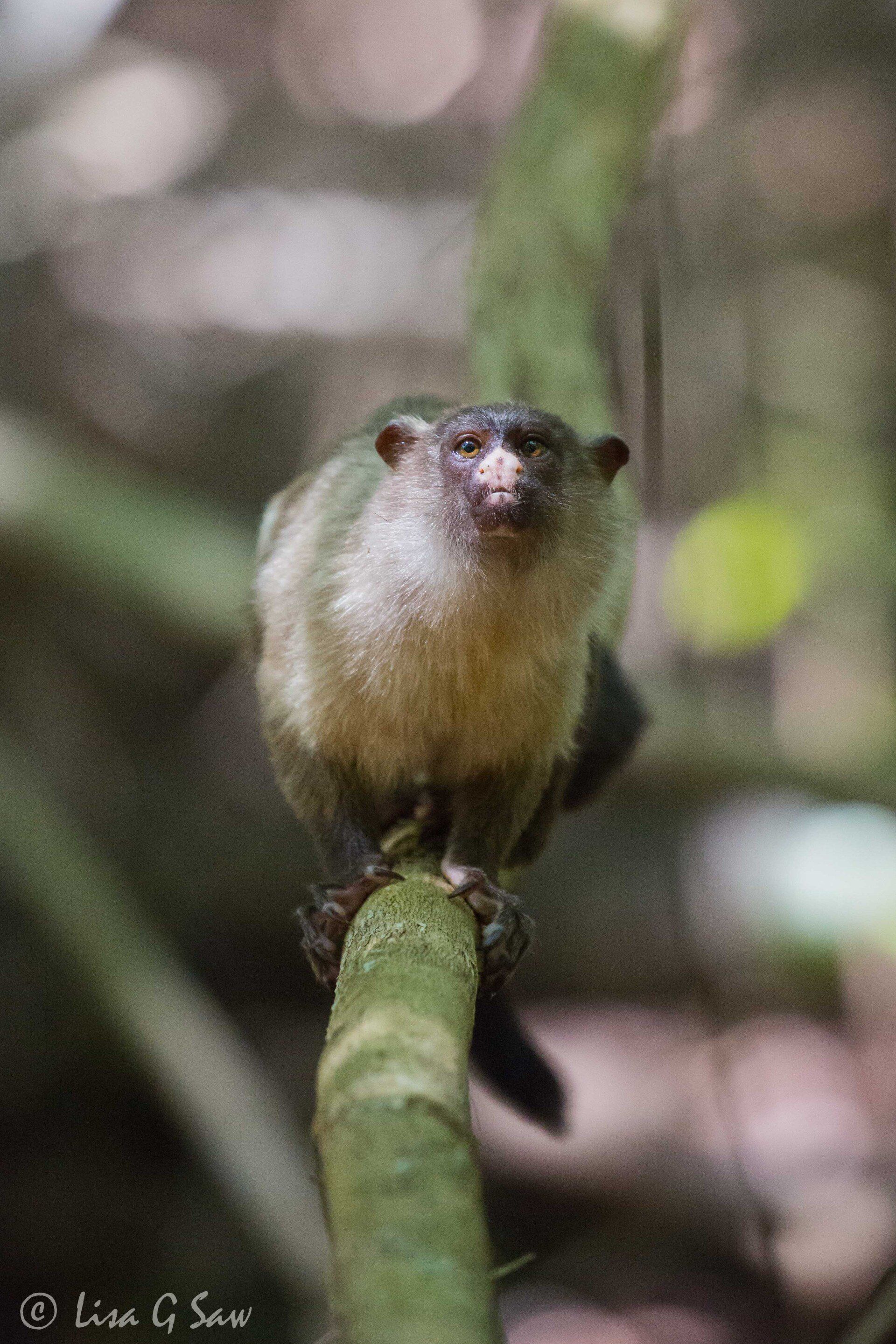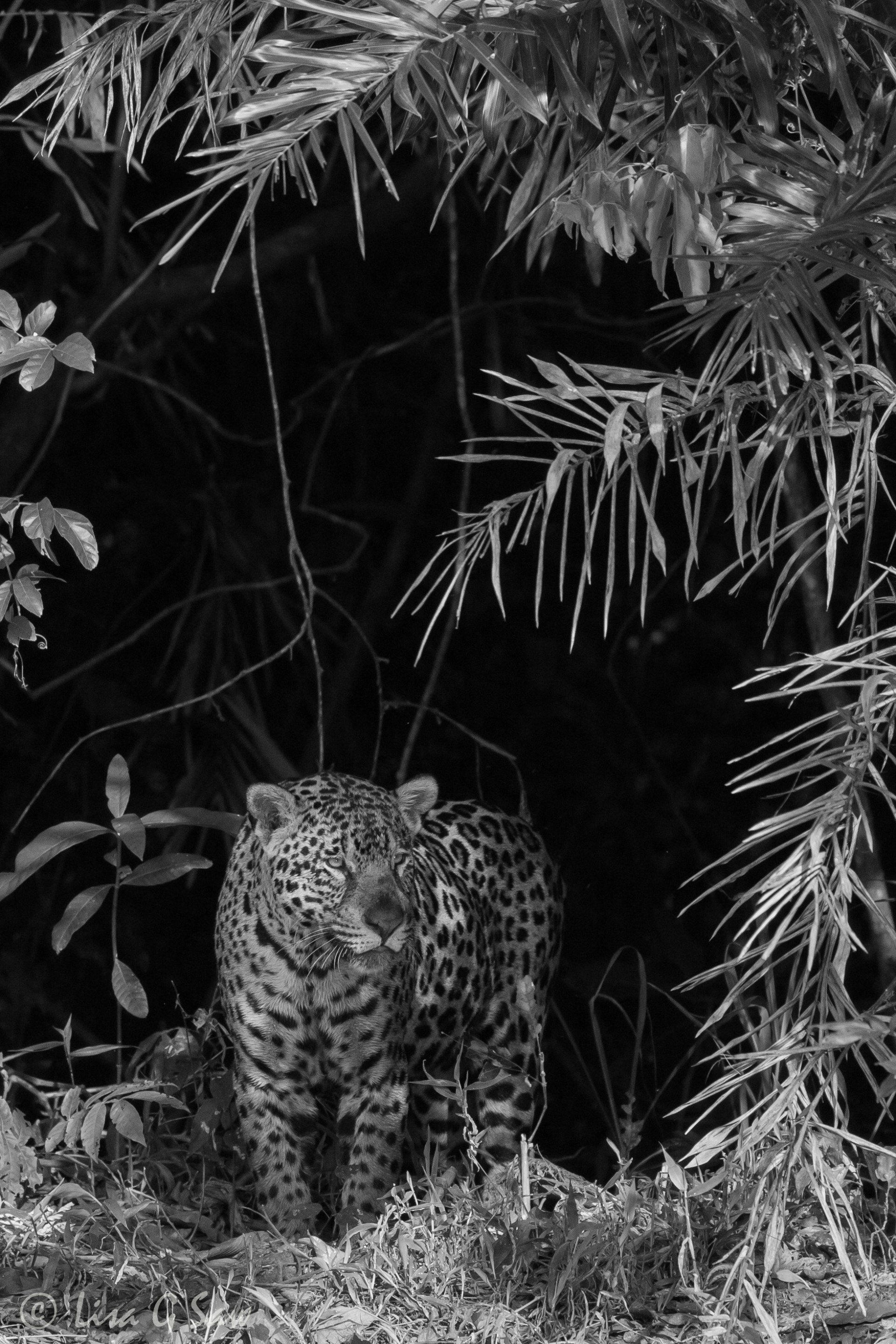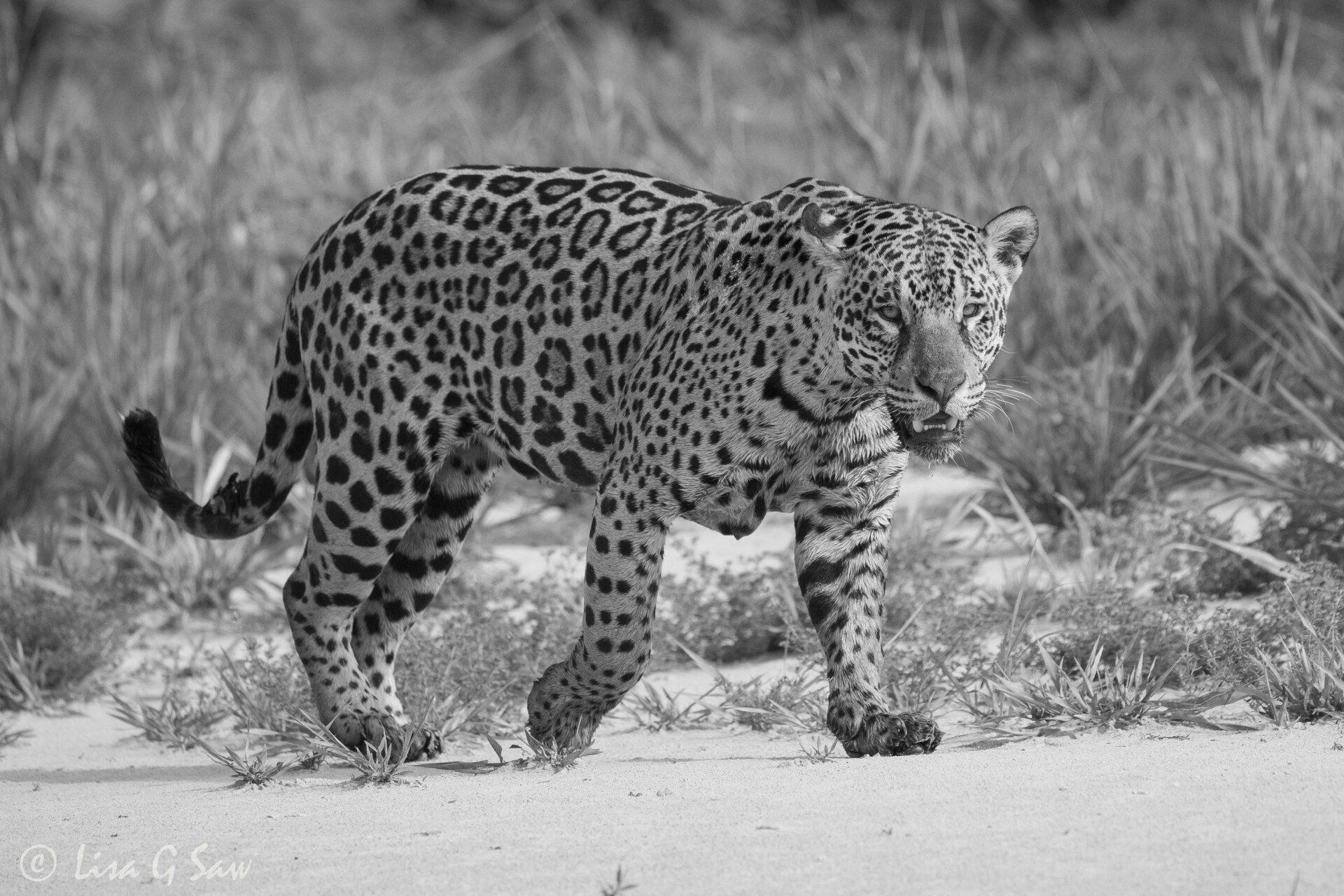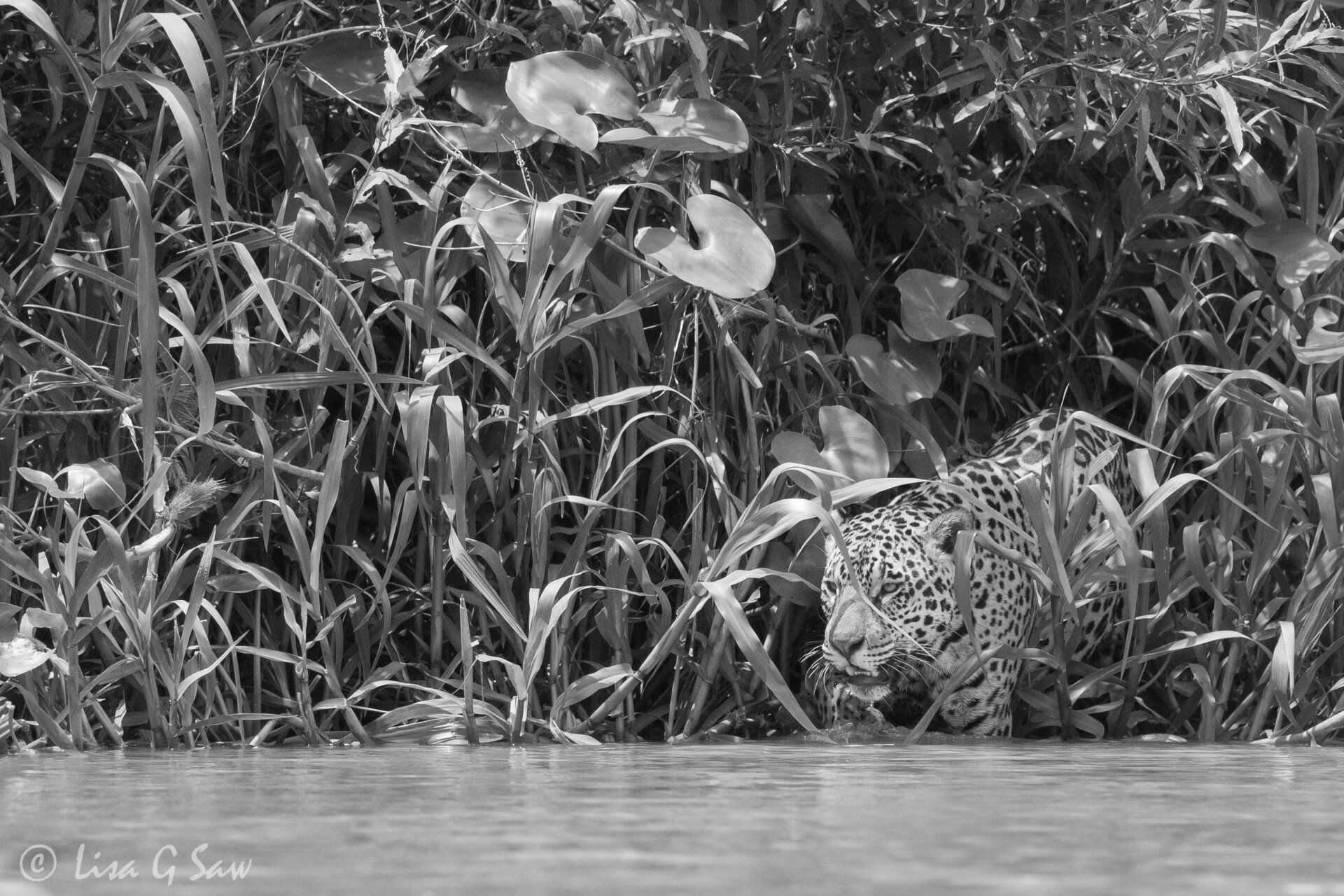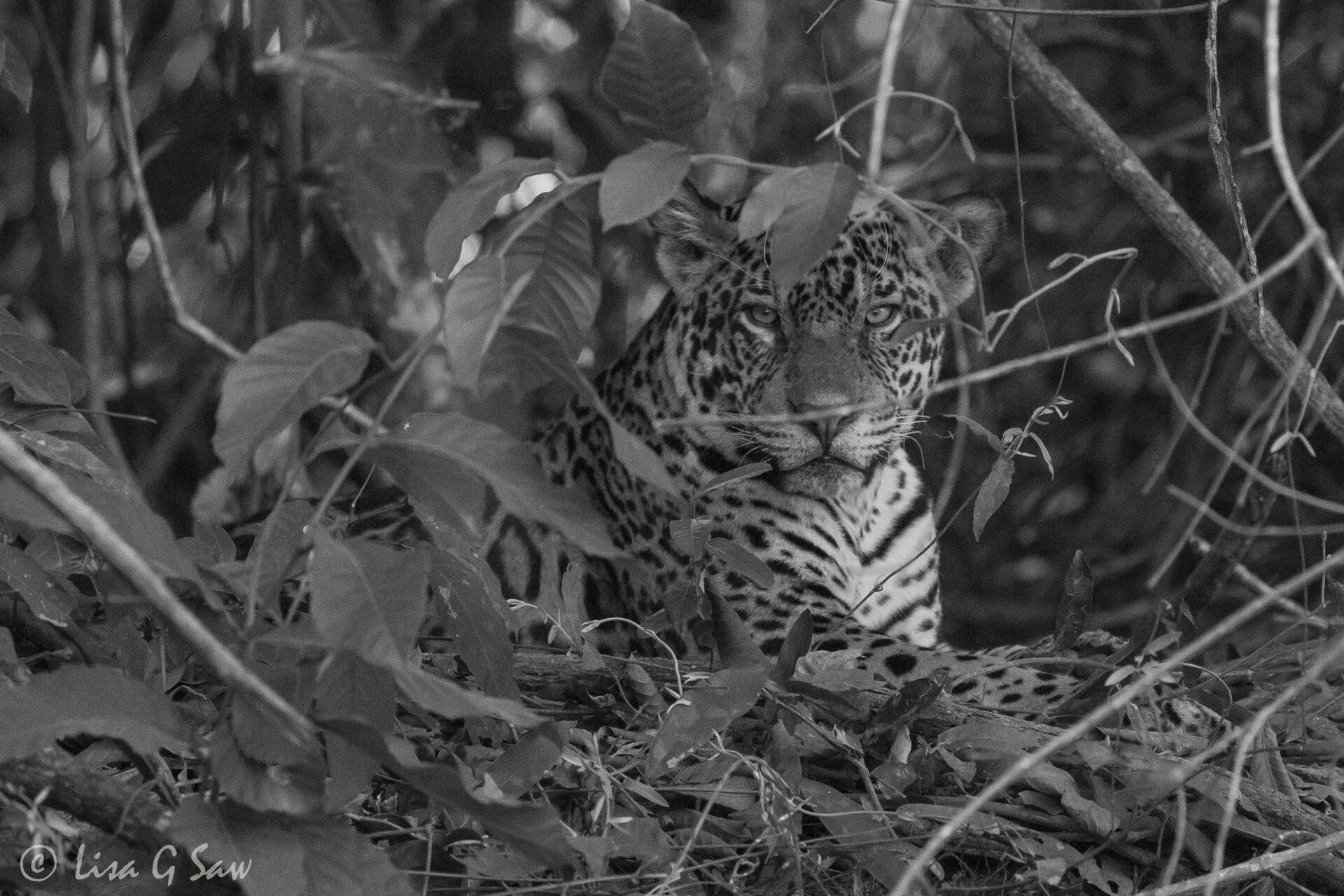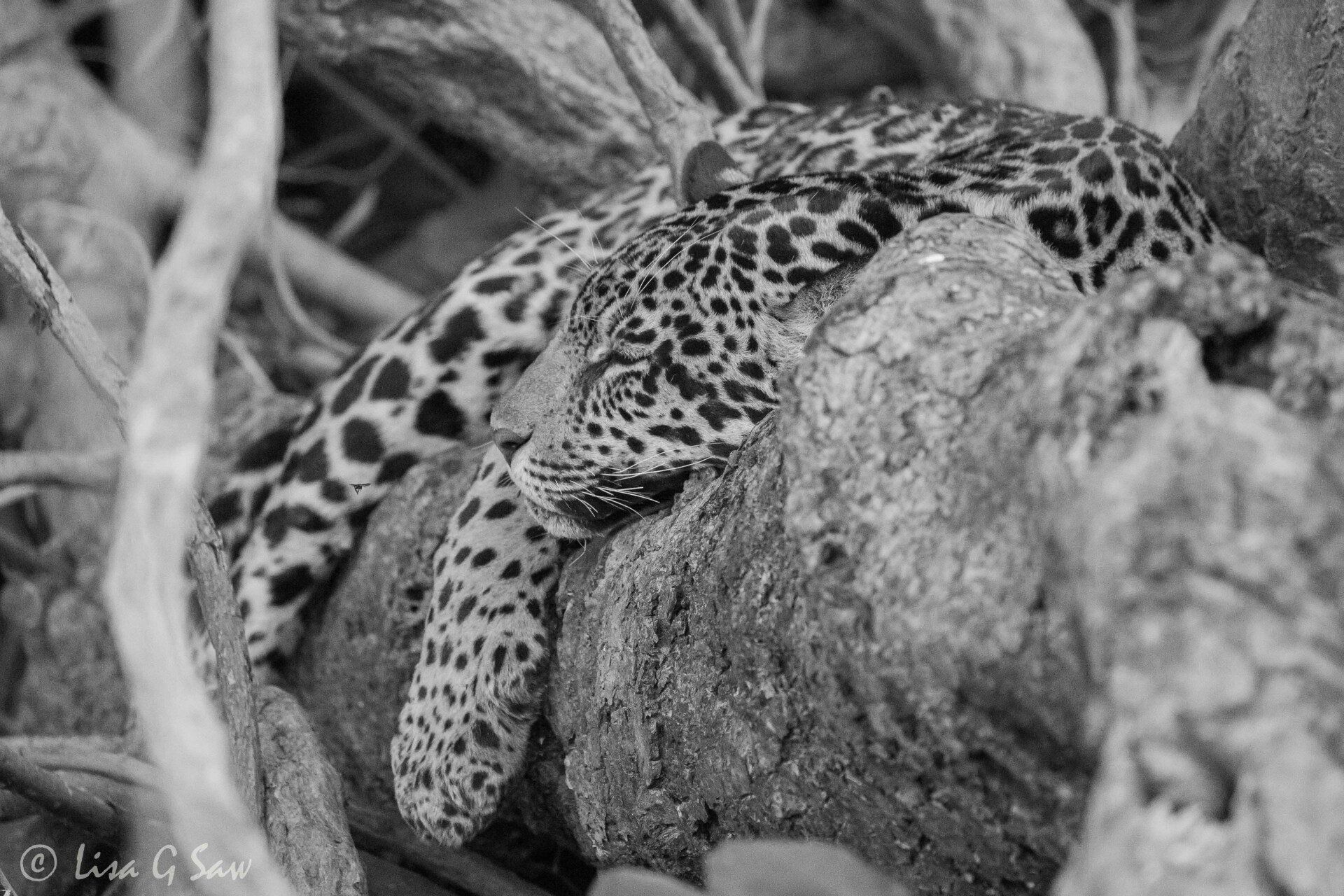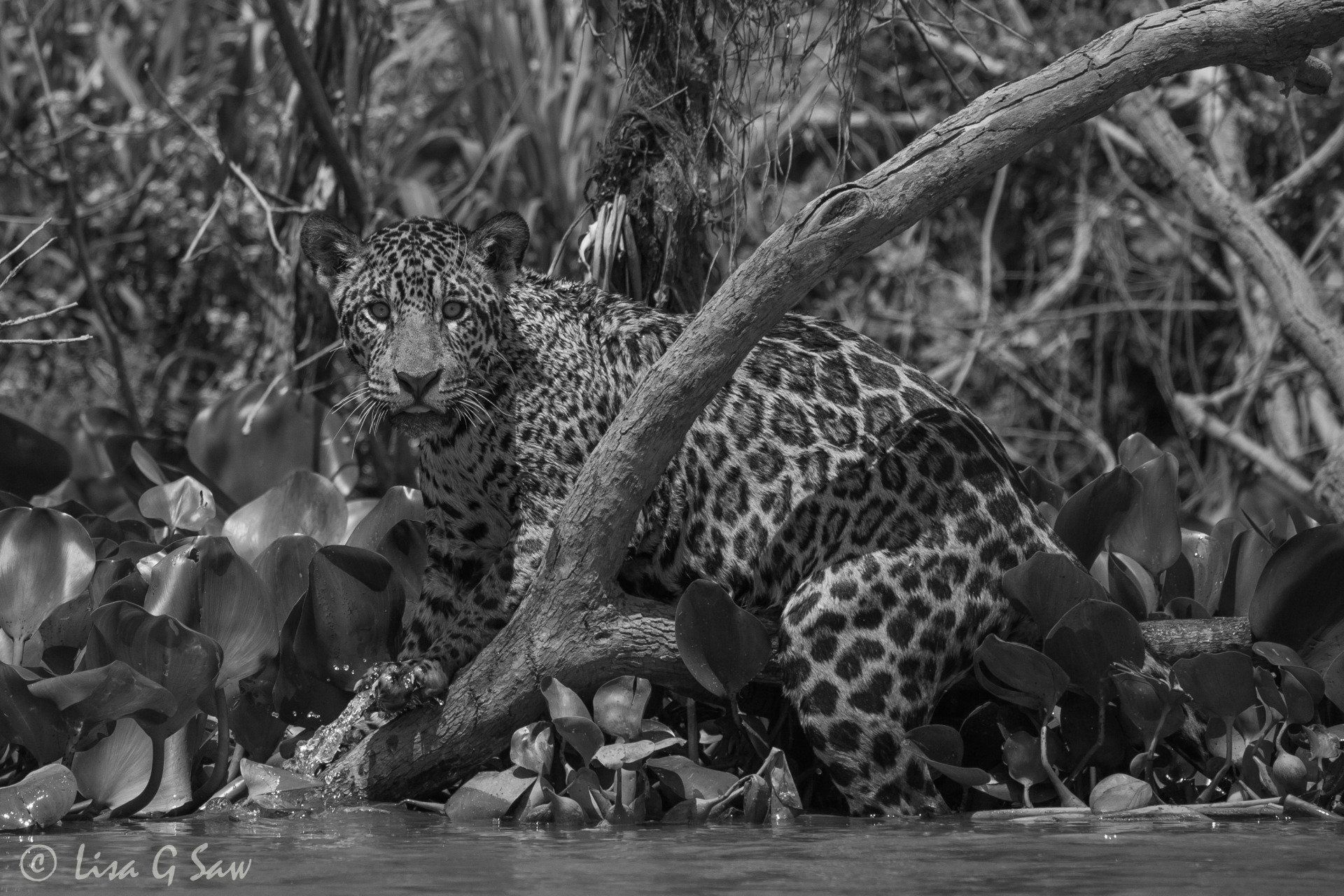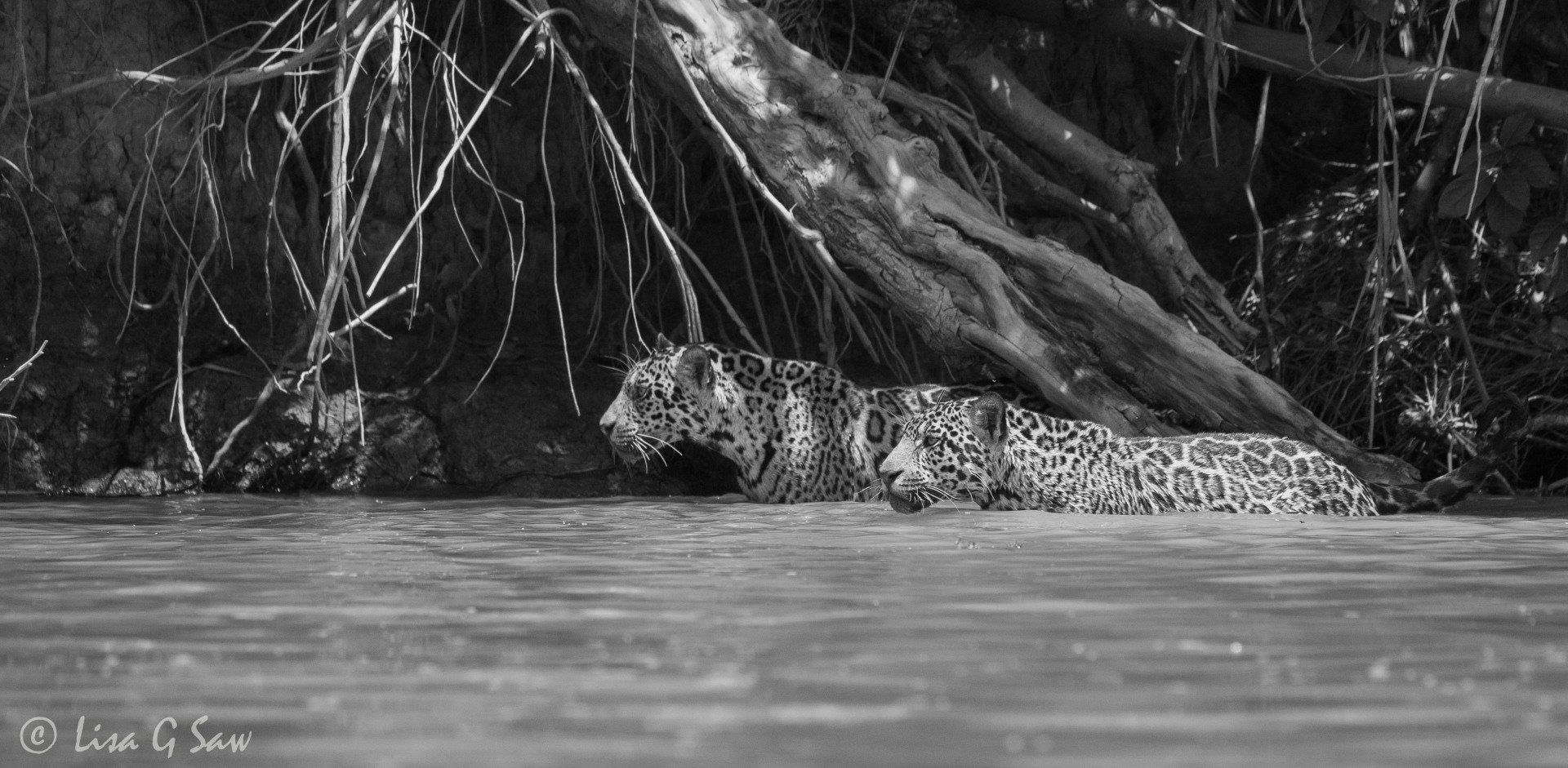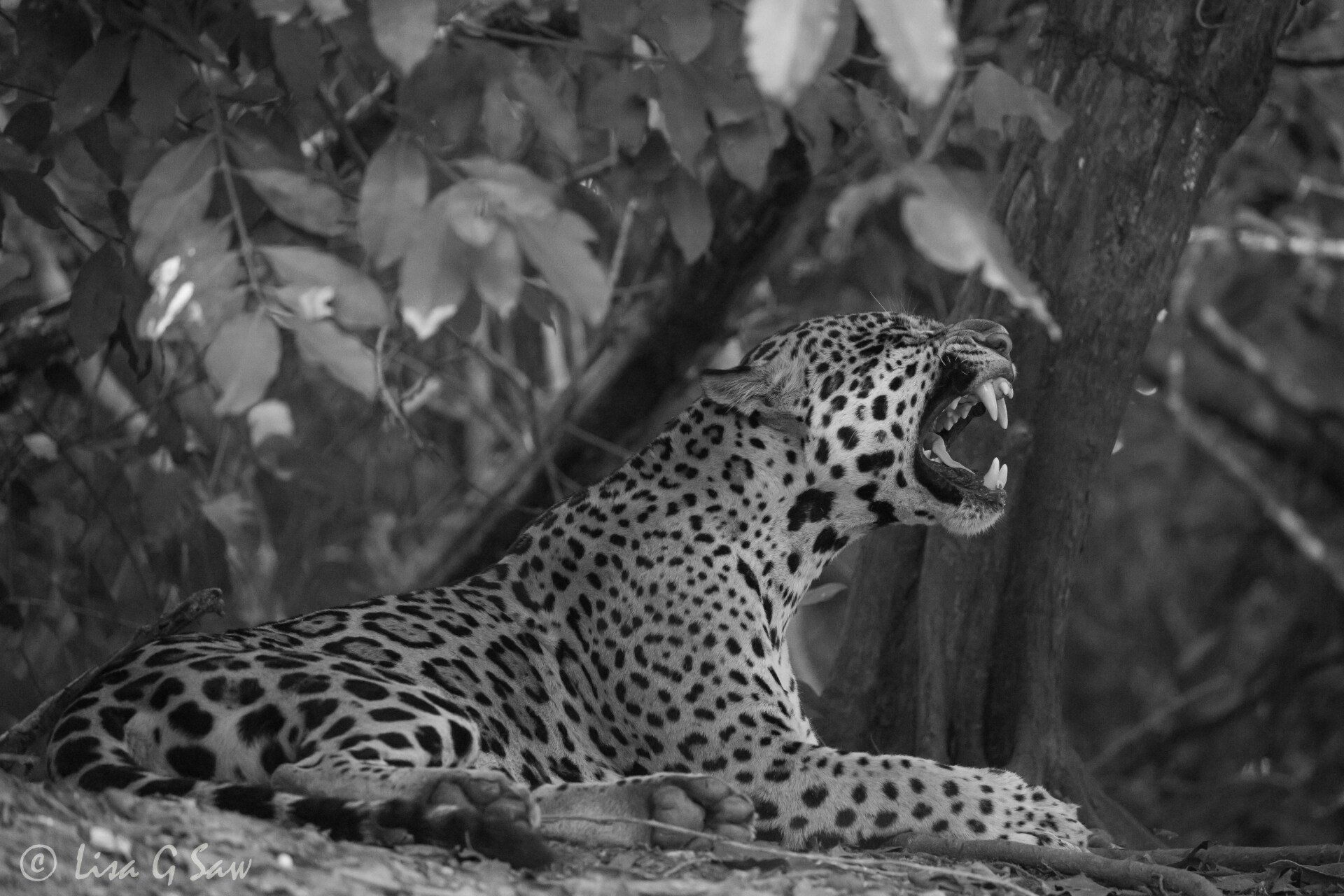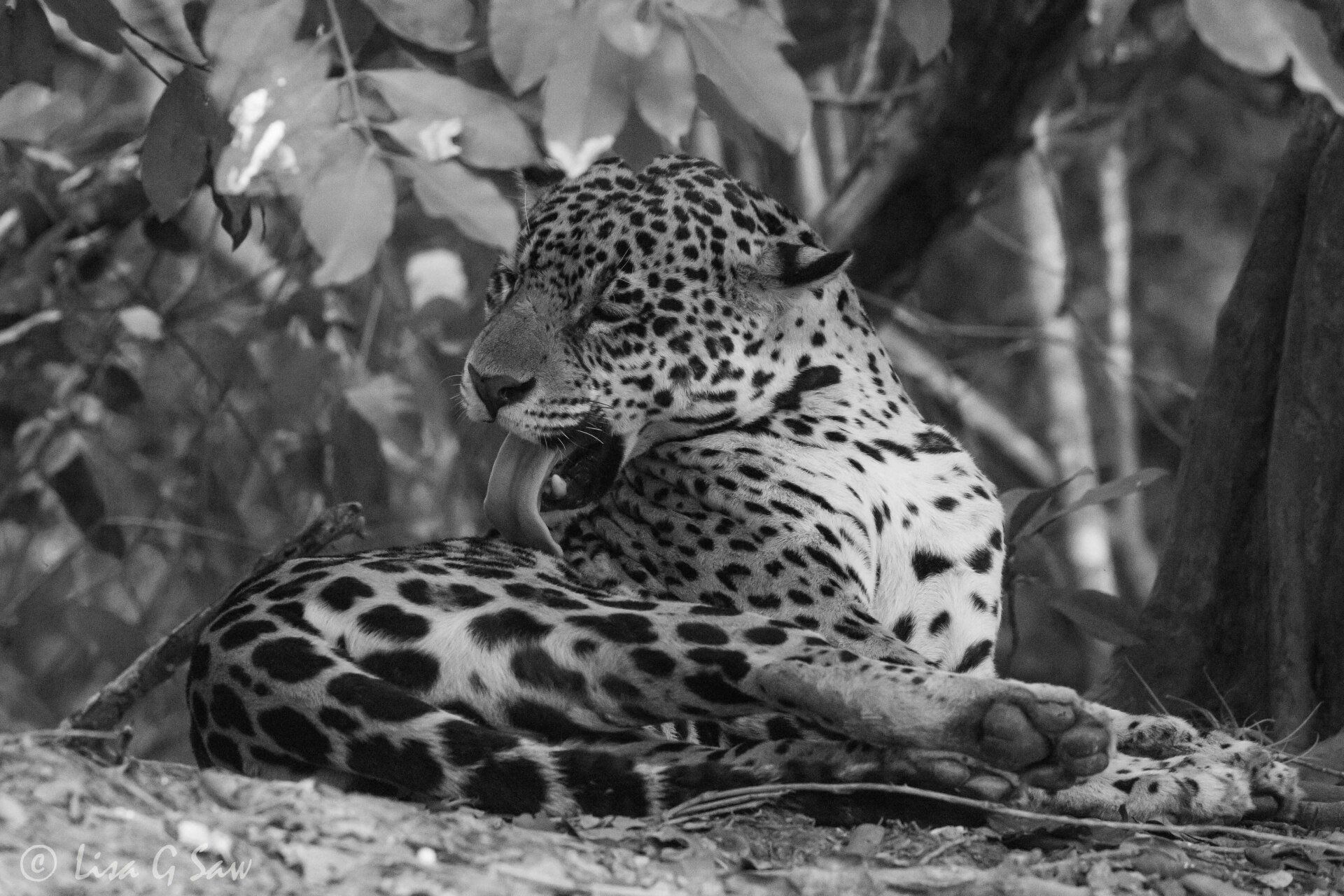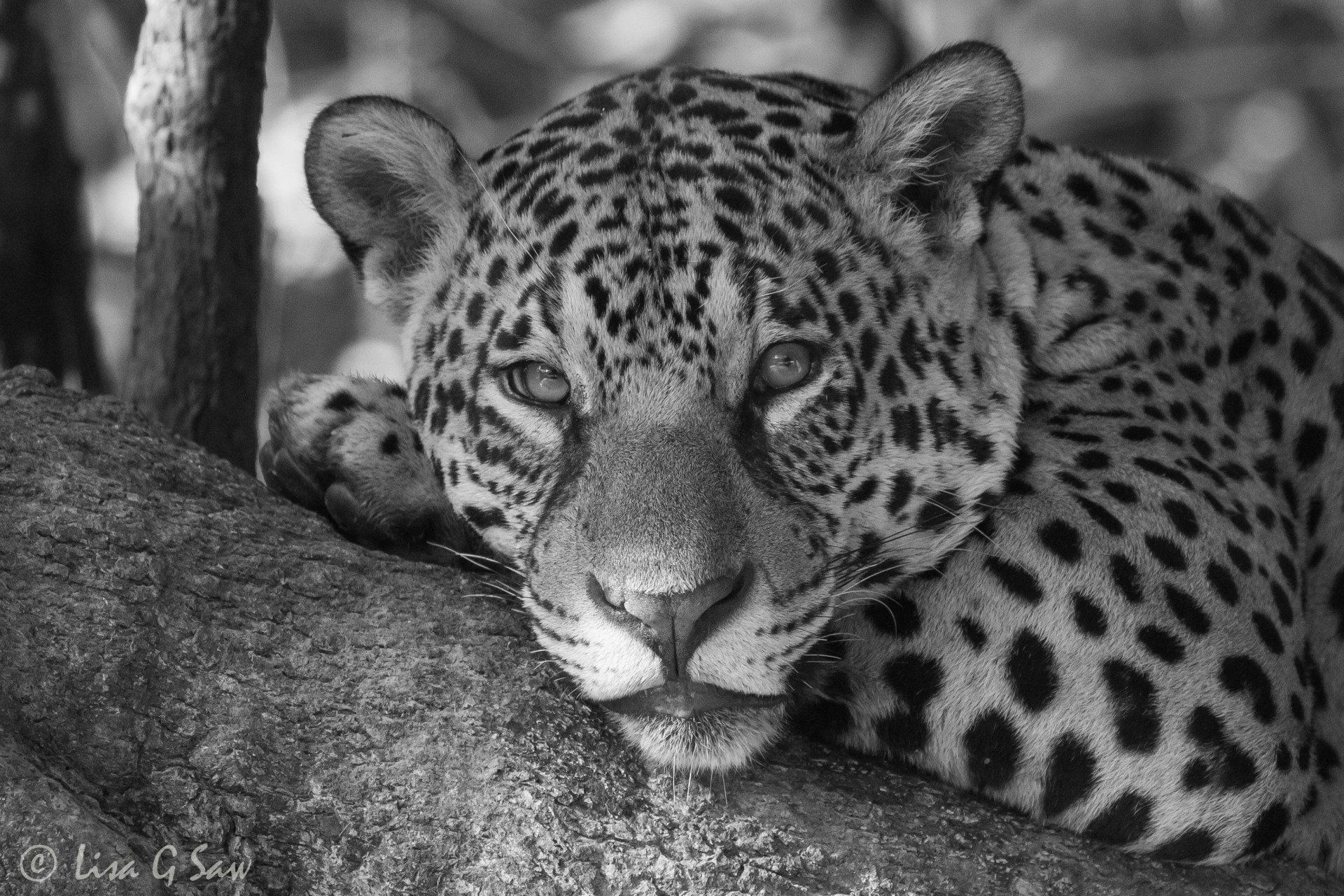JAGUARS IN THE PANTANAL
2018
Chestnut-Eared Aracari (Pteroglossus castanotis)
Rufescent Tiger Heron (Tigrisoma lineatum). Seconds before I took the photo, it had a good shake. The feathers on the neck in particular look all fluffed up!
Giant River Otter (Pteronura brasiliensis) here seen dining on a Catfish.
It's the longest of the mustalids, reaching up to 1.7 metres.
My first Jaguar sighting (Panthera onca). I love the sense of movement you get in this photo simply from the water dropping off the front paw as she's about to step forward.
Jaguars are largely solitary, oportunistic, stalk-and-ambush apex predators.
They are the largest cat species in the Americas and the third largest in the world, exceeded by Tigers and Lions. They are considered Near Threatened on the IUCN Red List due to a declining wild population since the late 1990s.
Female Ringed Kingfisher (Megaceryle torquata). The male of the species has a rusty-brown chest (no bluish-grey or white bands).
Female Amazon Kingfisher (Chloroceryle amazona). The male of the species has a broad chestnut breast band.
Sunset.
We were out on the water at first and last light, avoiding the hottest part of the day.
Cocoi Heron (Ardea cocoi), which is very similar to the Grey Heron (Ardea cinerea) we see in the UK. I think this might be a juvenile (duller colouration around head, greyish neck and no plume on back of head). It would explain why it struggled to eat this Catfish and ended up losing its dinner to a hawk!
The Capybara (Hydrochoerus hydrochaeris) is the largest living rodent. It's close relatives include Guinea Pigs, though there's a big difference in size. The height and length of a Capybara is similar to a Labrador, but it can be up to twice as heavy. They even make dog-like barks when threatened.
A Capybara pup suckling its mother.
It wasn't uncommon to see birds sitting on them (here a Cattle Tyrant). There's likely to be a mutualistic reason for this such as tick removal. I've seen this relationship between birds and other animals such as zebras and giraffes.
Immature Great Black Hawk (Buteogallus urubitinga)
Black-Collared Hawk (Busarellus nigricollis) flying off with a frog in its talons
Hyacinth Macaw (Anodorhynchus hyacinthinus). It's about 1m in length, making it the longest parrot species - also the largest. Sadly, this stunning bird species is considered Vulnerable on the IUCN Red List.
Nutcracker.
Macaw's have very strong beaks and can break open even the hardest of nuts, like an Acuri Palm nut, as seen here.
The dots and markings on the face of each individual Jaguar are unique. On their body they have rosettes with one or more dots in the centre. Leopards also have rosettes on their body, but without dots and they're more densely packed than Jaguars.
Twin Boys.
These juveniles would be between about two and four - old enough that they're no longer with their mother, but not yet sexually mature and ready to breed, competing each other for females.
In the Pantanal it is common to see Jaguars during the day because that's when their prey species are most active, such as Capybara.
Not all cats hate the water! Jaguars and Tigers will use water to cool down and hunt prey.
The Crossing.
The two brothers we'd been tracking along the water's edge looked as though they wanted to cross the river, only all the tourist boats were in the way. As soon as the guides realised there was a parting of the boats, giving both jaguars space to swim across. The confident one went first.
The second one started to cross, then changed its mind. For a moment, the brothers silently stared at each other from across the channel, and then the less confident one went for it again. It was so wonderful to witness the moment. They appeared to be gliding effortless through the water, though I'm sure their legs were frantically doing doggy paddle beneath the surface - or perhaps for them it should be referred to as catty paddle!
Yacare Caiman (Caiman yacare).
One of its distinguishable features are the dark blotches seen particularly on the lower jaw. We were lucky to be passing by at the moment this caiman snapped up a Catfish for dinner.
The Eye.
This caiman was resting in the water alongside our boat, whilst we were waiting for some jaguar activity. It was fabulous to get such a close up view of its head and appreciate its amazing colouration and markings, especially in the eye.
Darter (Anhinga anhinga) having a fishy snack. The word Anhinga comes from the Brazilian Tupi language and means 'Snake Bird'. It's easy to see why it was called this because of the way only it's head is seen above water as it swims.
Giant River Otters are diurnal, meaning they're active during the day. The cream markings on the "bib" are unique and how to tell them apart. Even the otters themselves have been witnessed "periscoping" (raising the chest up out of the water) so they can identify each other.
We seldom saw solitary otters out on the water. Giant River Otters are a social species, which is atypical of mustalids. Their family groups usually have between three to eight members. Watching them interact with each other was wonderful to witness.
Rufous-Tailed Jacamar (Galbula ruficauda).
It's an elegant, brightly coloured bird with a long bill and tail. It moves at lightening fast speed so it can catch flying insects. One second its perched on a branch, the next...
Taking Flight.
I love all the beautiful colours in its tail and wings. We watched this one for ages and it took looks of practice to get this shot and required an extremely fast shutter speed (1/8000 sec) and only worked so well because it was in good light.
Golden Pterostigma.
That's the group of specialised cells that can be seen on the wings near the tip.
I haven't managed to confirm this species of dragonfly yet, but it's most likely to be a Skimmer.
Flame-Tailed Pondhawk (Erythemis peruviana) is a species of Skimmer dragonfly that's hard to miss.
Close up of a Common Water Hyacinth flower (Pontederia crassipes - formerly Eichhornia crassipes).
Jaguars are good at climbing trees, though we were told it's not that common to see. However, these sisters (above and below) are apparently known for such behaviour and were photographed about 50m apart. You can read more about the encounter with them in my blog.
I love the way this female has her legs draped over the fallen tree. It looks like the effort of moving around in the heat was all just a bit too much.
Green Iguana (Iguana iguana).
Our guides and drivers were exceptionally good at spotting wildlife, even high up in the trees, like this one. I've cropped the photo so it gives the appearance we were much closer than we actually were.
Juvenile Black Skimmer (Rynchops niger).
This one clearly isn't ready to feed on the wing yet, the way the adults do (hence the name). They fly low with their lower mandible in the water, skimming the surface, for small fish, insects, crustaceans and molluscs.
Adult Pied Plover and chick (Vanellus cayanus). Although this bird physically resembles the plovers in shape and size, based on taxonomy, it's more correct to refer to it as a Pied Lapwing.
An adult Large-Billed Tern (Phaetusa simplex) with its striking long yellow bill.
The great thing about being on the river was how close to water level we were giving up a more intimate view of these birds at their eye level. The downside was the movement of the water sometimes made it challenging to stay as still as possible when capturing the image.
This is a juvenile Large-Billed Tern. Notice the lack of black on the head and the bill is not yet yellow. I'm not sure if this bird is looking at my camera or the insect flying right in front of it.
Big cats lick their fur to cool down, to remove unwanted parasites, but also to remove their scent, which helps them go unnoticed when stalking prey.
Lapping The Water.
Domestic and wild cats have a unique way of lapping up water. Only the top of the tongue makes contact with the surface. They then flick the tongue back, bringing with it a small column of water. They quickly have to close their mouth to catch the water before it falls.
Lurking In The Shadows.
I do love these slightly more mysterious images (above and below) where the jaguar is hiding in the shadows of the tree with just a small shaft of light shining on a small part of its face.
Last Light
Firelight.
I didn't get much time to compose this photo, which was taken from inside our vehicle and on the move. I love the shape of the dead tree and the stunning colour of the clouds at sunset.
A Caiman hiding amidst the Giant Salvinia (Salvinia molesta).
Communal Nesting.
Two Yellow-Rumped Cacique (Cacicus cela) in a tree covered with nests like these.
Greater Rhea (Rhea americana).
Just like Emus and Ostriches, the Greater Rhea is a flightless bird.
Southern Lapwing (Vanellus chilensis)
Green-Barred Woodpecker (Colaptes melanochloros)
Two Juvenile Guira Cuckoos (Guira guira).
A subspecies of the Cuban Crescentspot butterfly (Anthanassa frisia hermas).
Black-Tailed Marmoset (Mico melanurus).
I was quietly walking along a forest boardwalk when I saw two marmosets hunting for food. They were only a few metres away and totally ignored me. This was the last wildlife encounter of my trip and a fabulous way to wrap up my holiday.
Some images work really well when converted to black and white...
Chilling Out
This is one of the brothers, when they were skirting the edge of the river before swimming across. It had just slipped off the branch and glanced across in my direction. It's almost as if he was looking to see if anyone had noticed!
The Yawn.
Those teeth can do a lot of damage! Jaguars have a powerful bite and can crush the carapace (shell) of turtles and tortoises. It kills mammalian prey by biting through the skull.
This jaguar seemed completely unperturbed by the presence of a few boats below the tree on which it was sprawled out. It wasn't even that high above us. I think there's something very relaxed about its position, but the look in the eyes tell you that this is no pussy cat!
